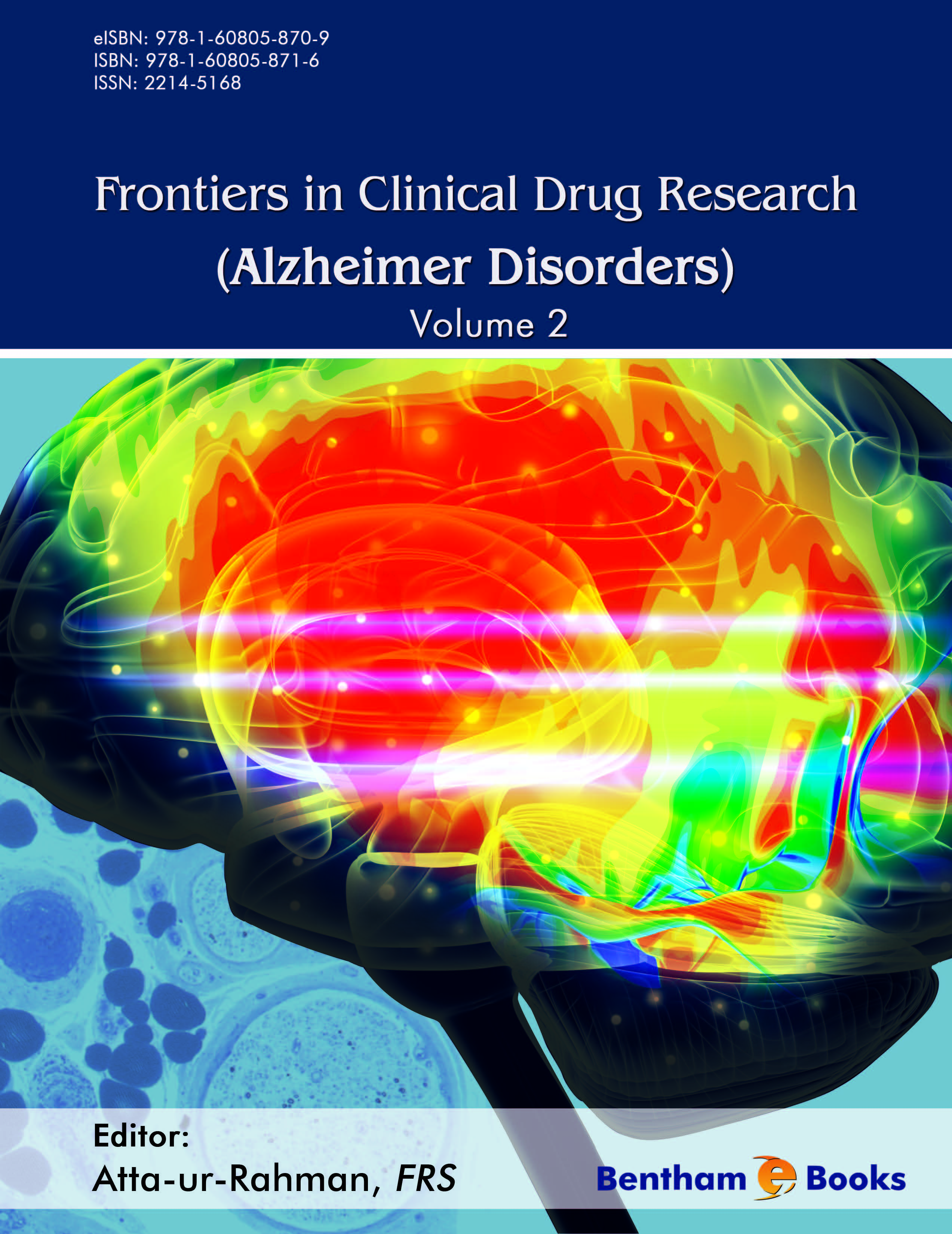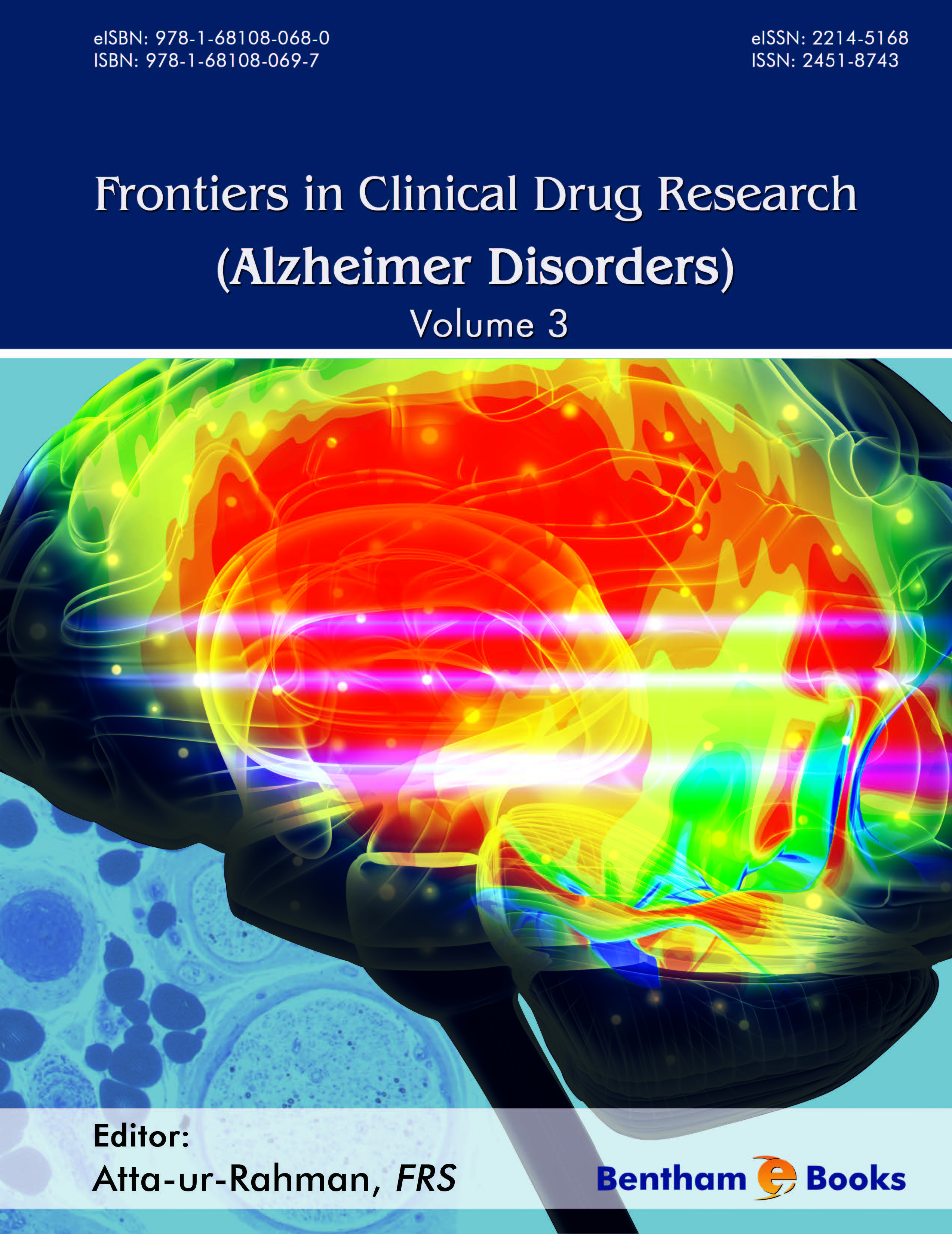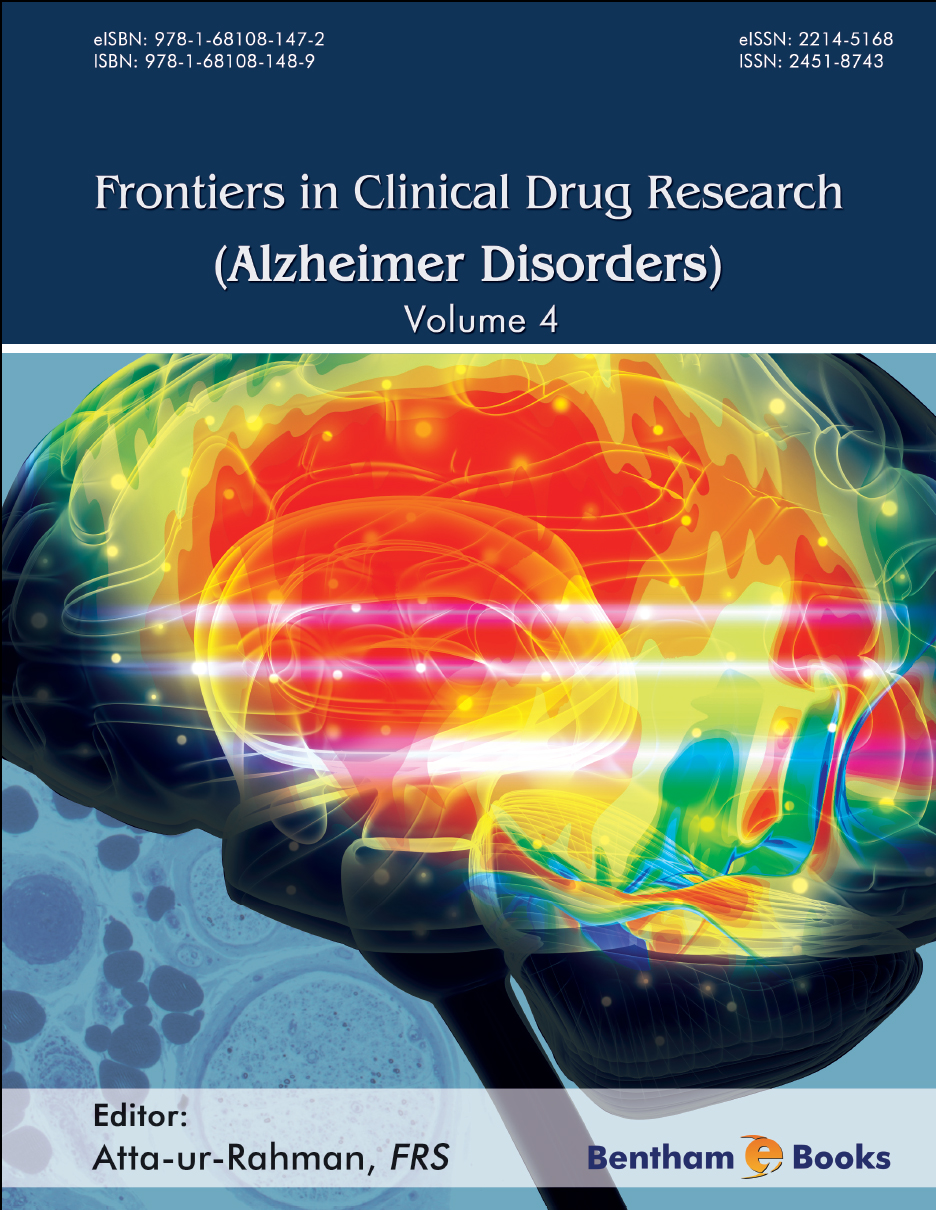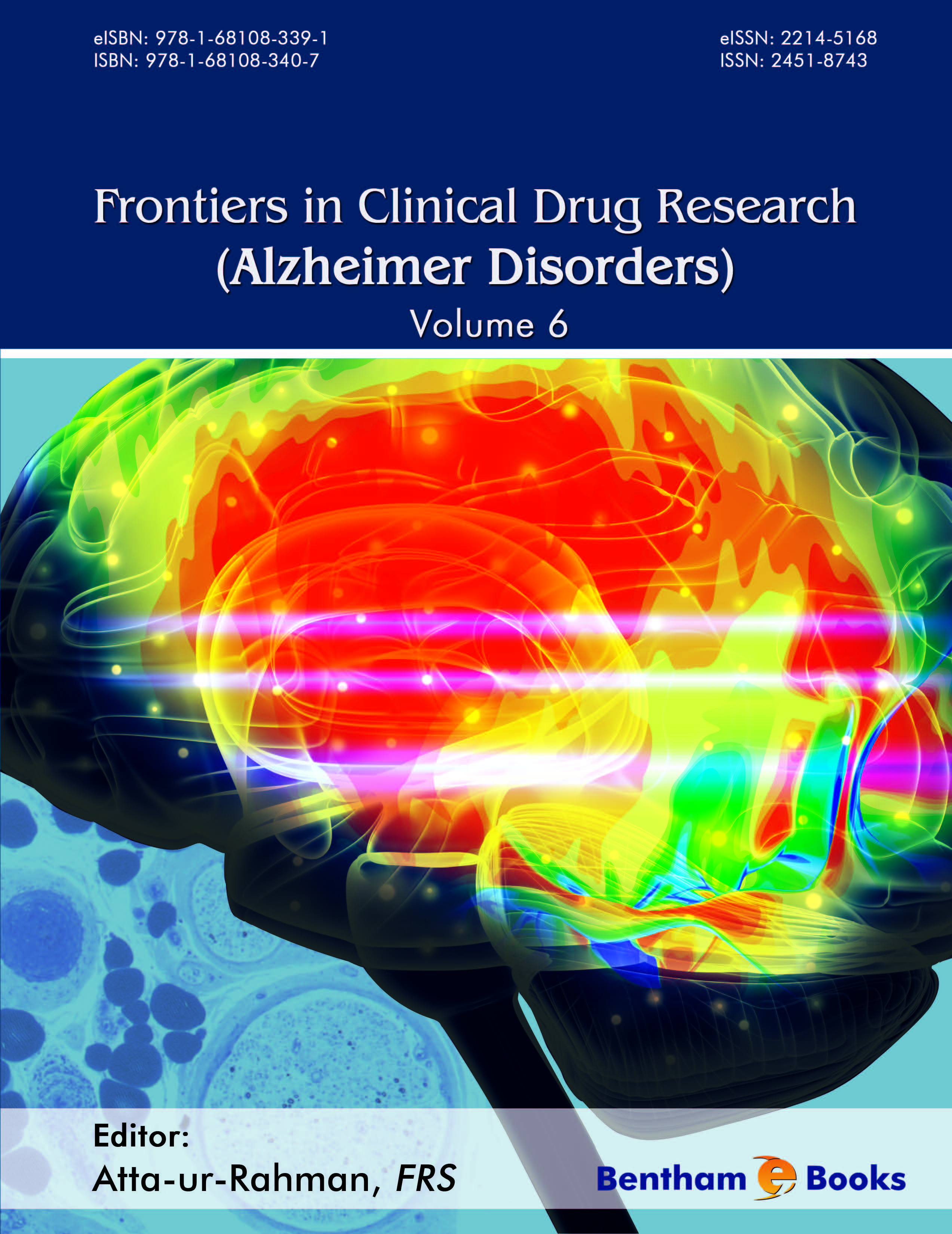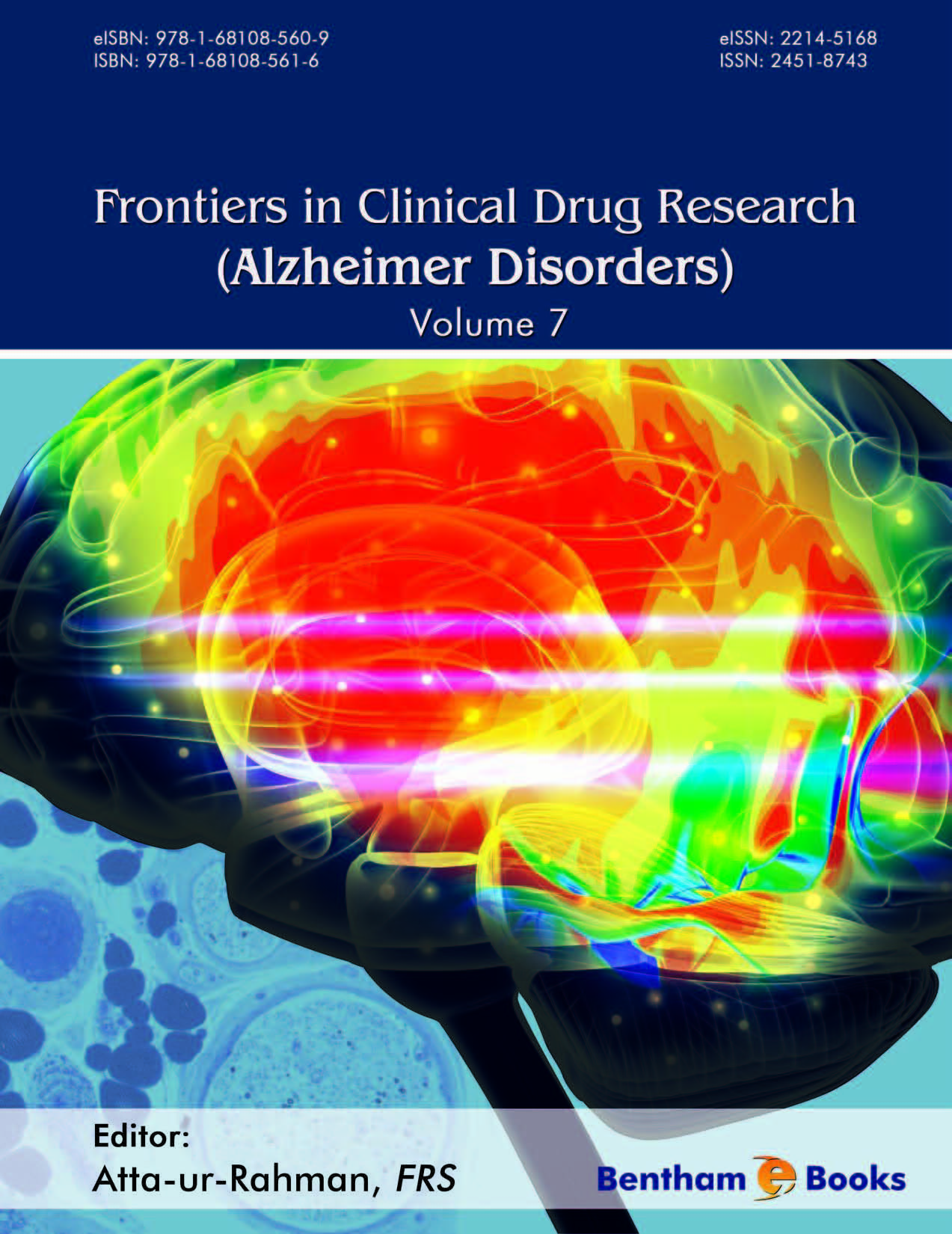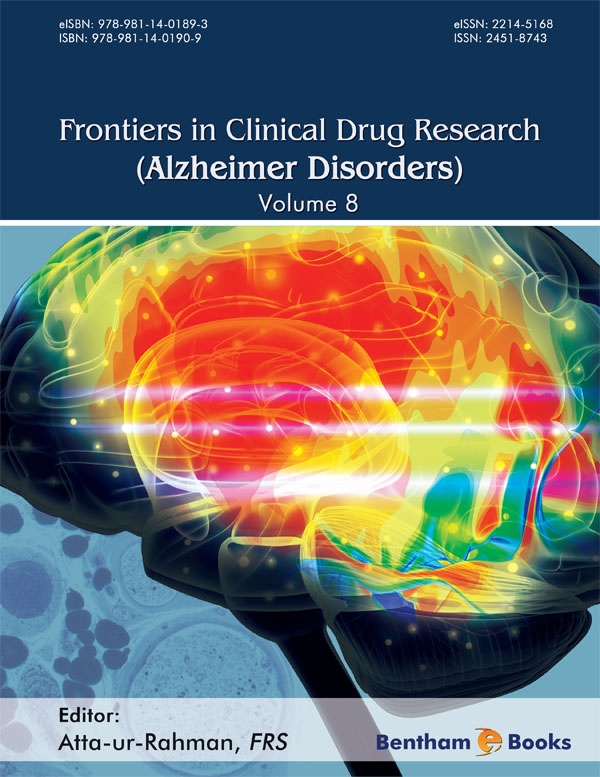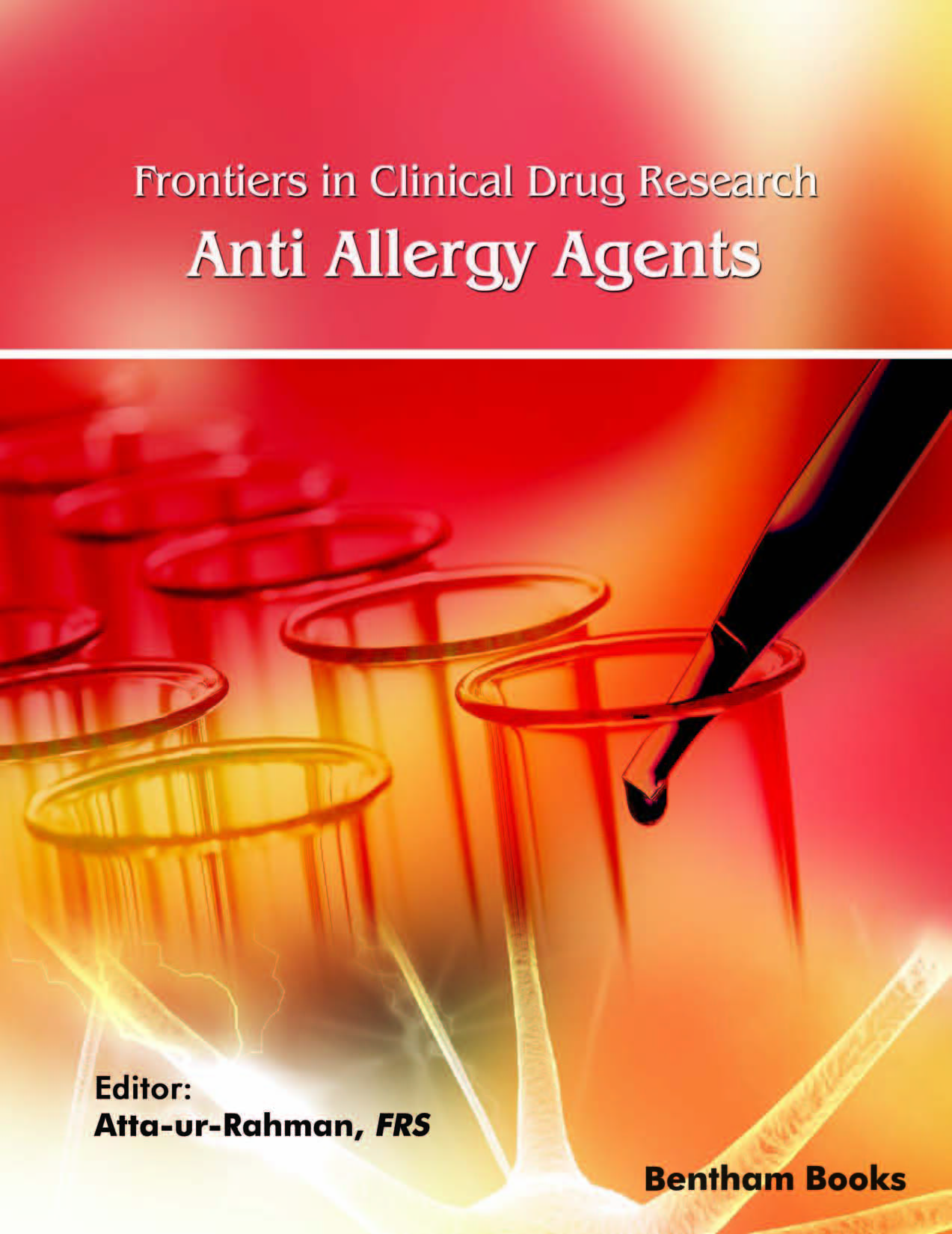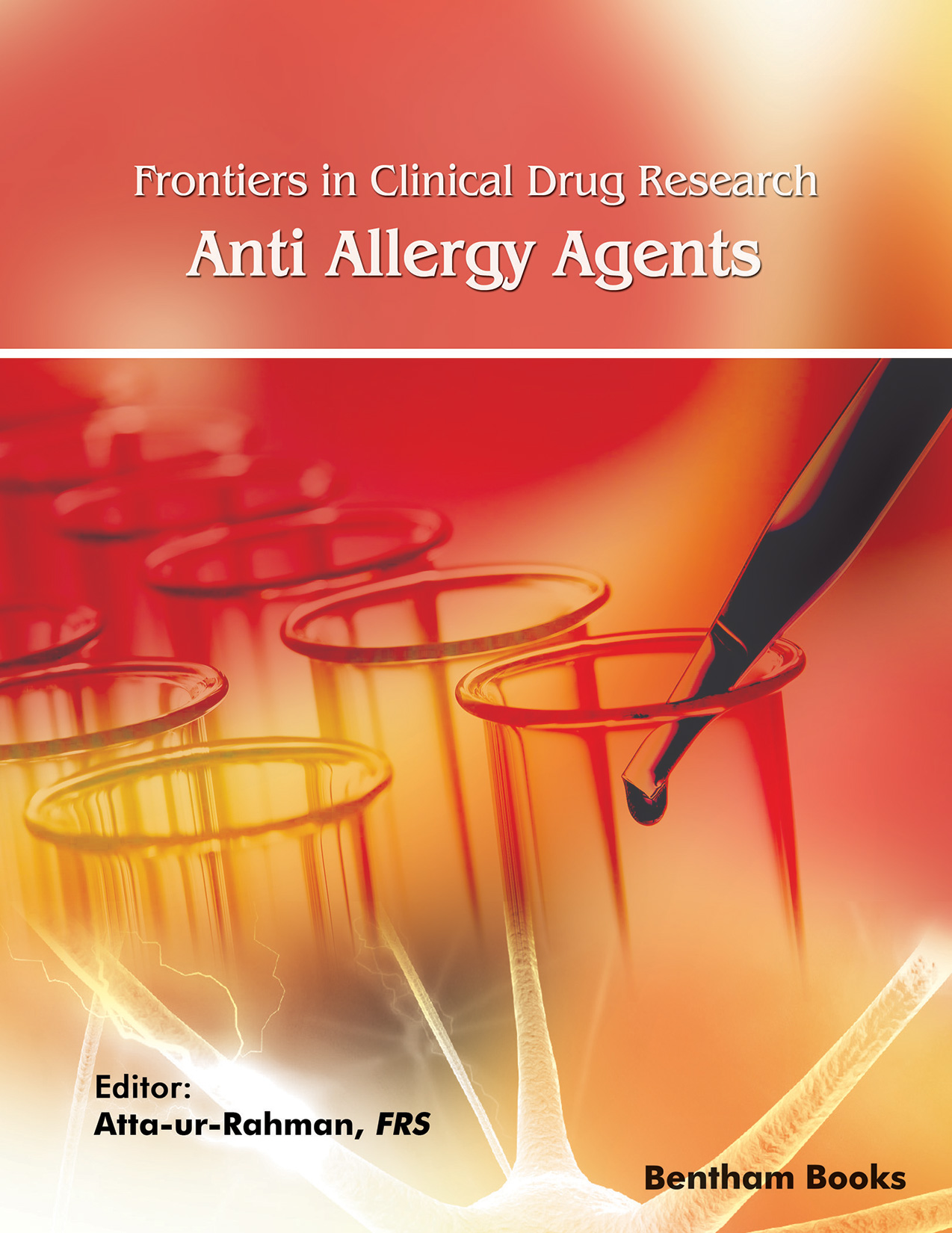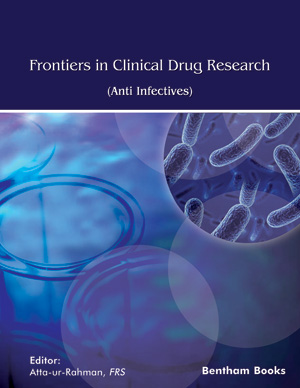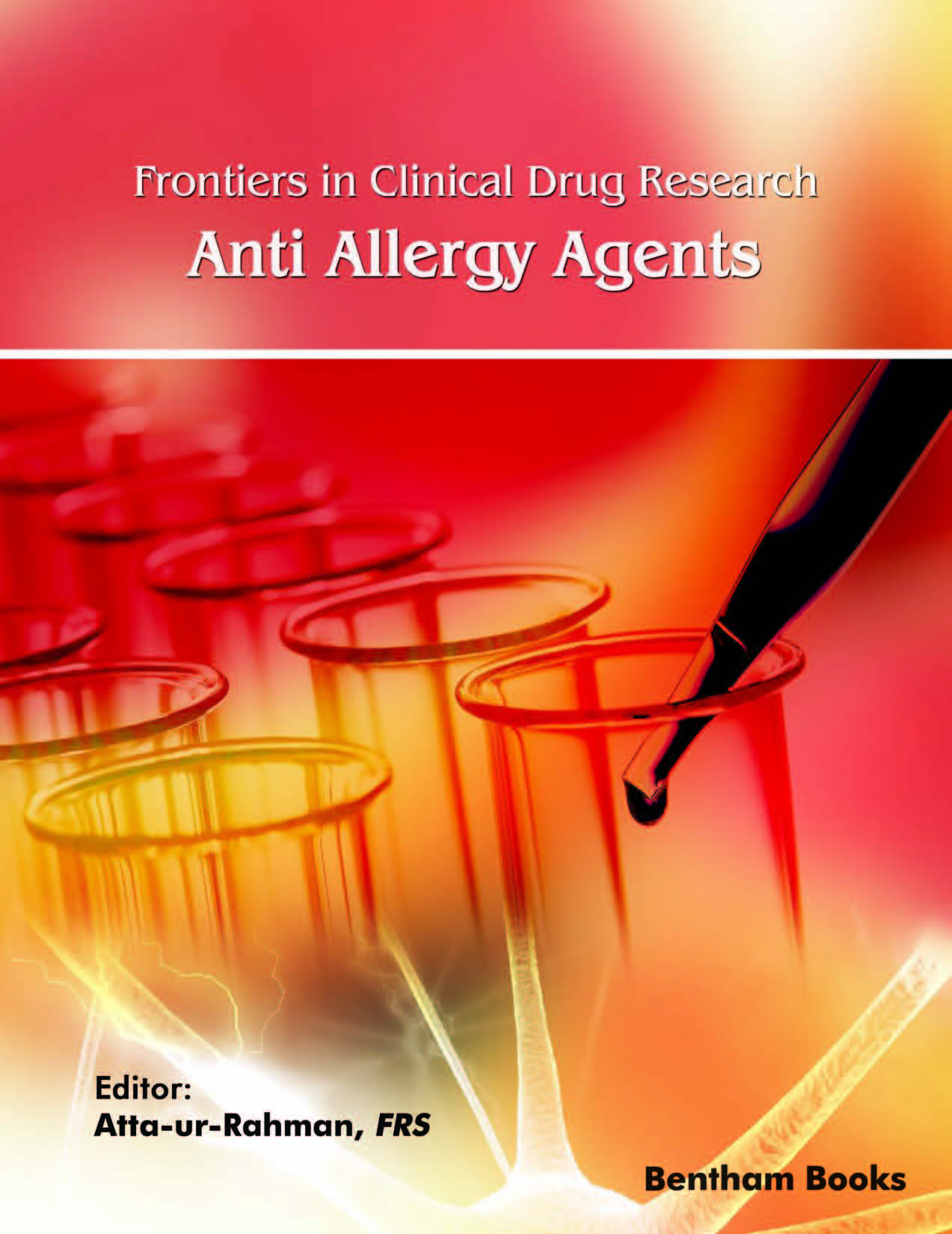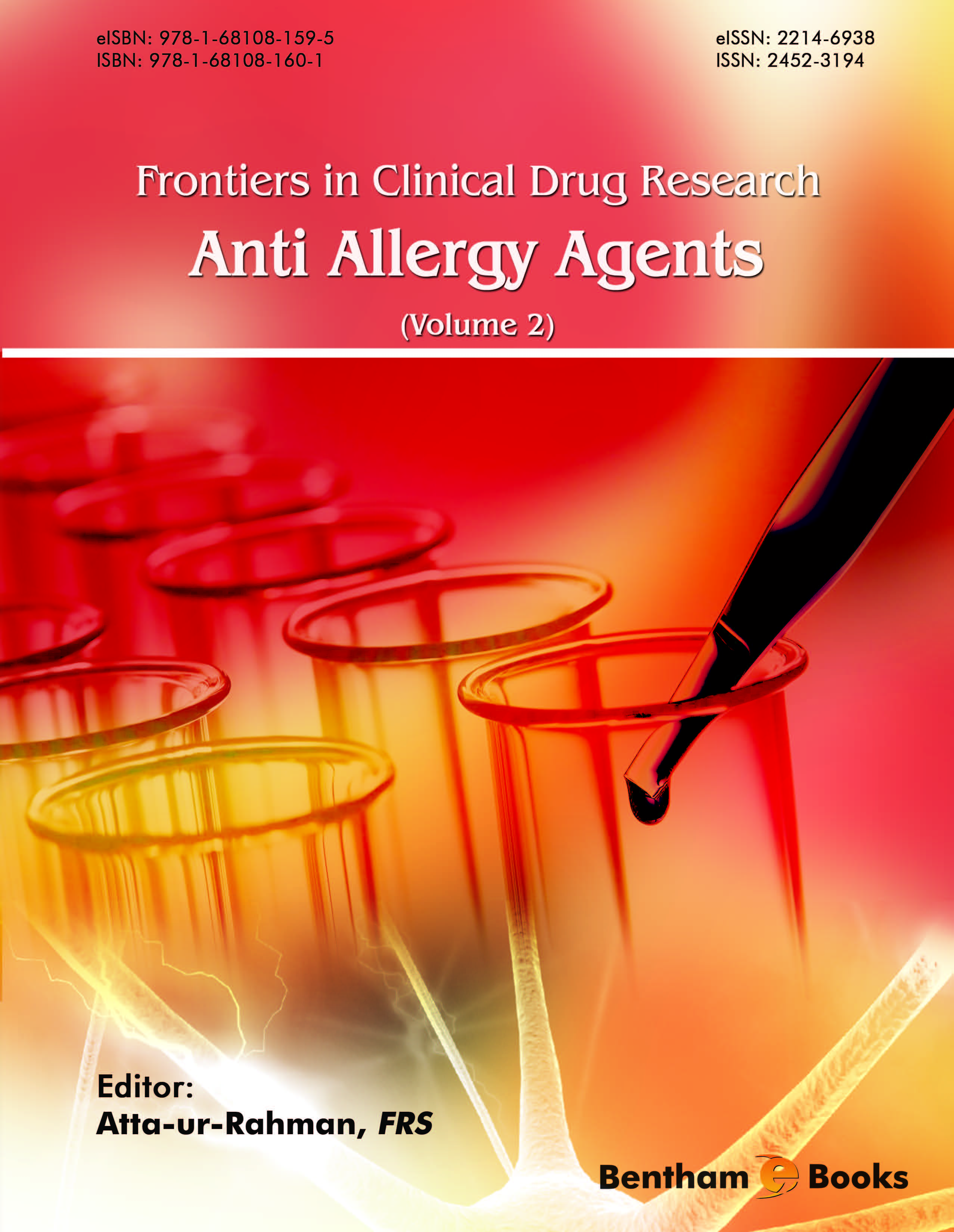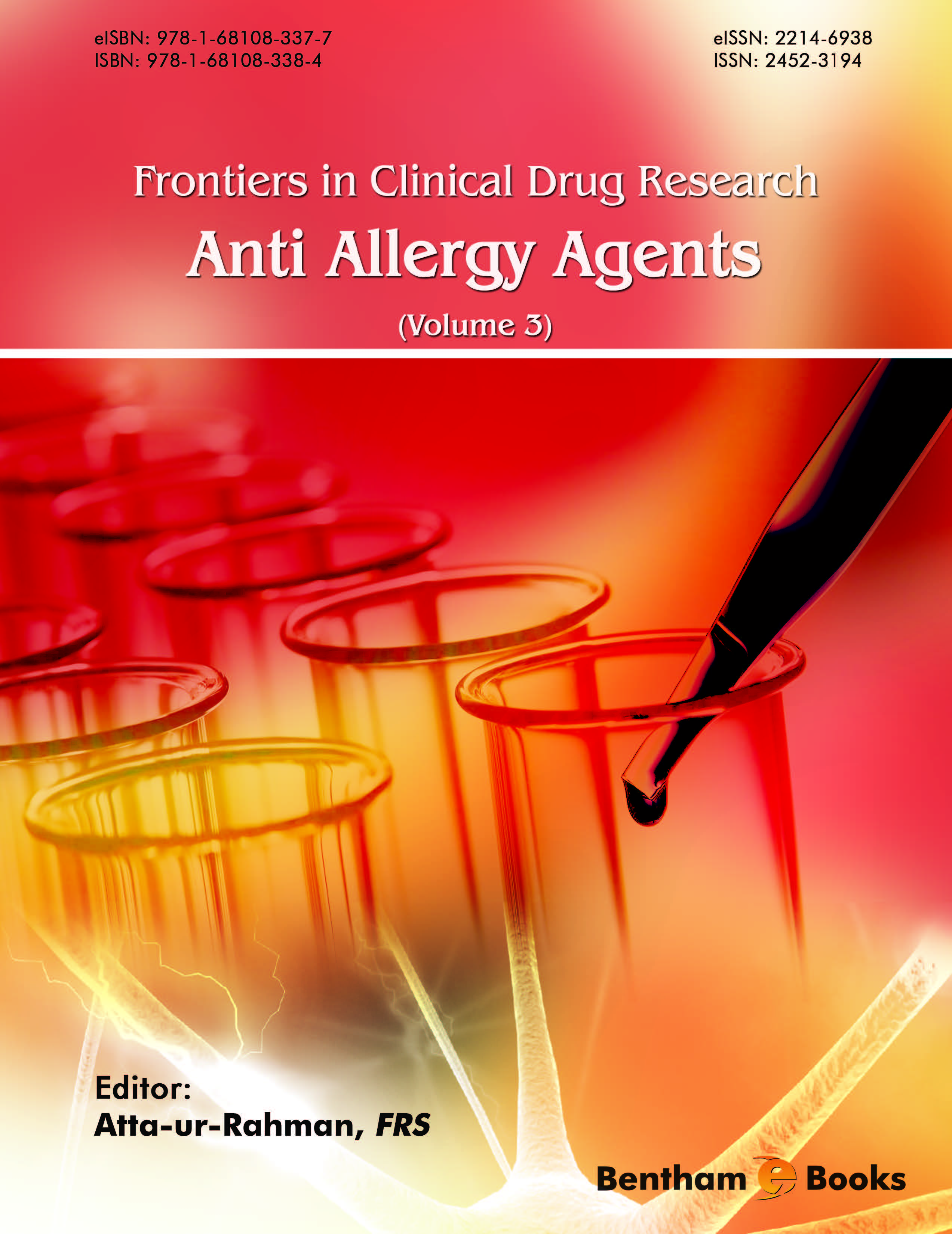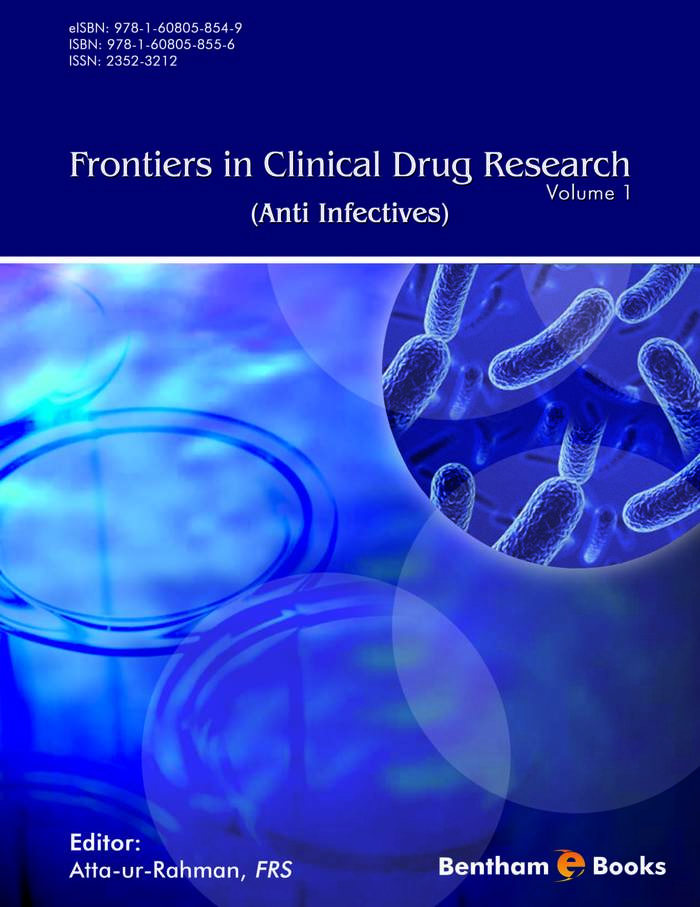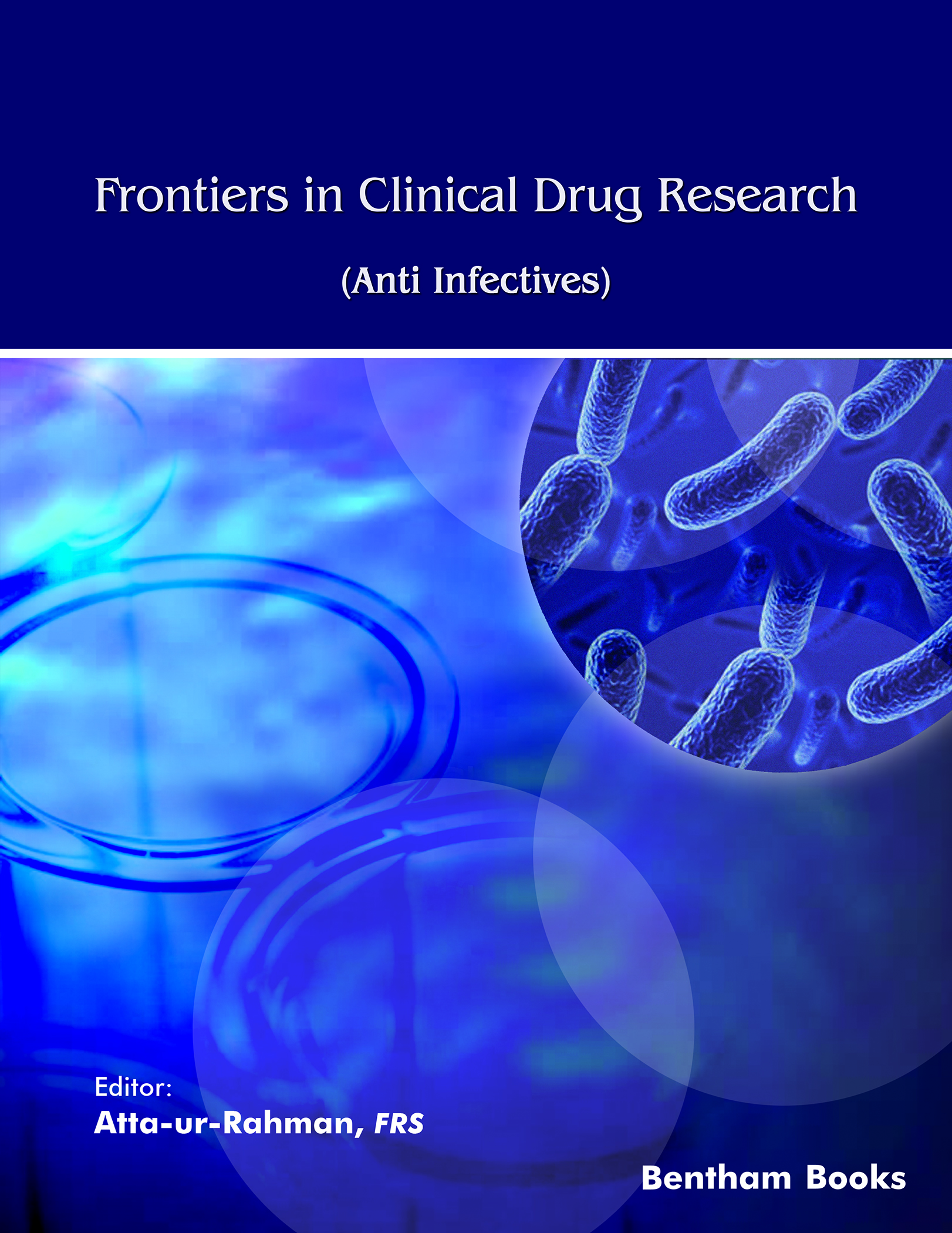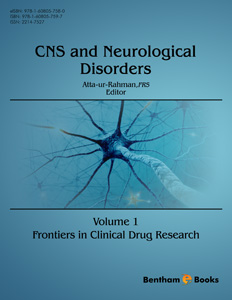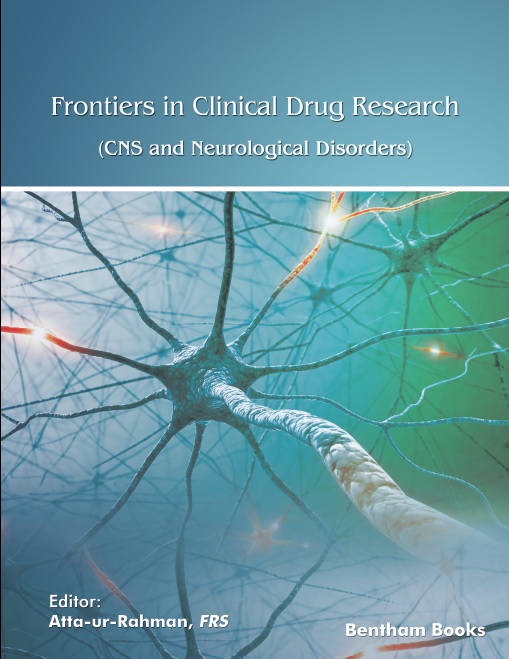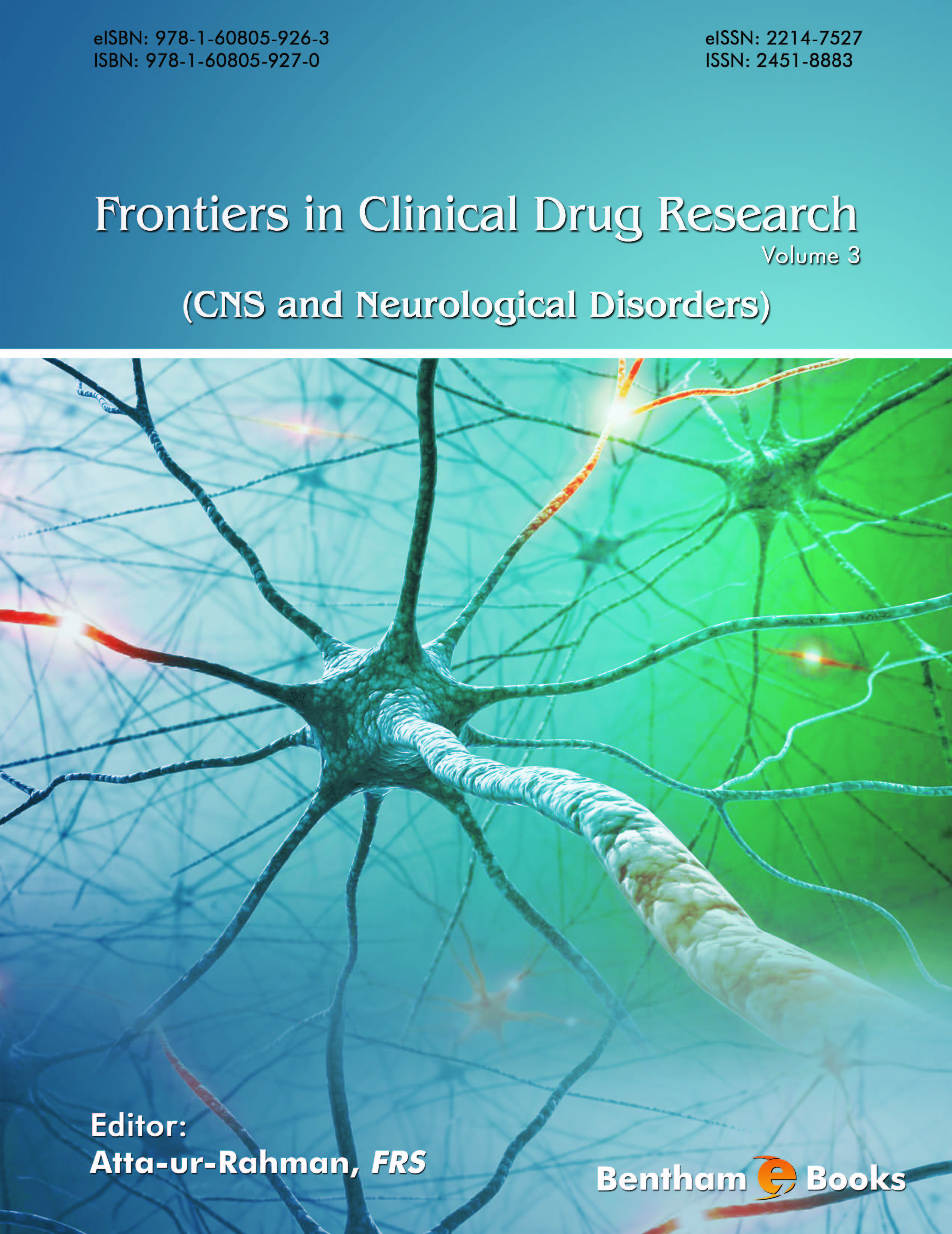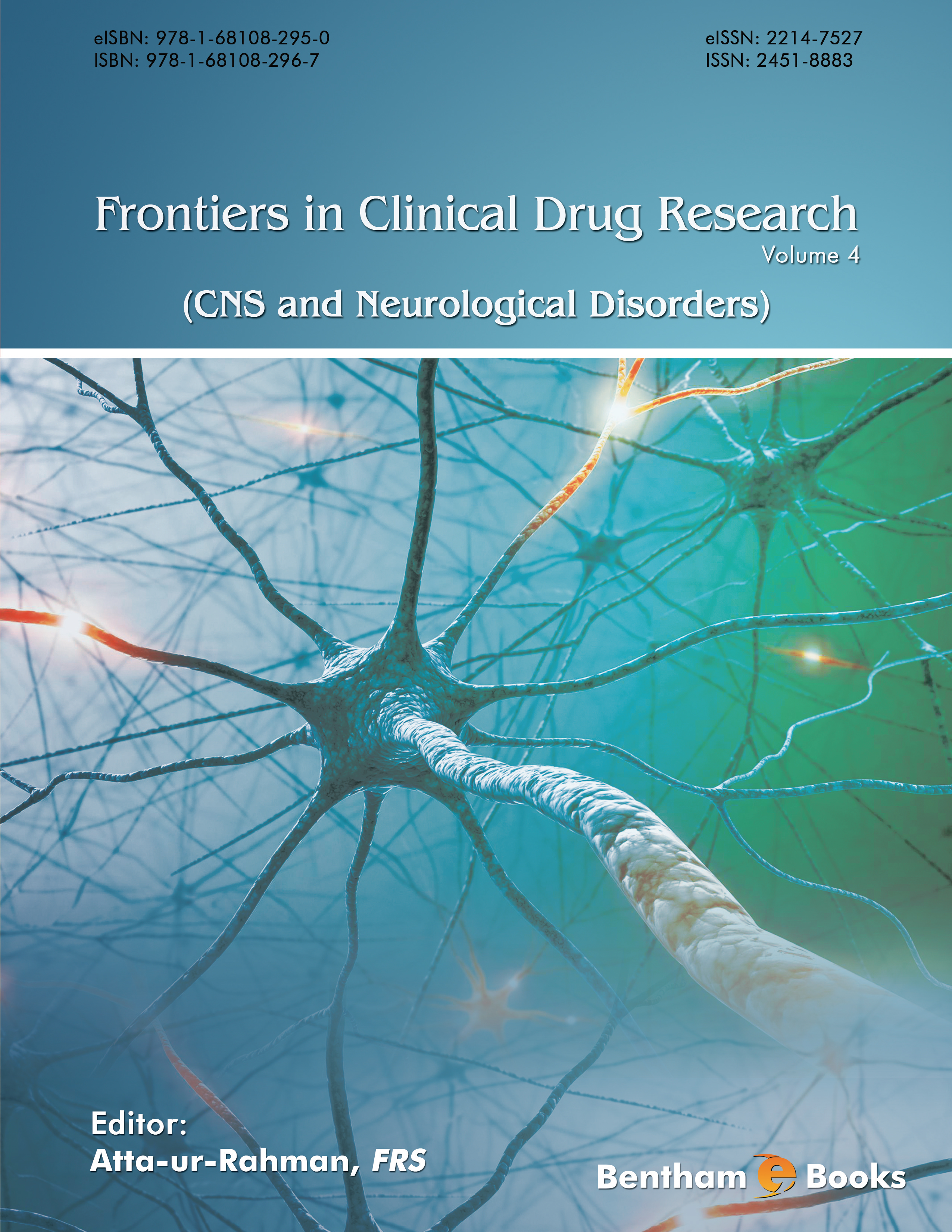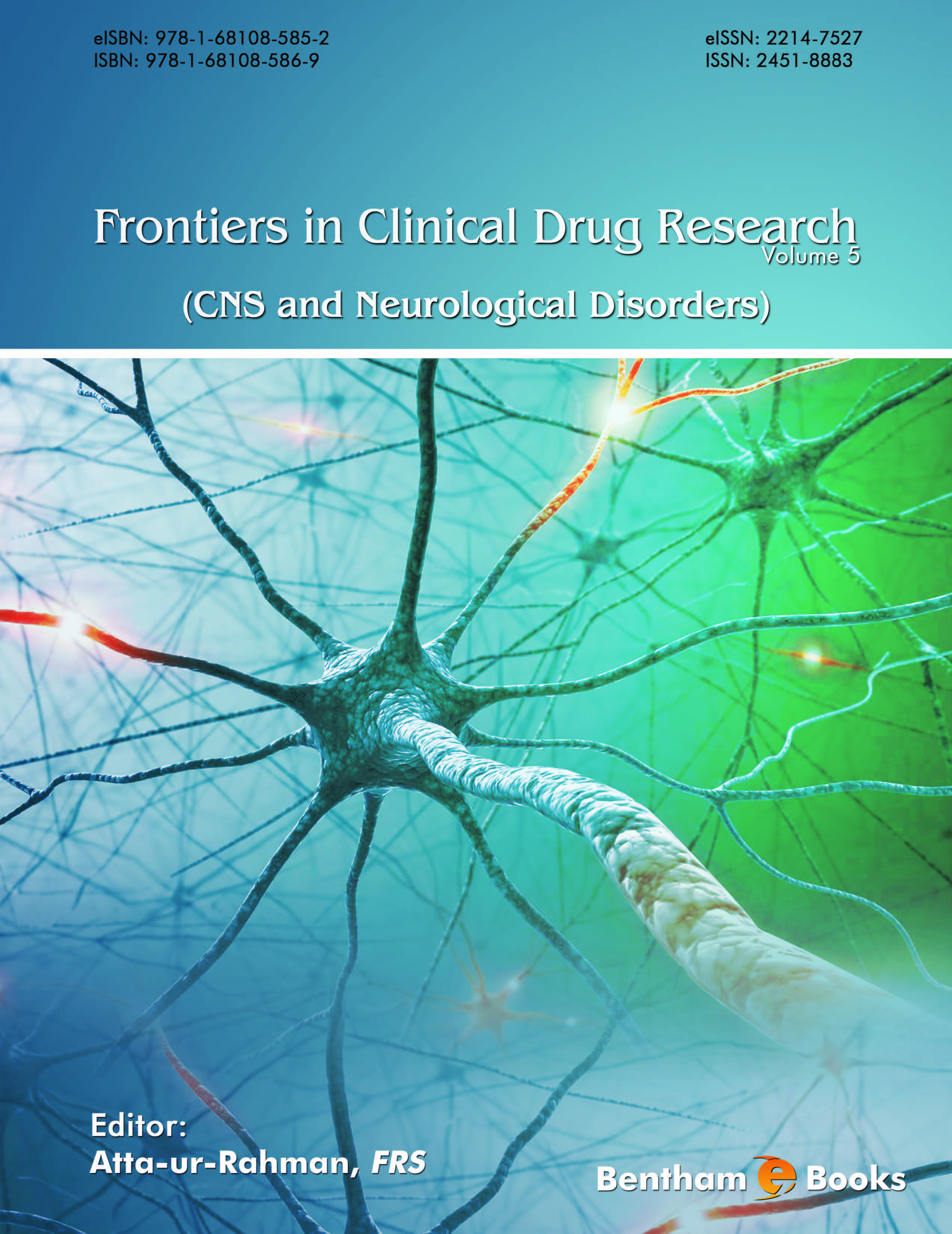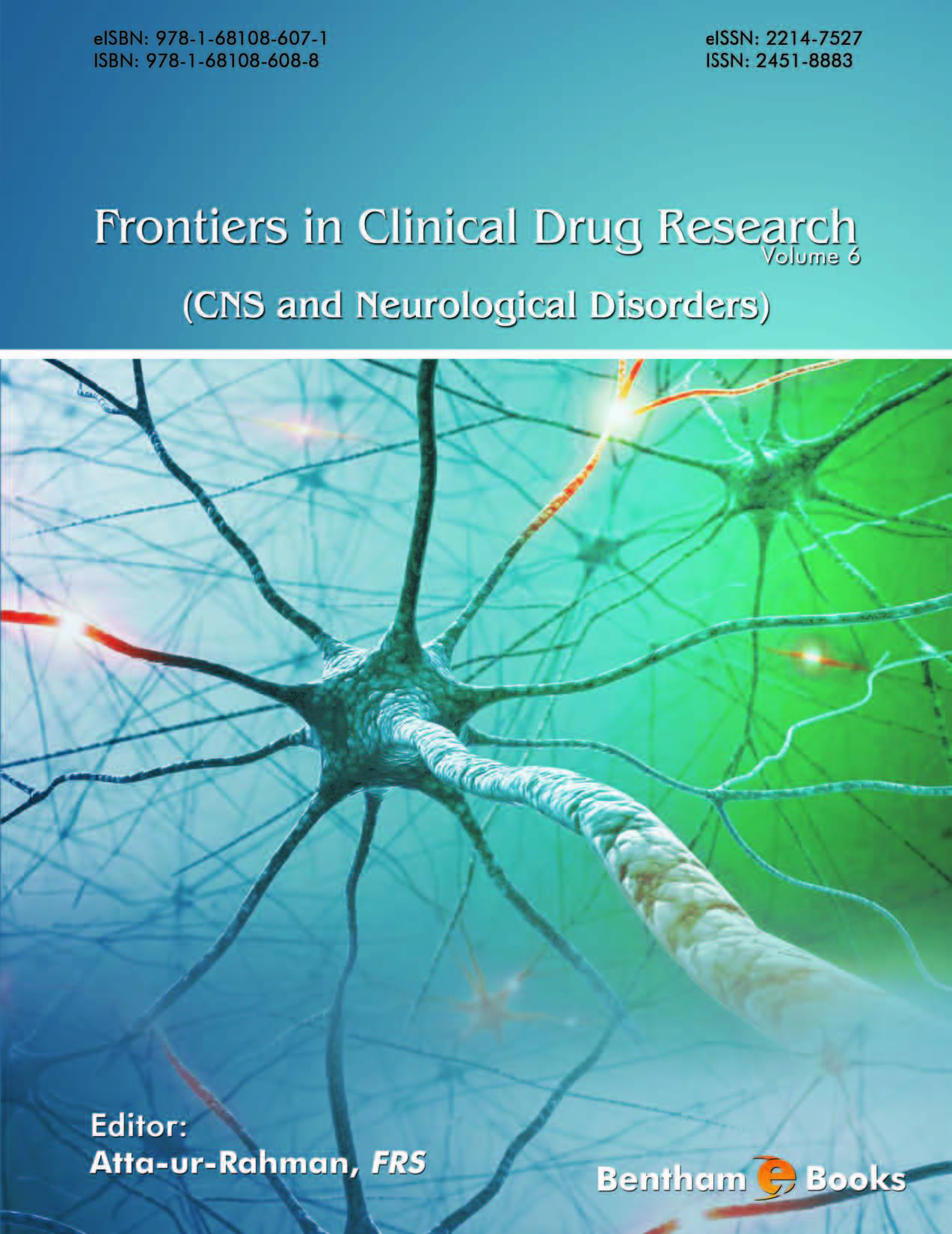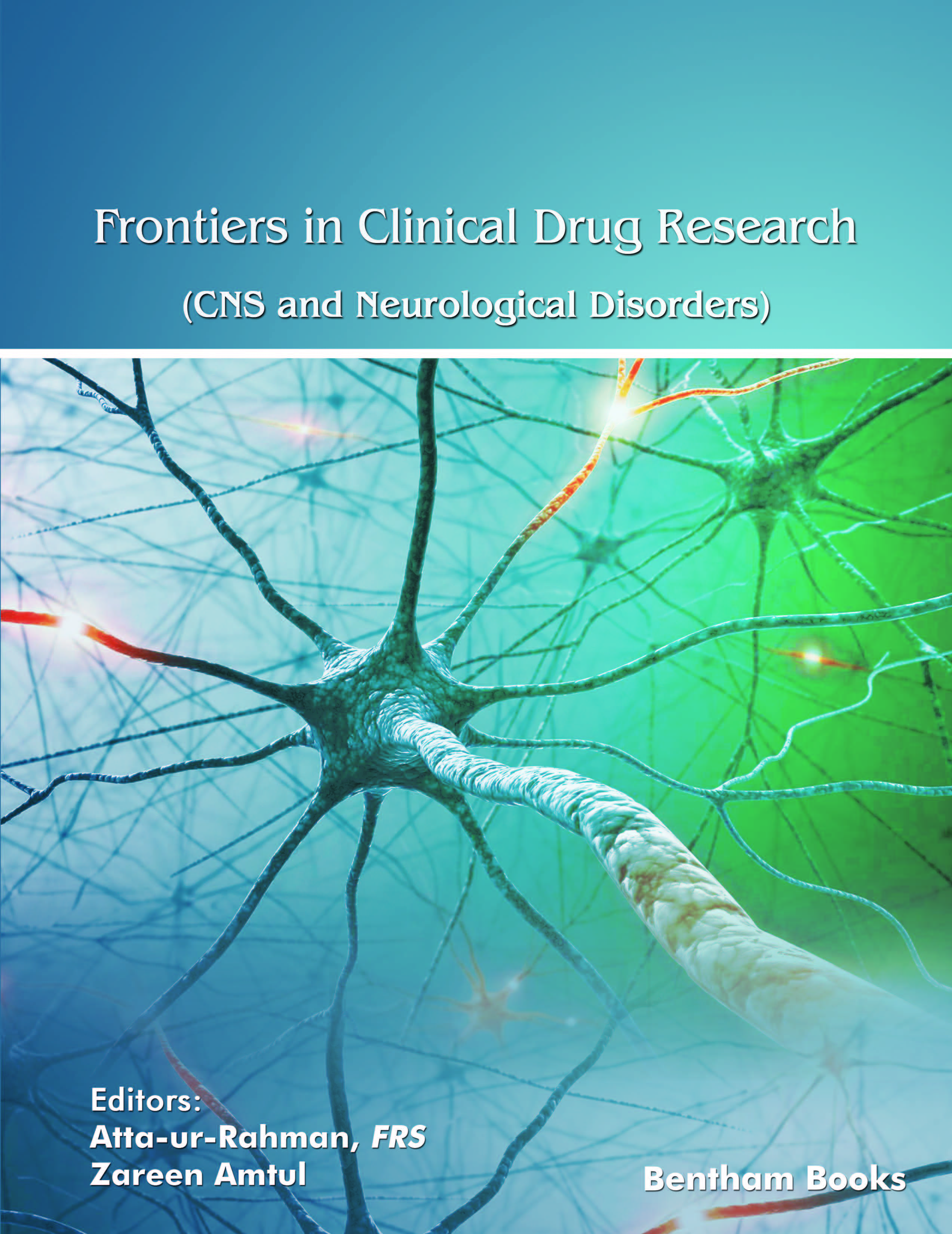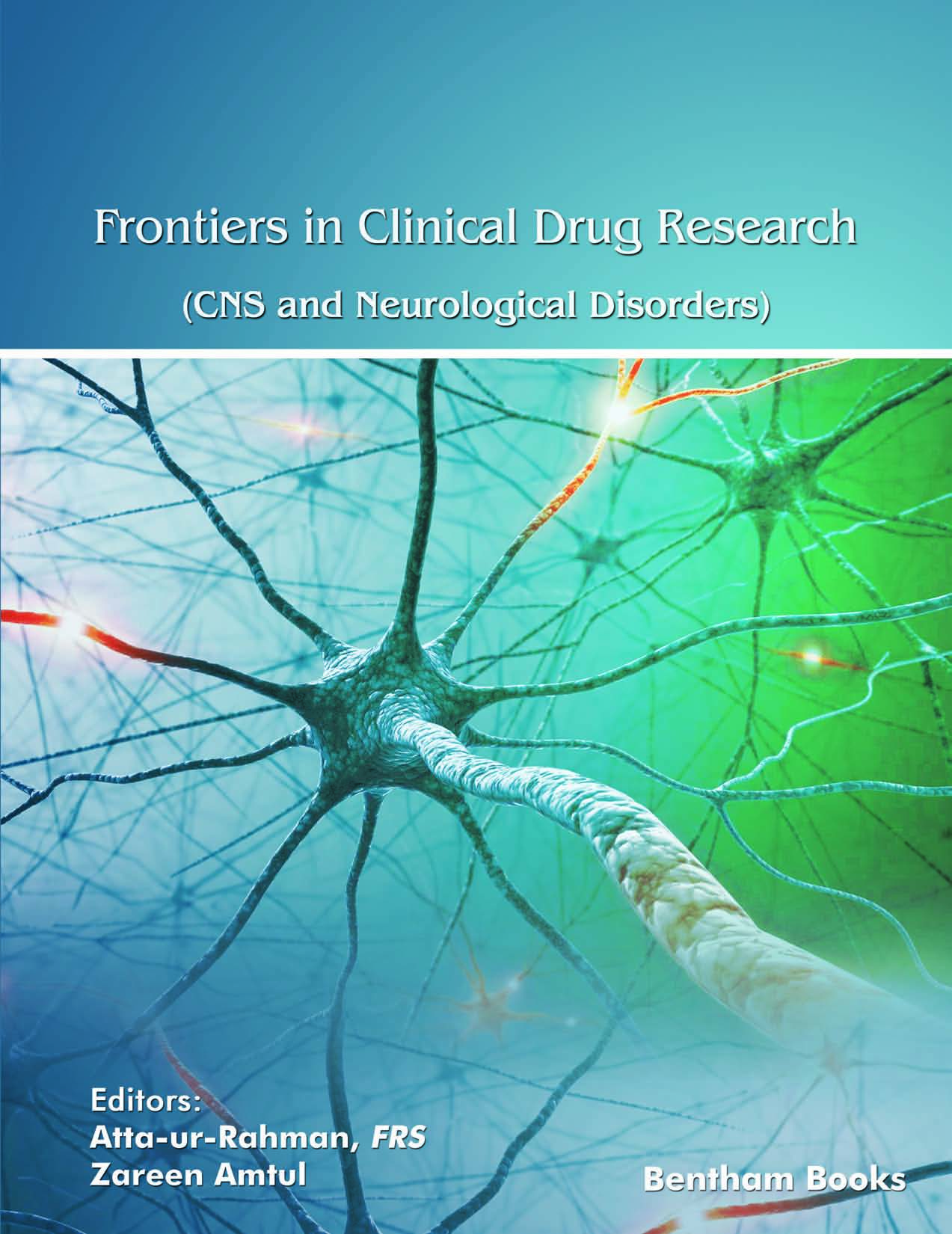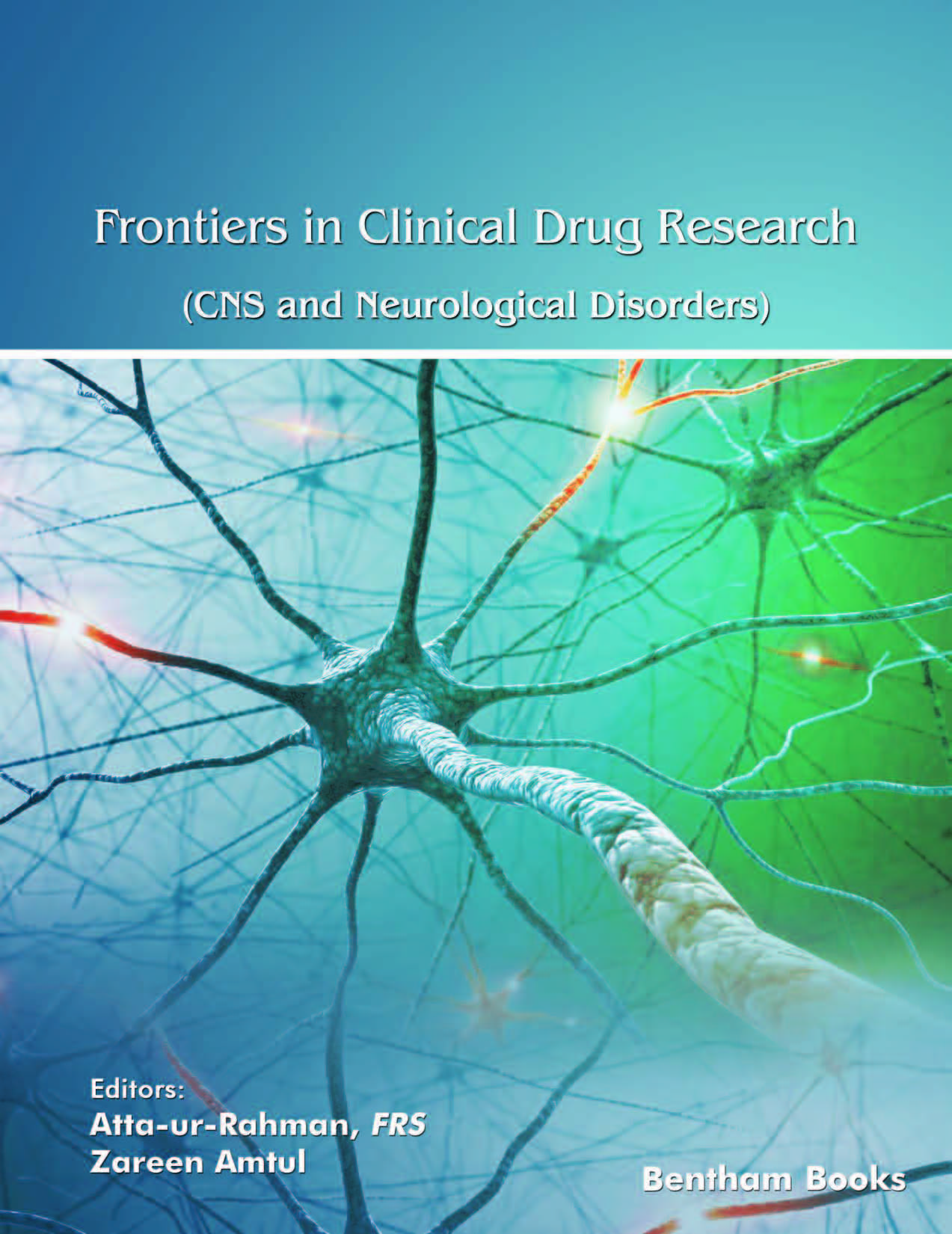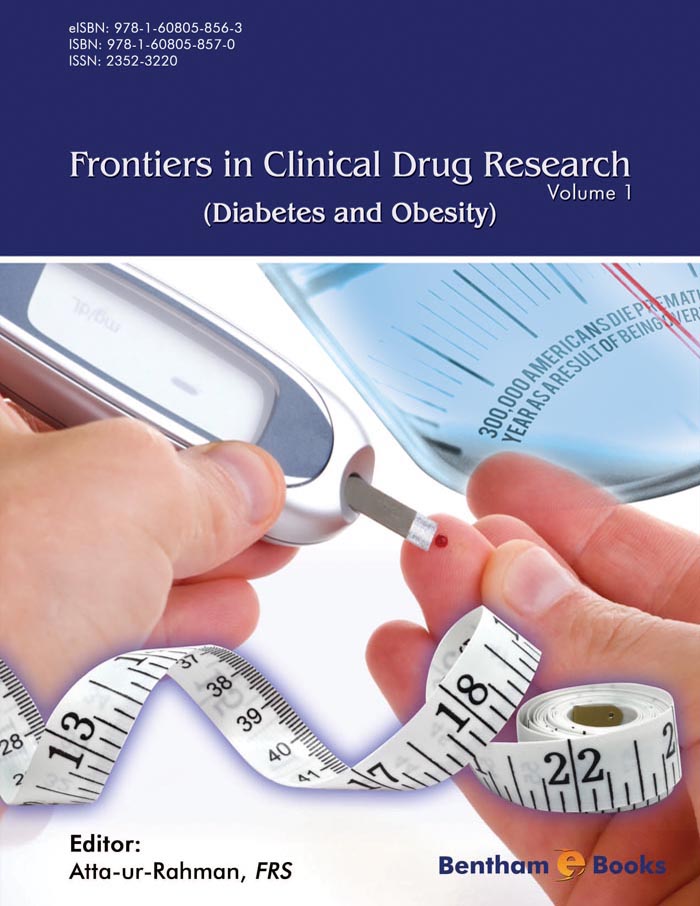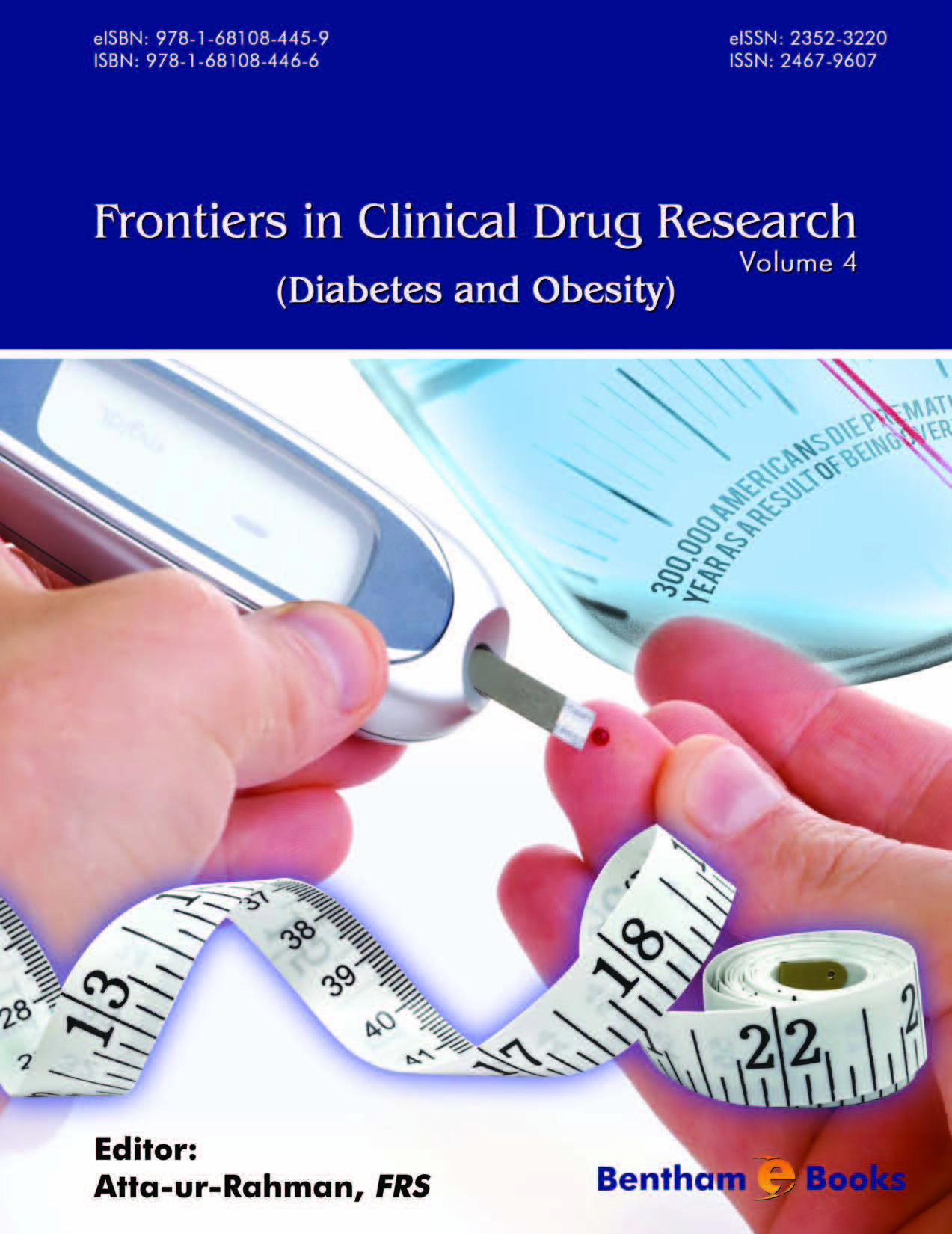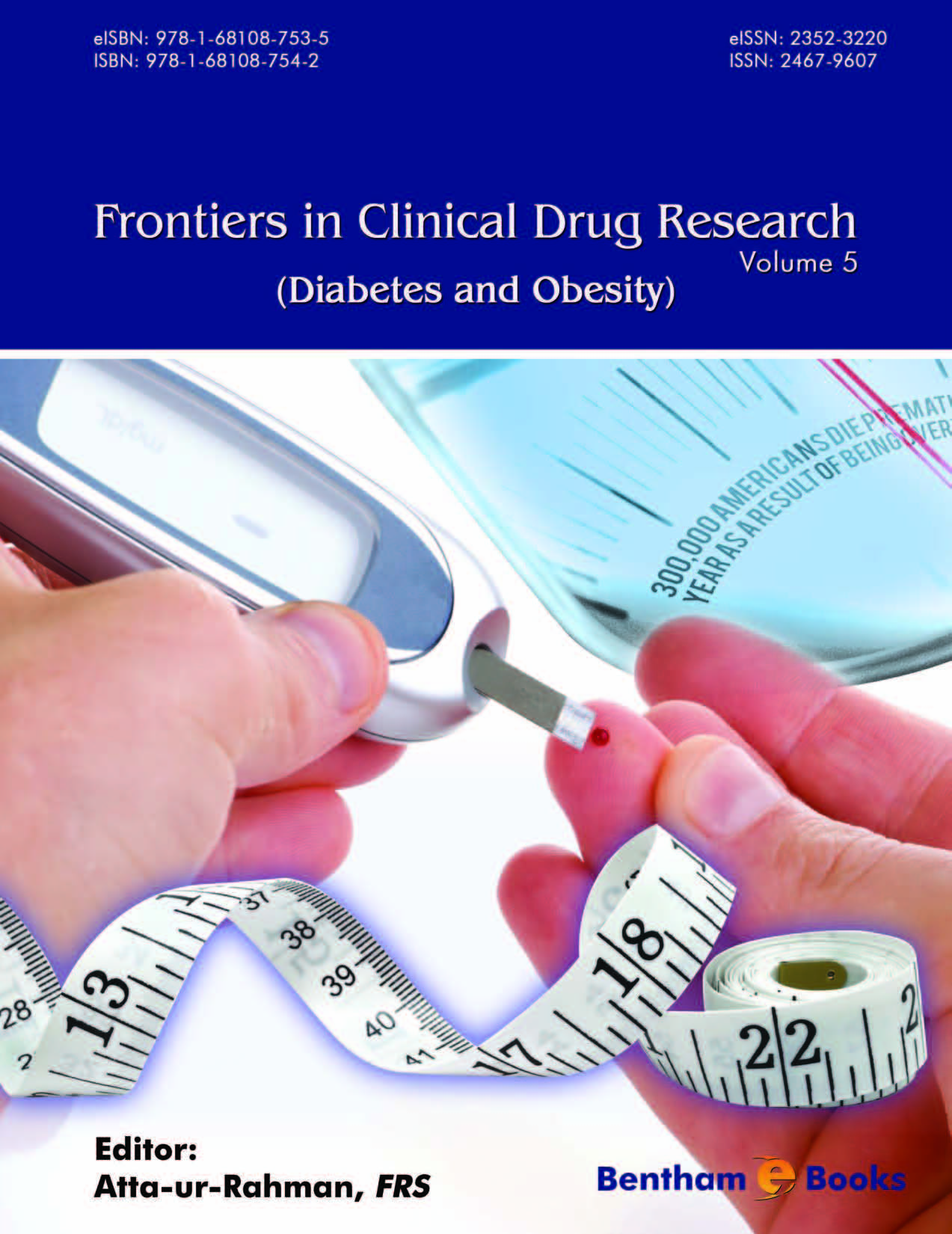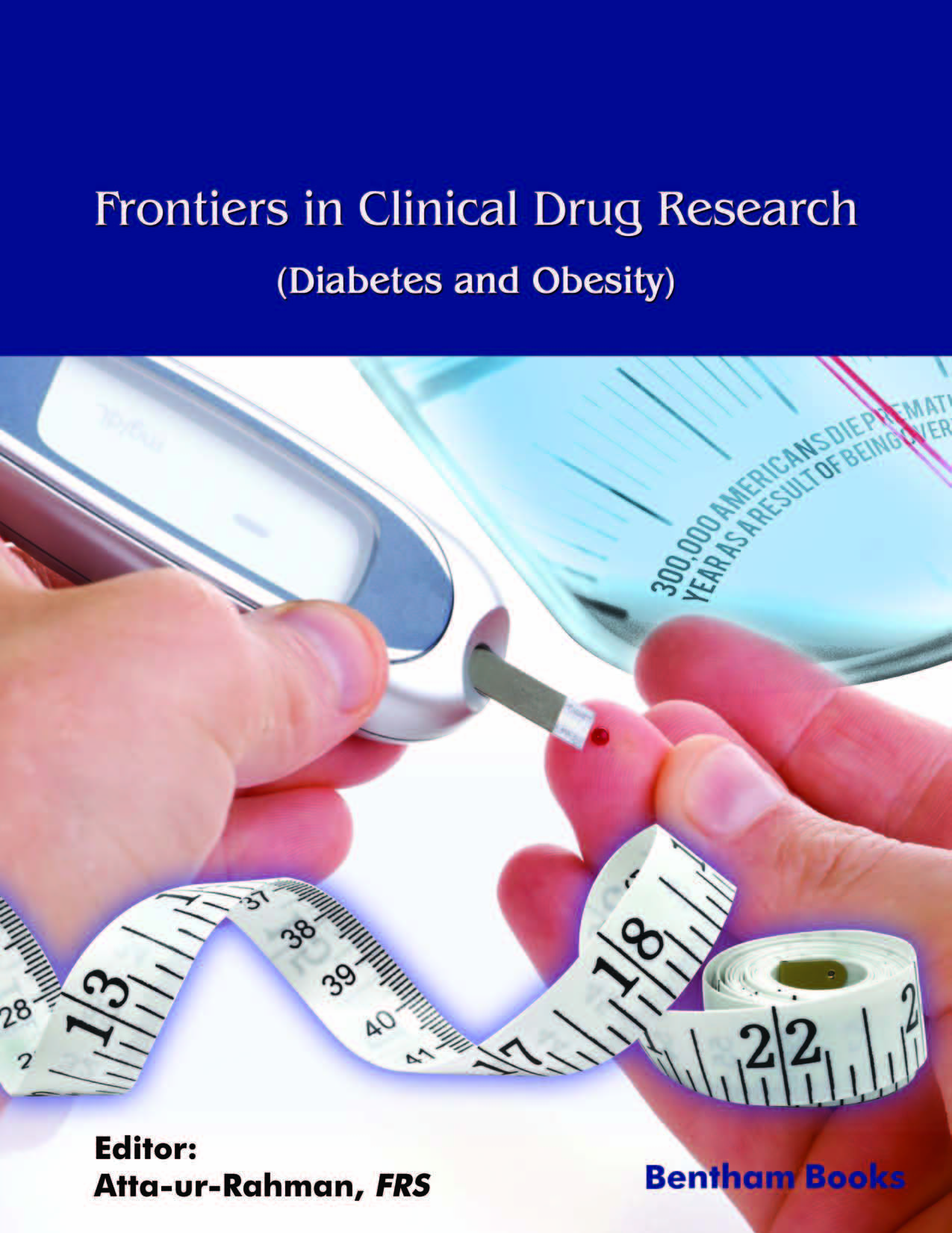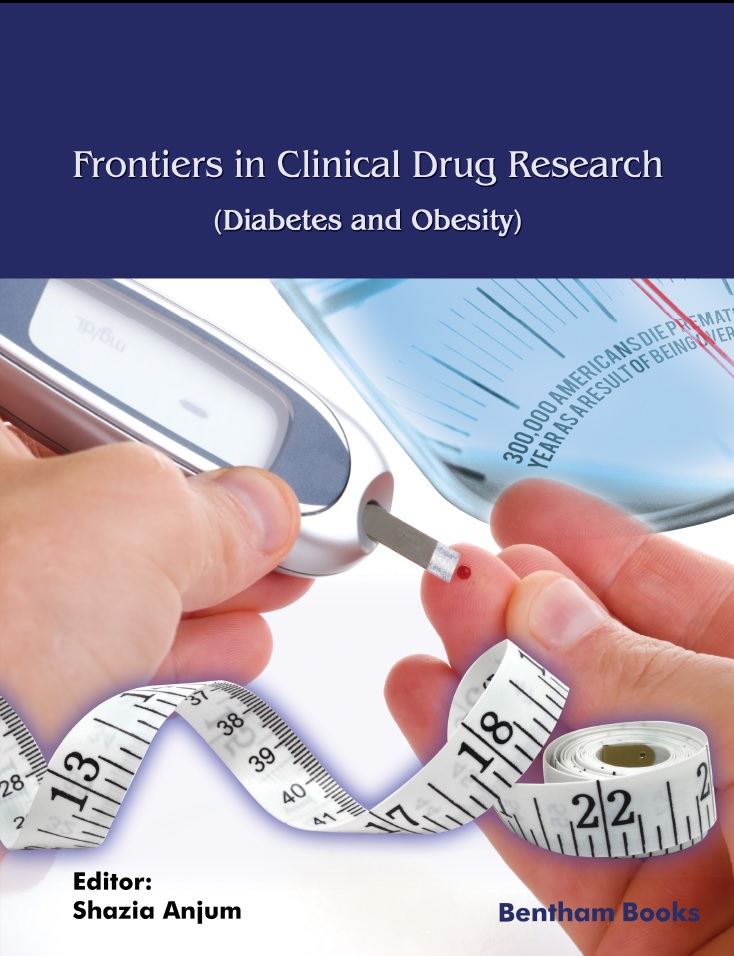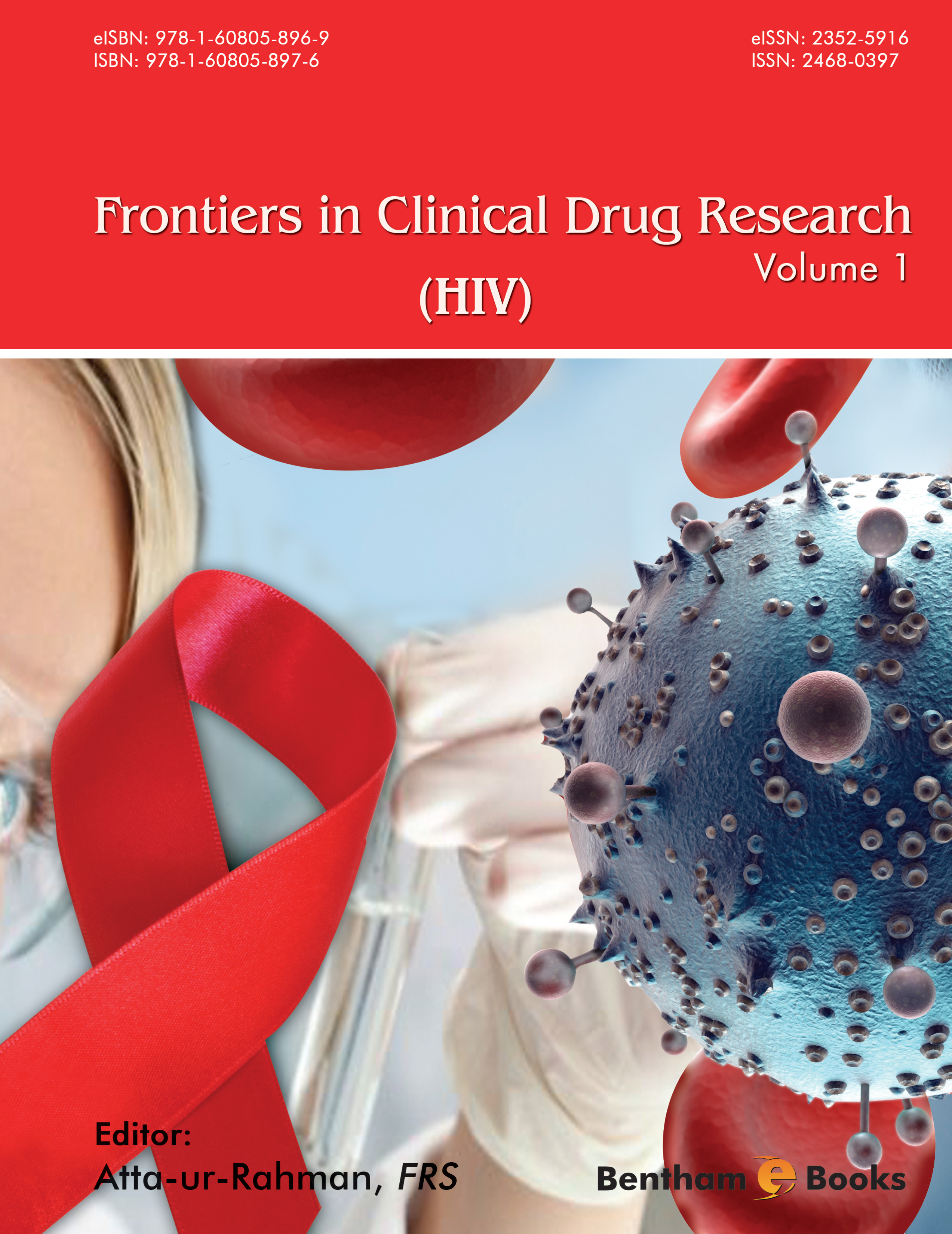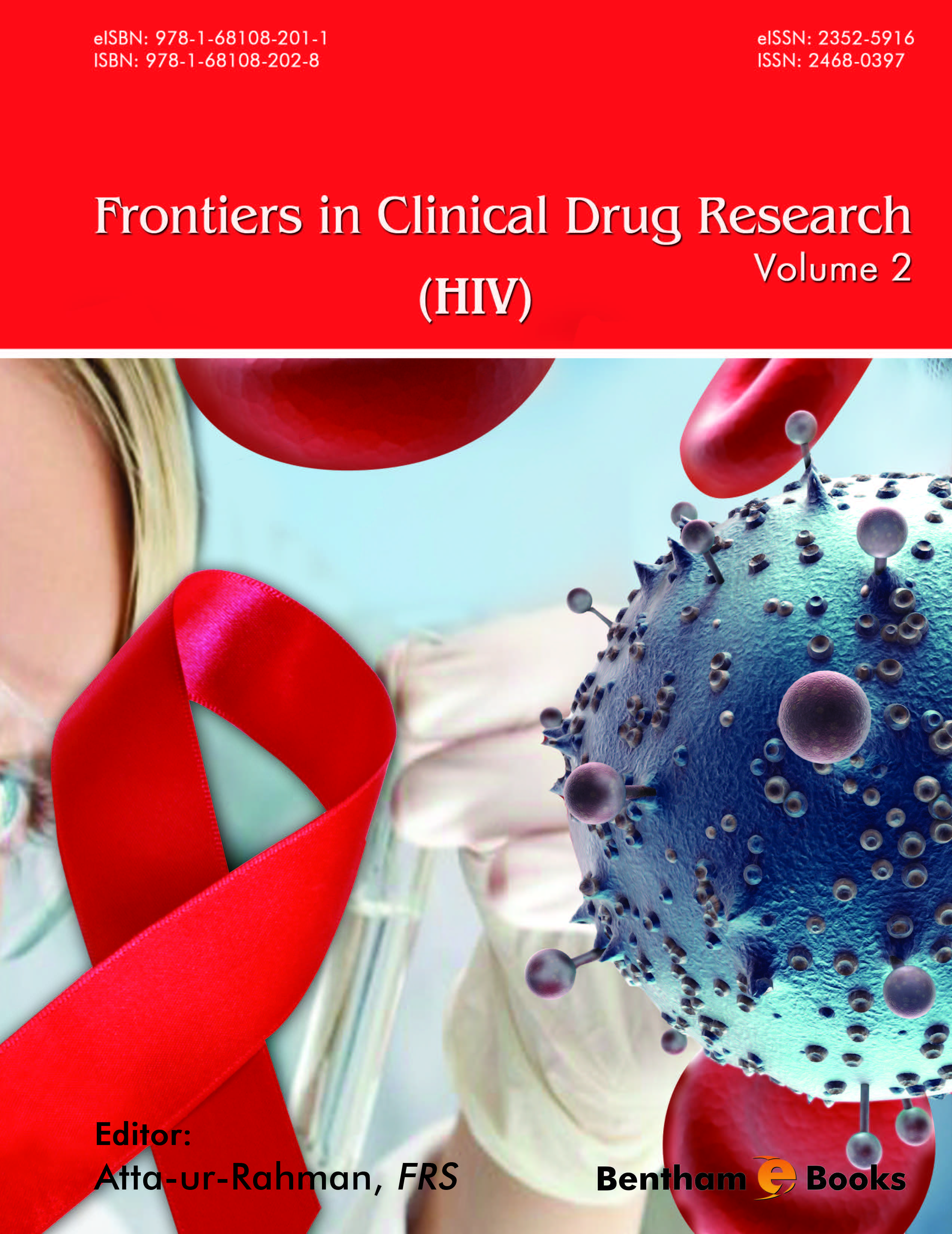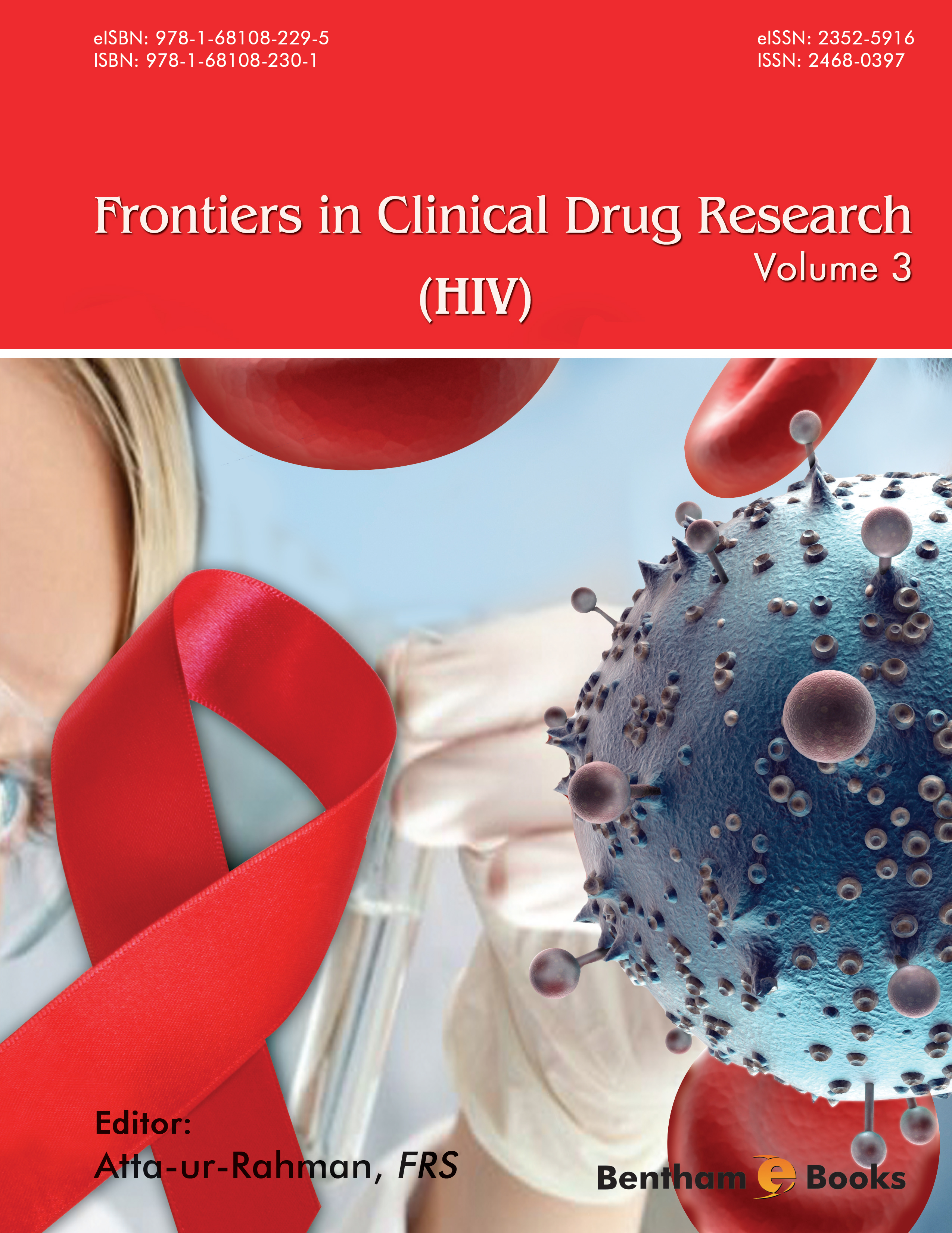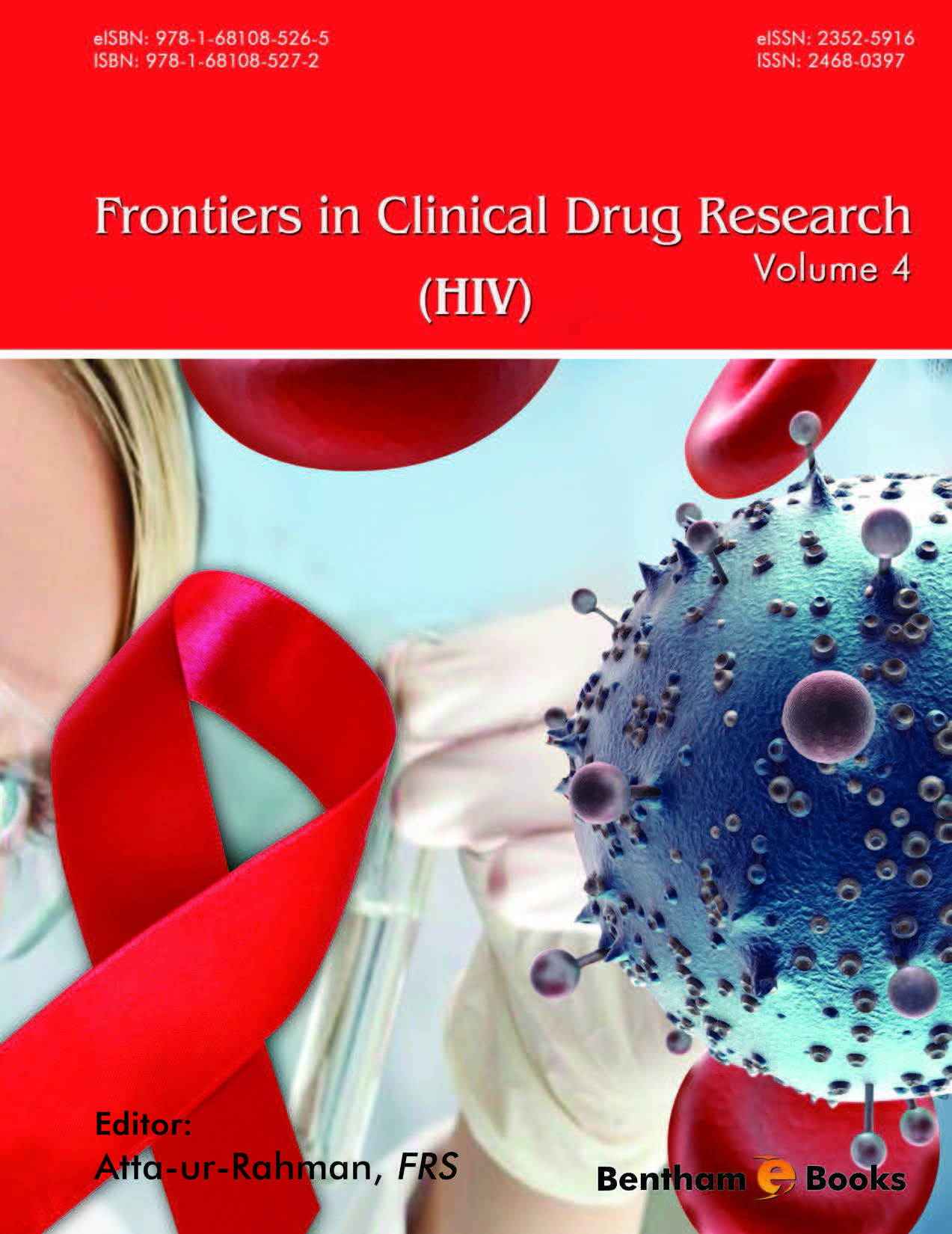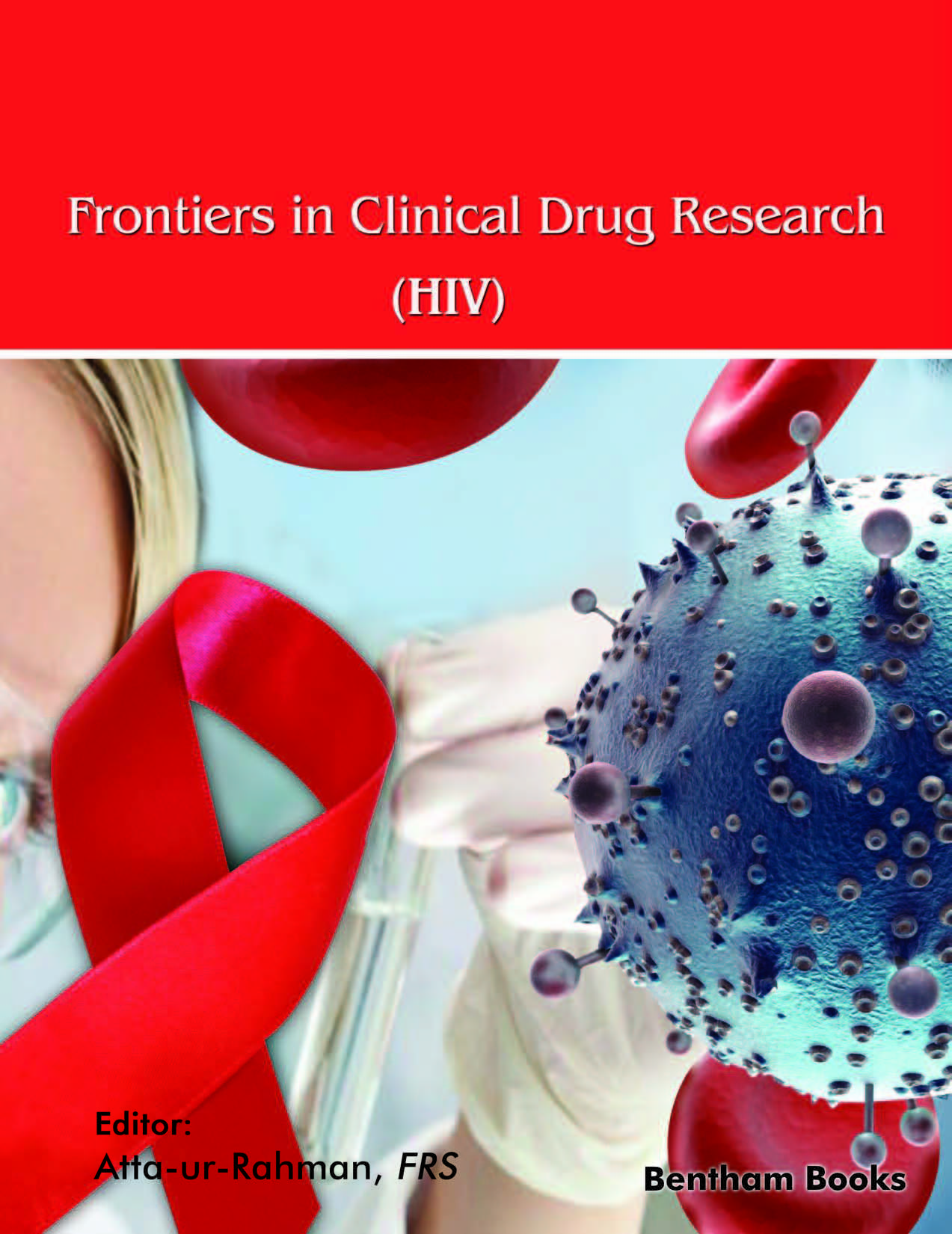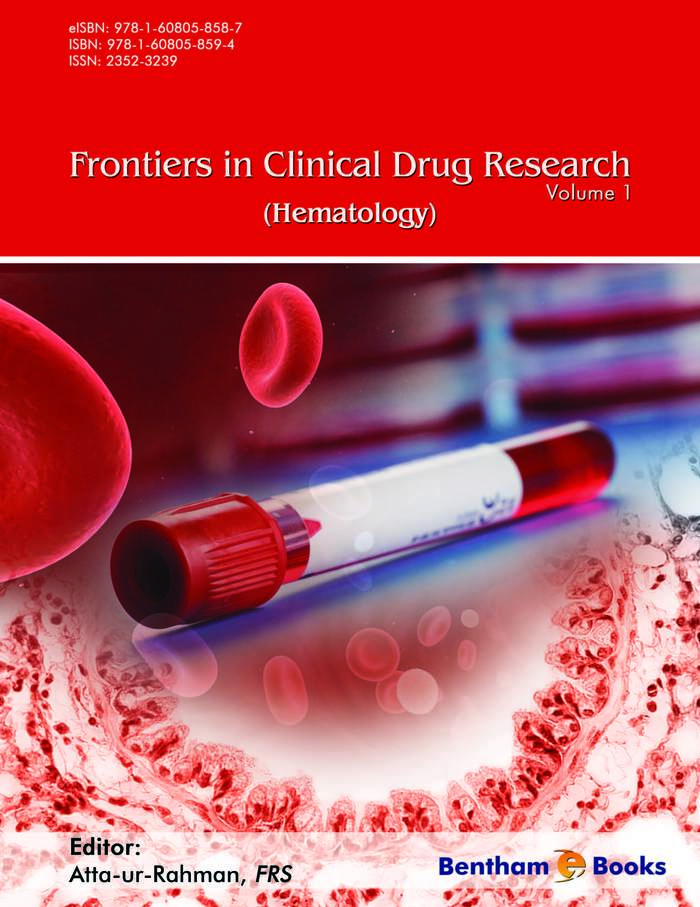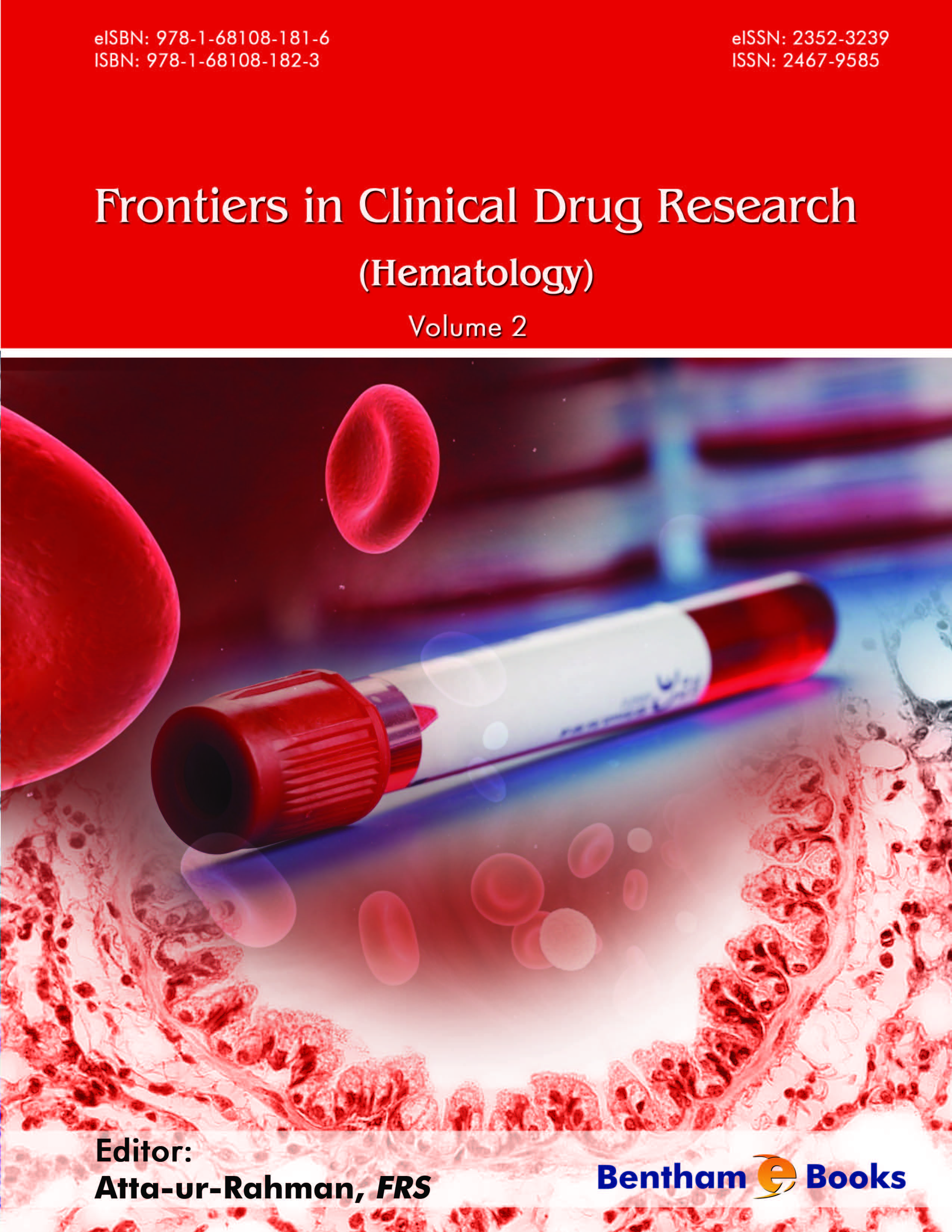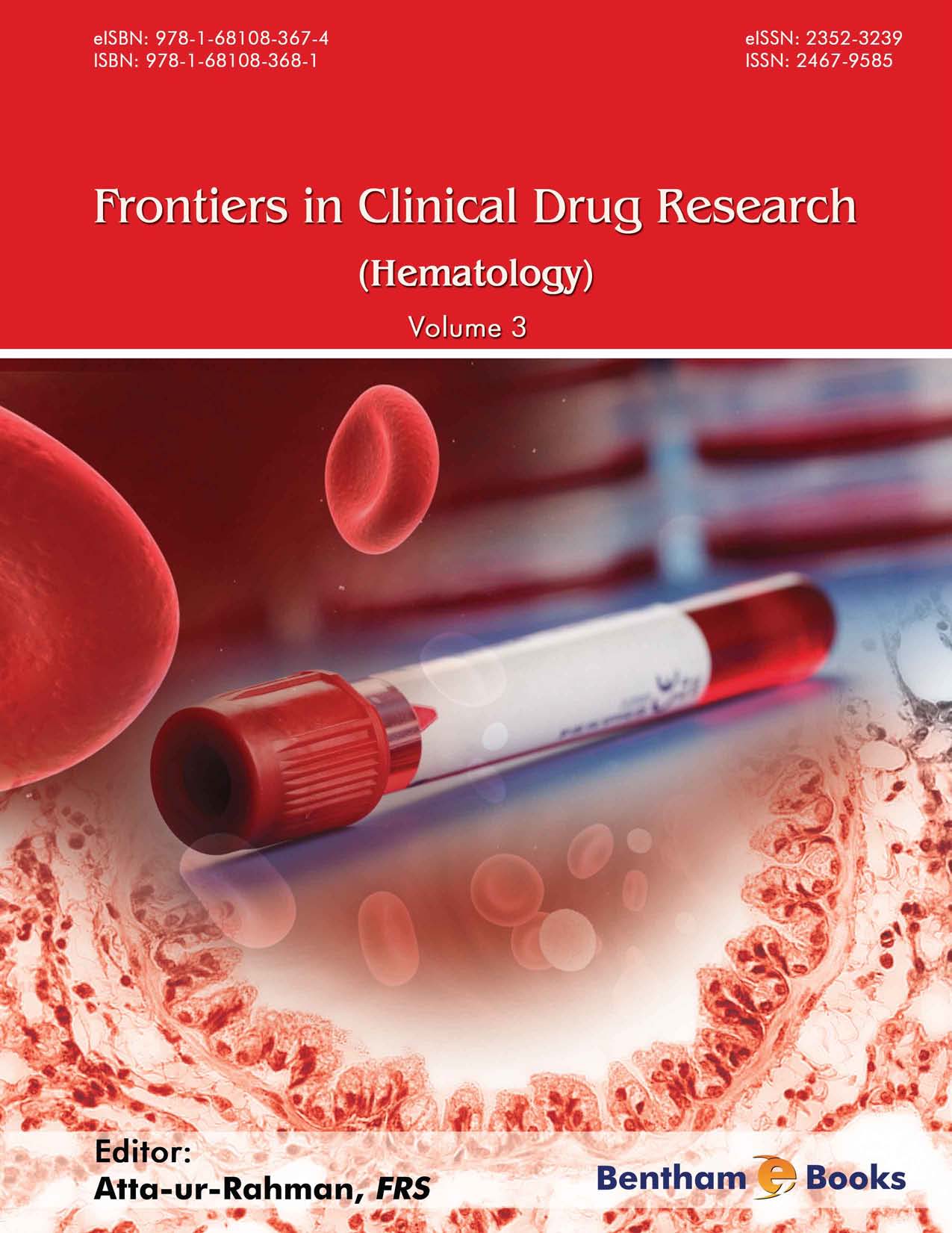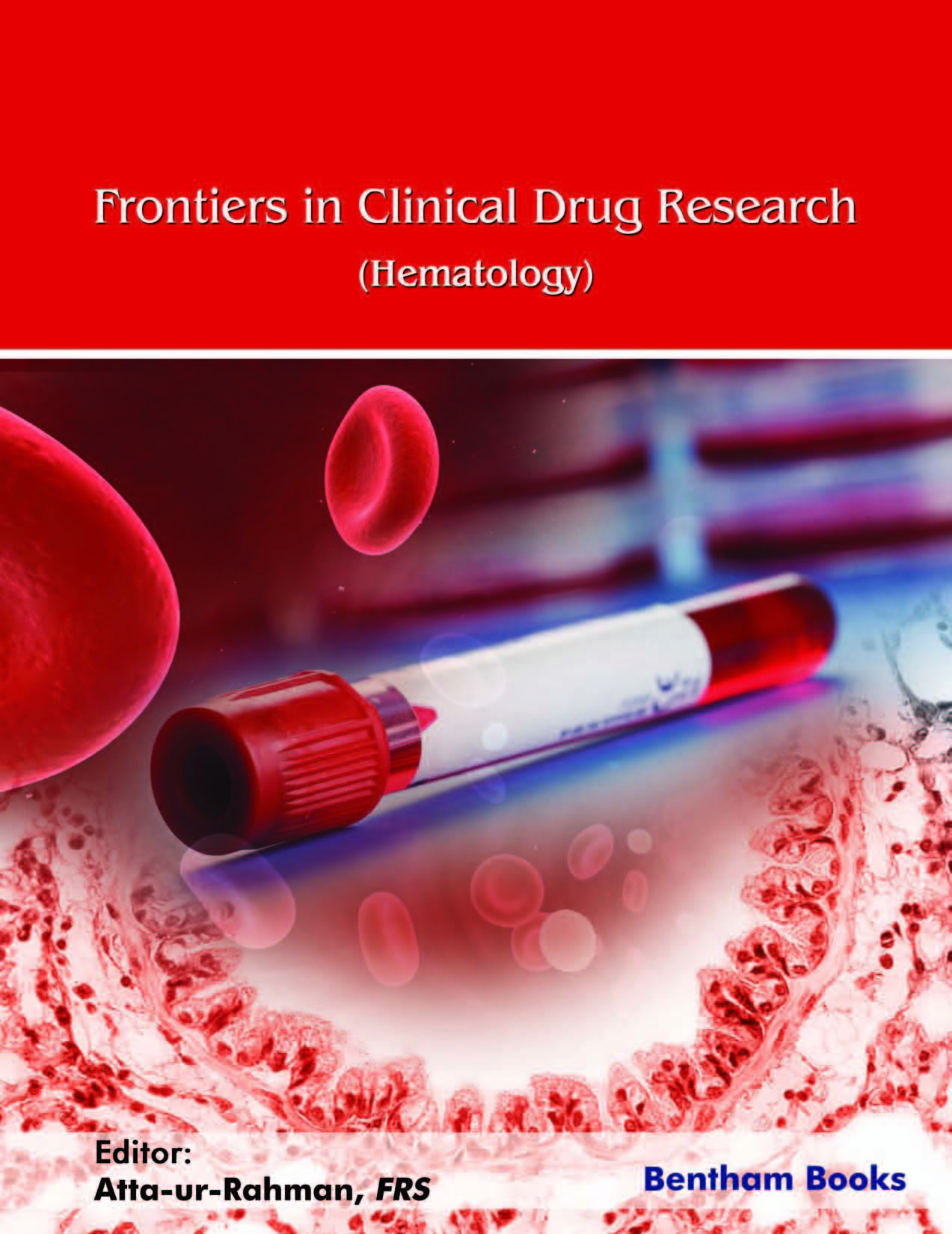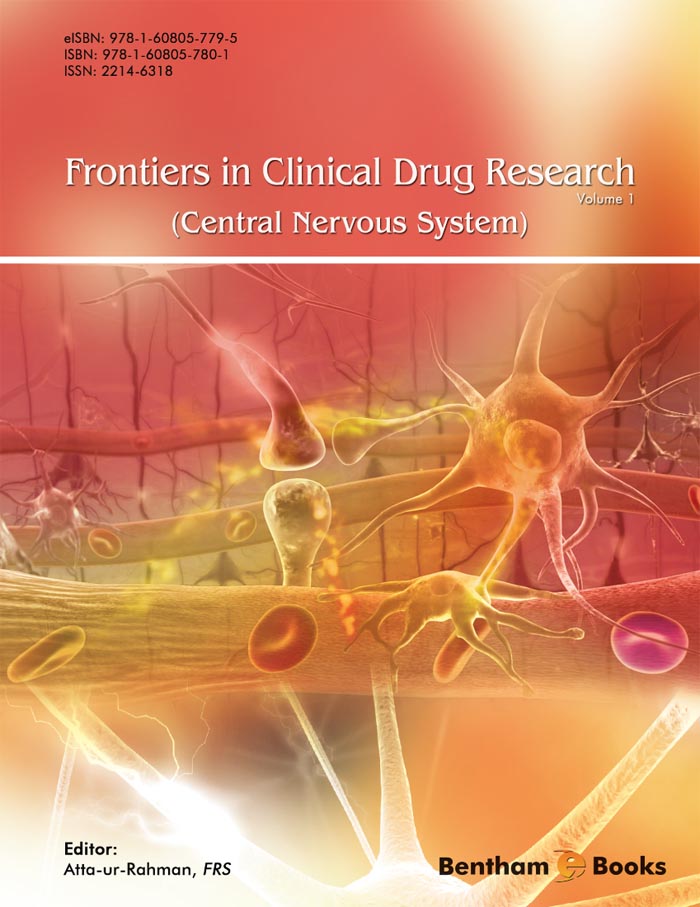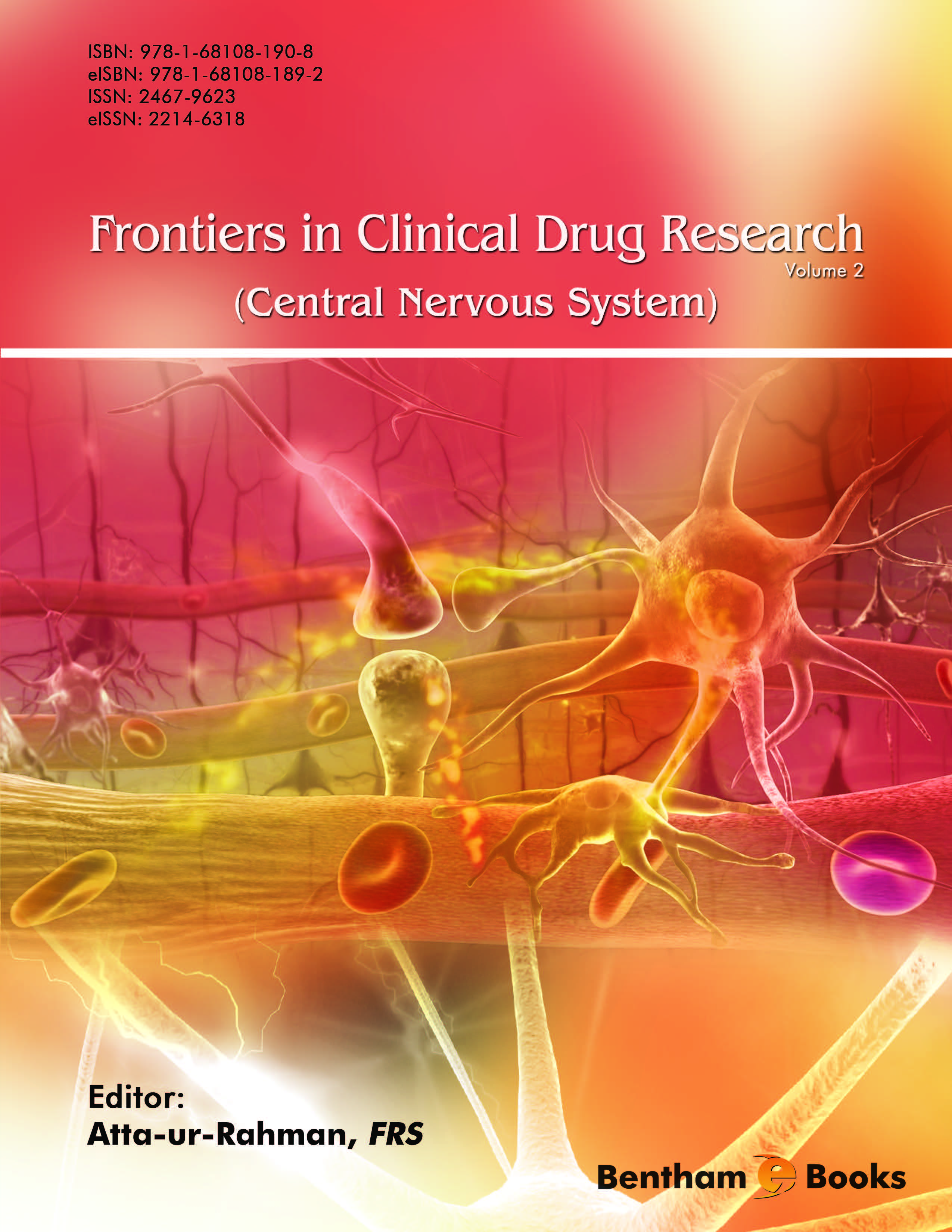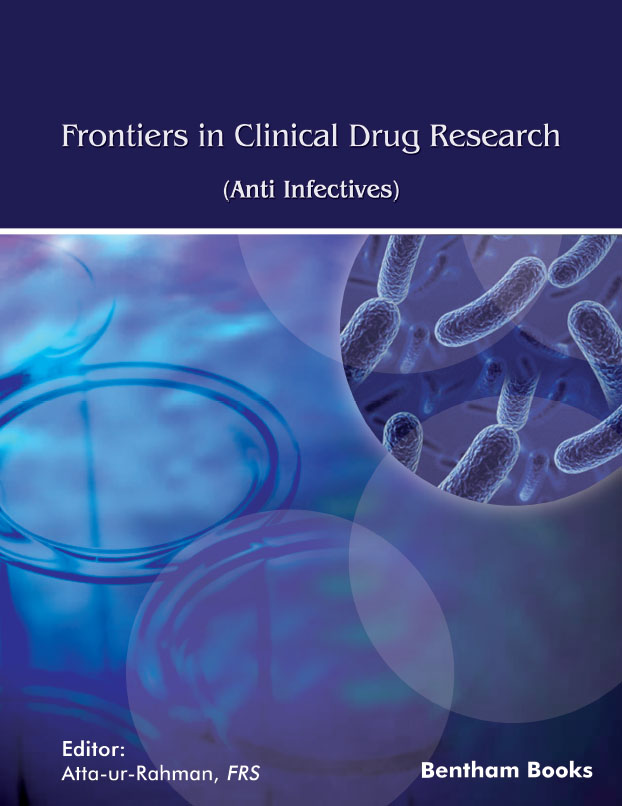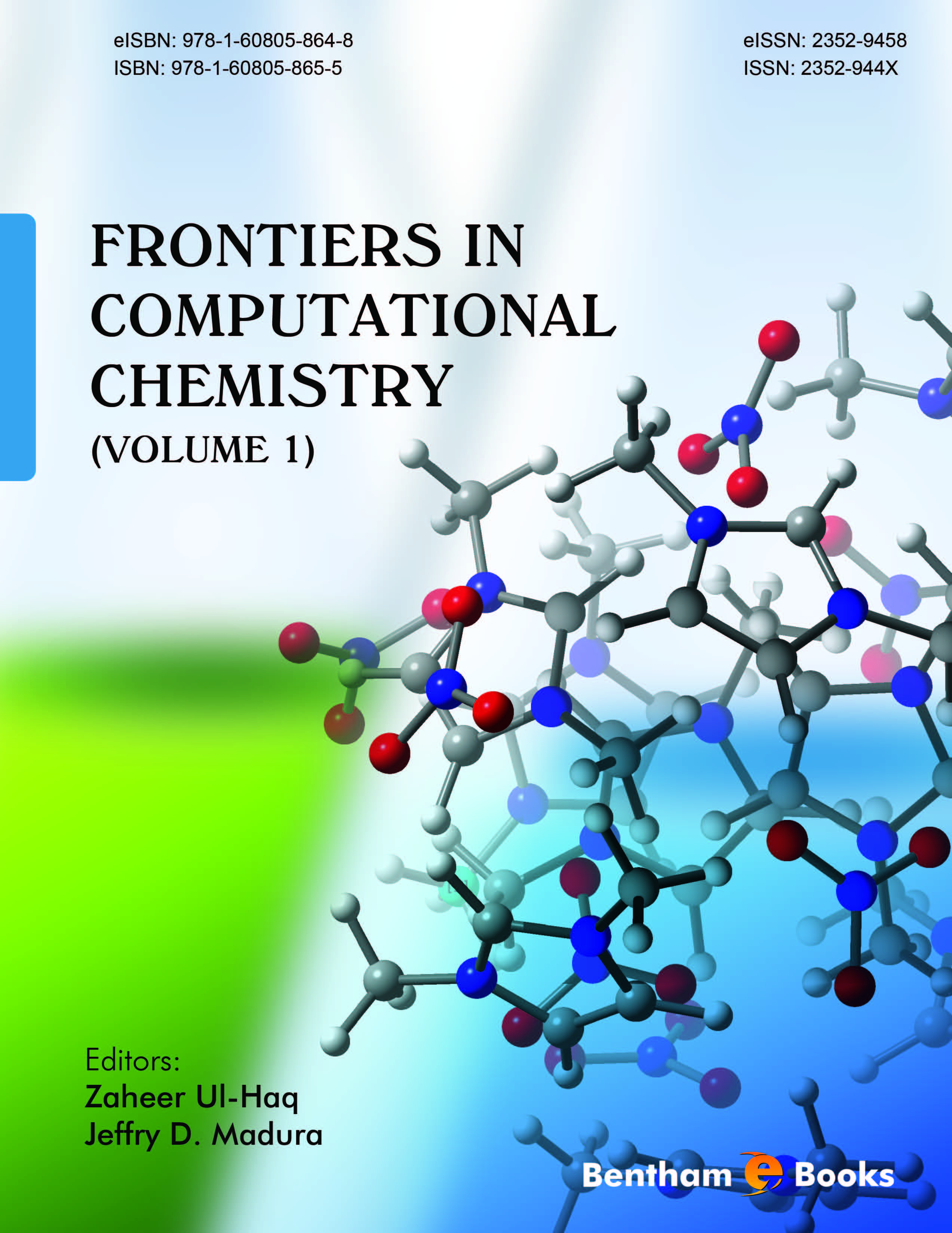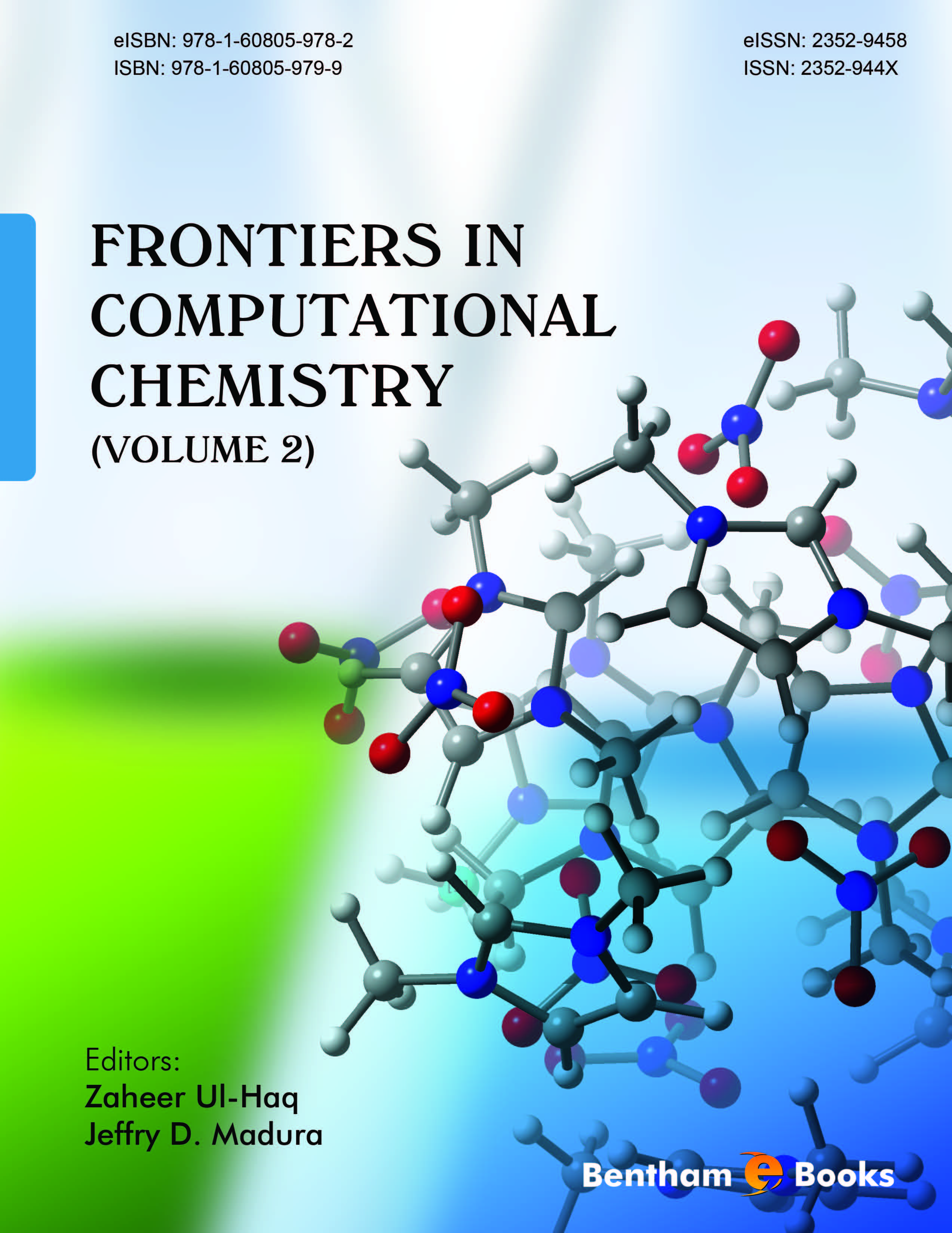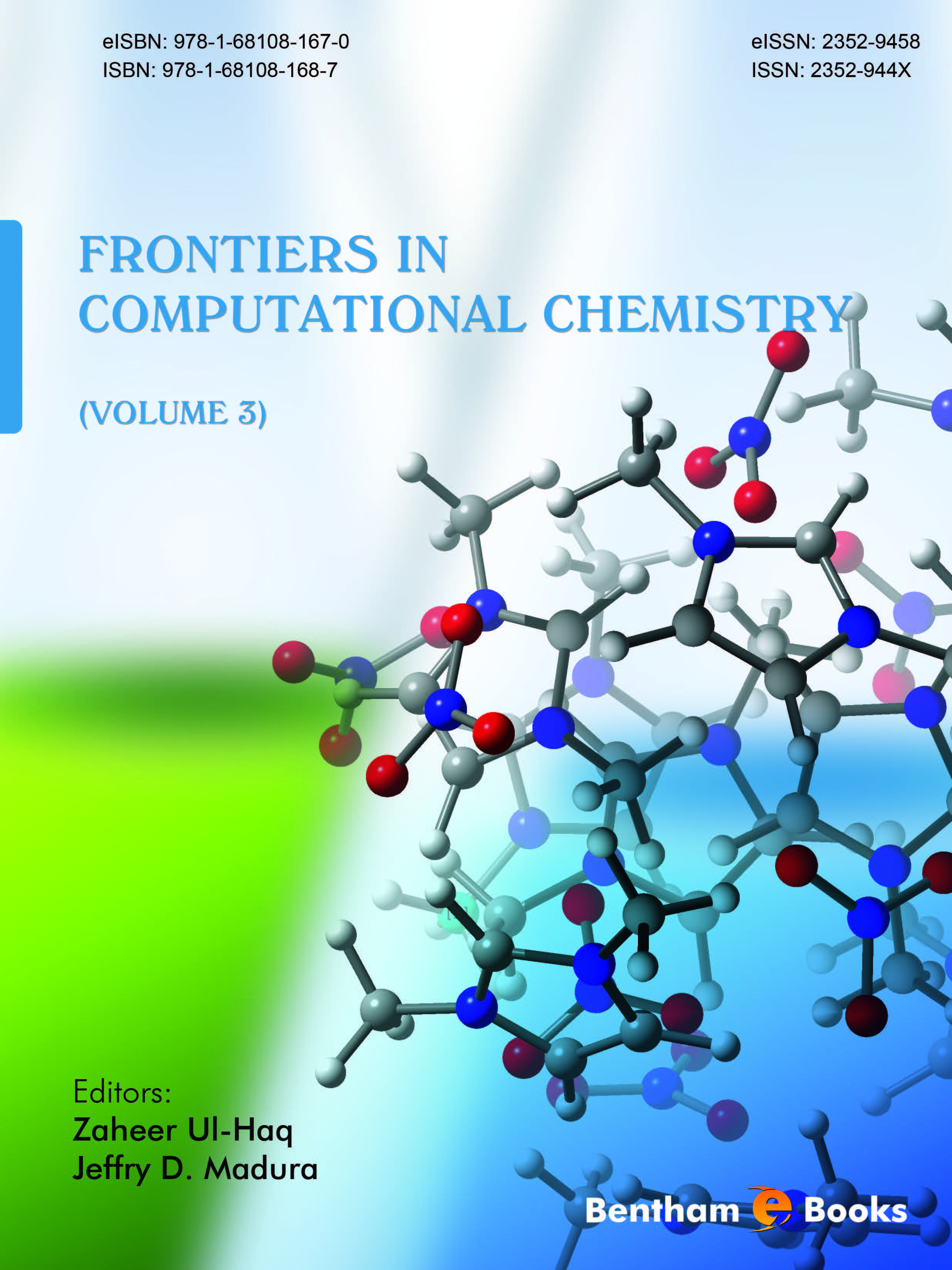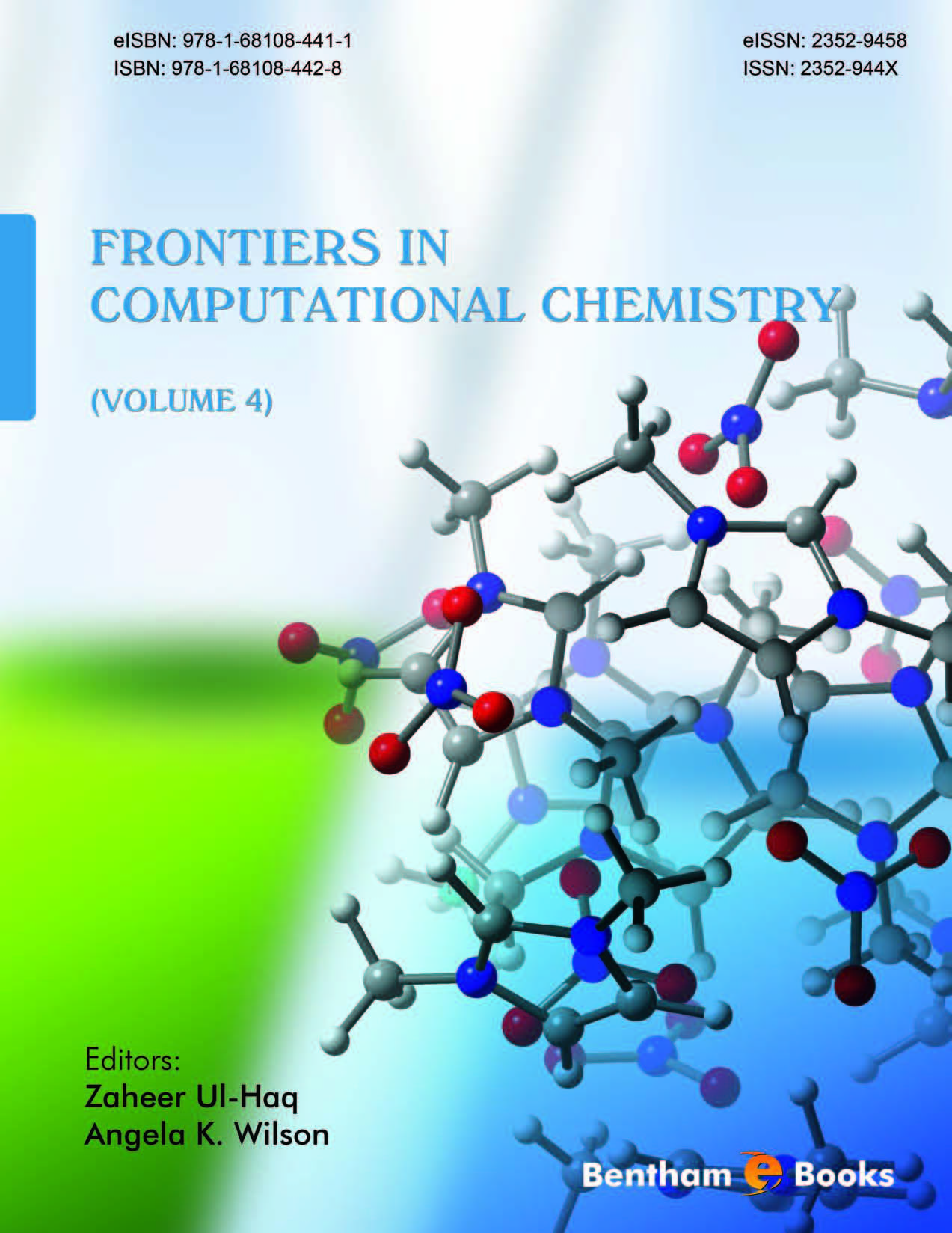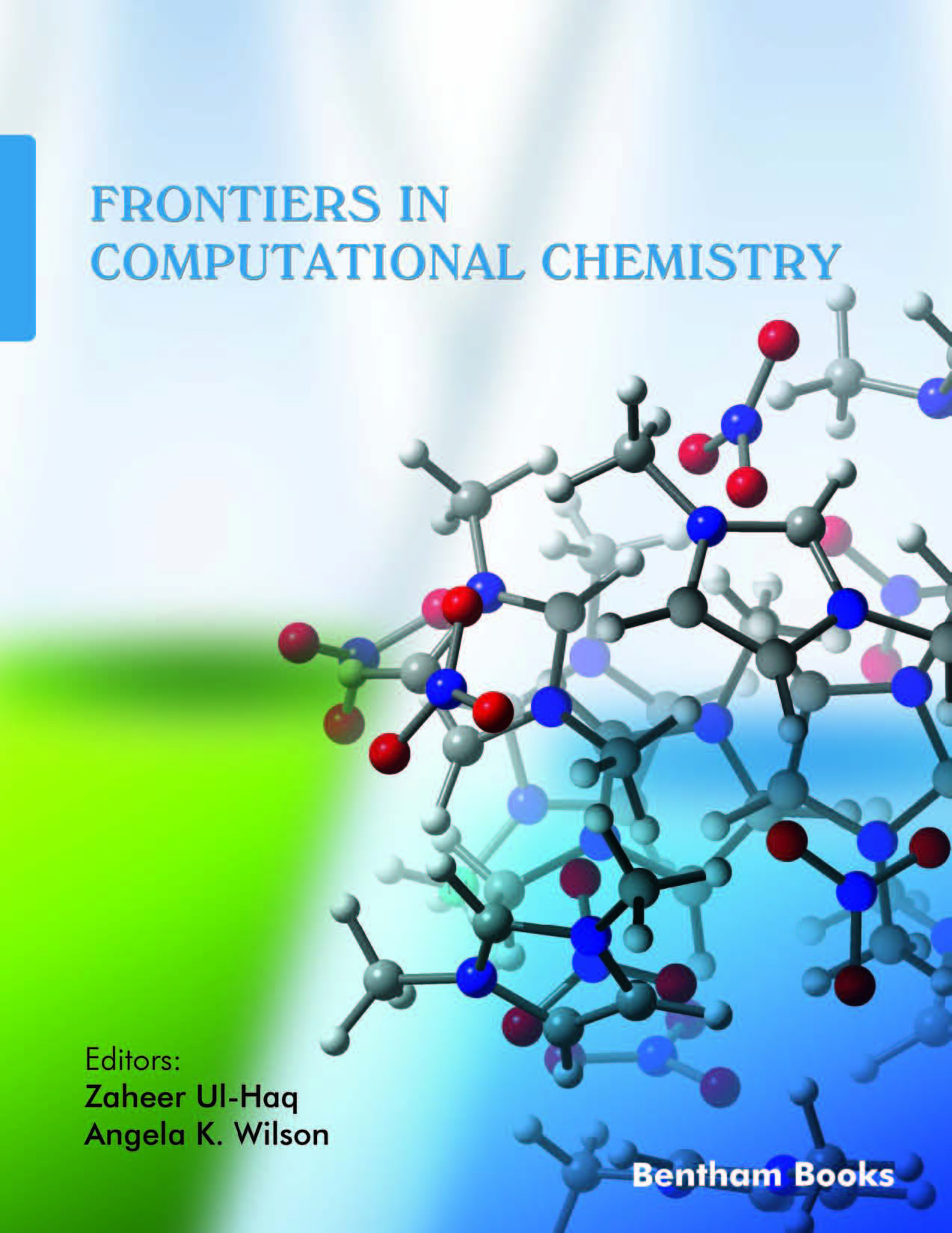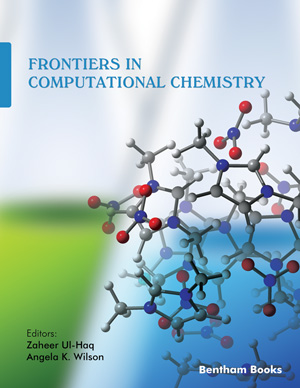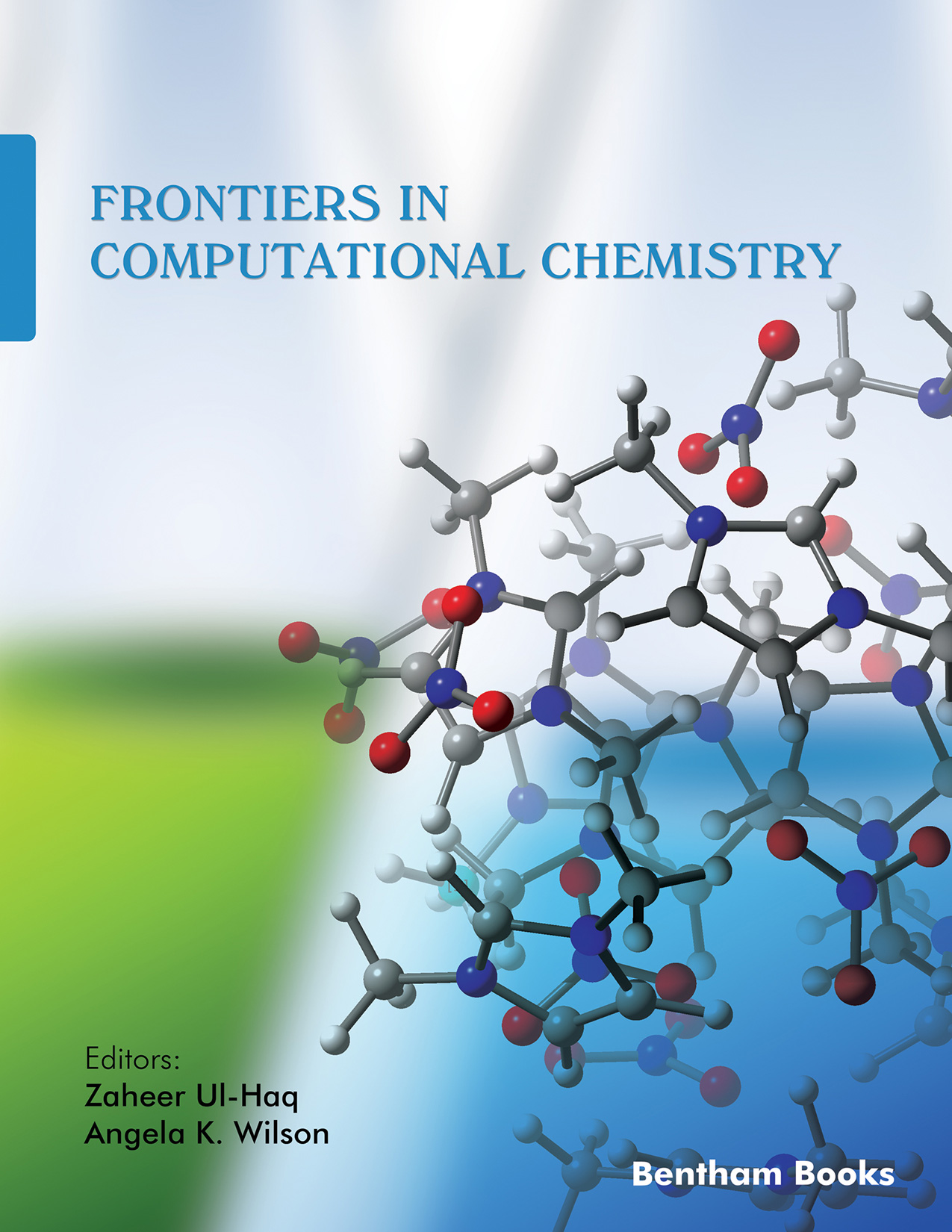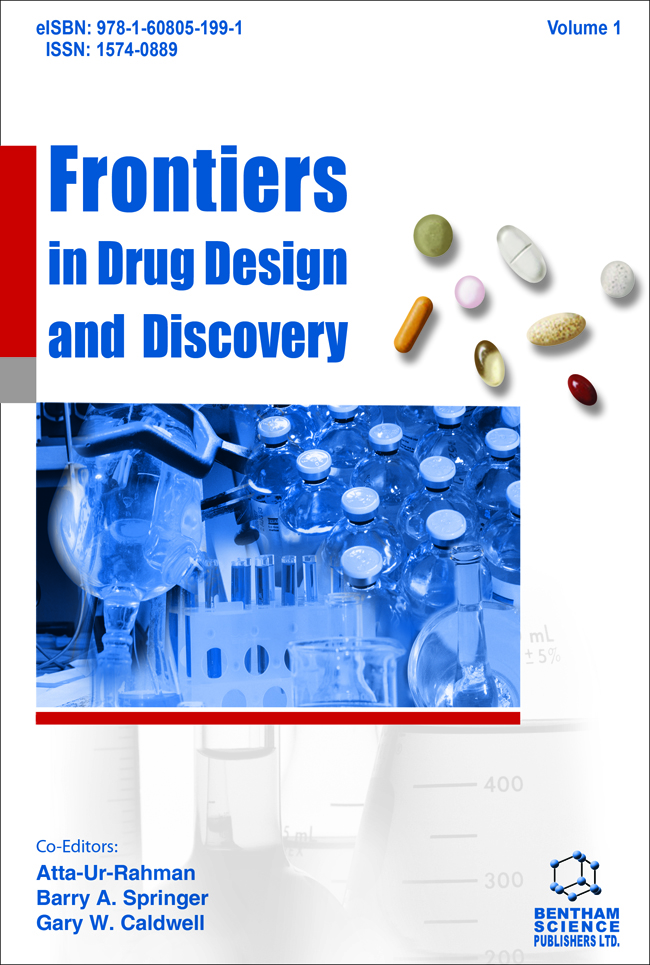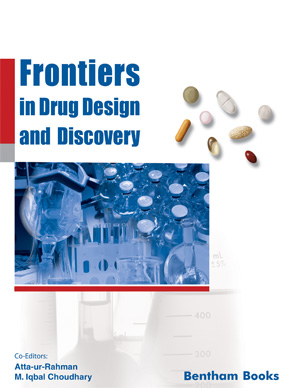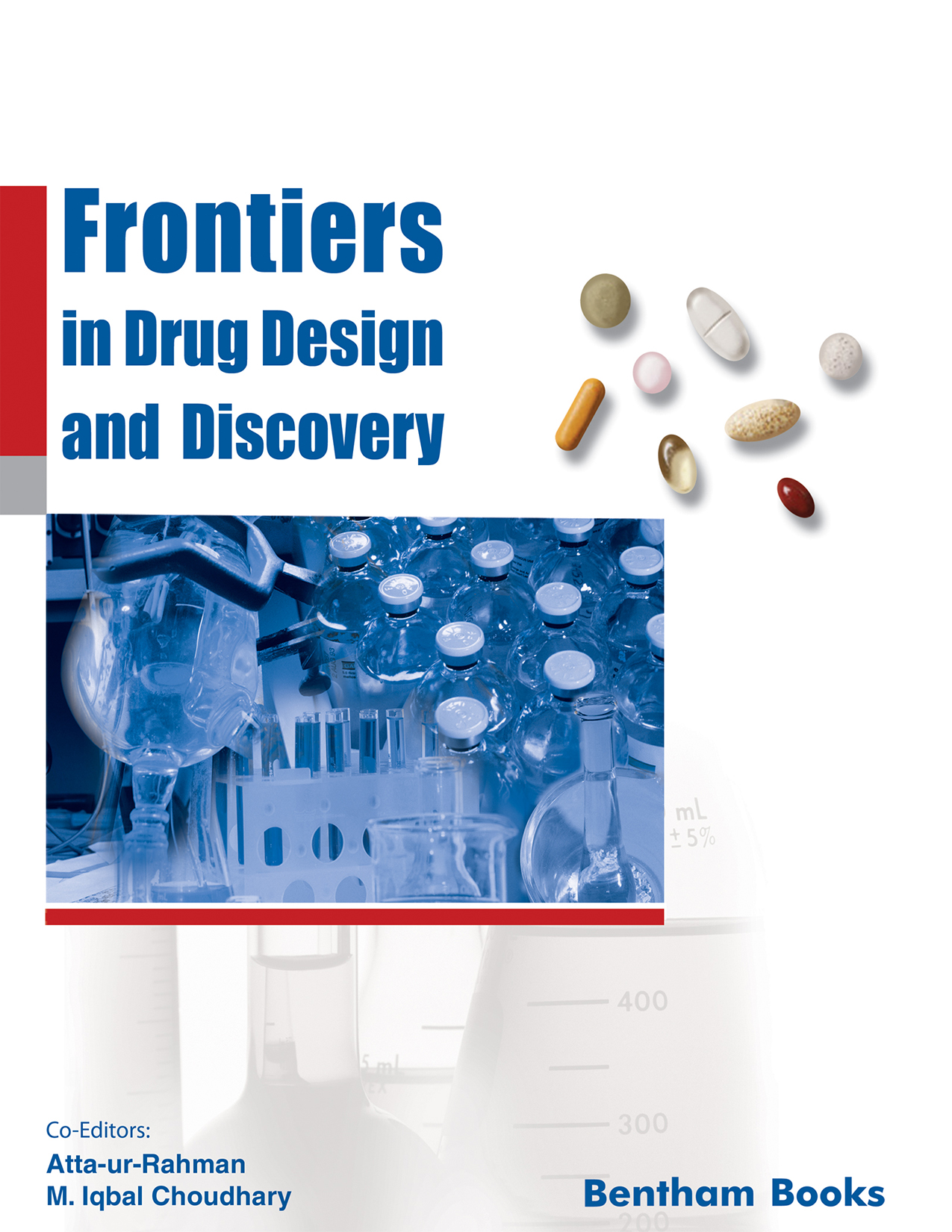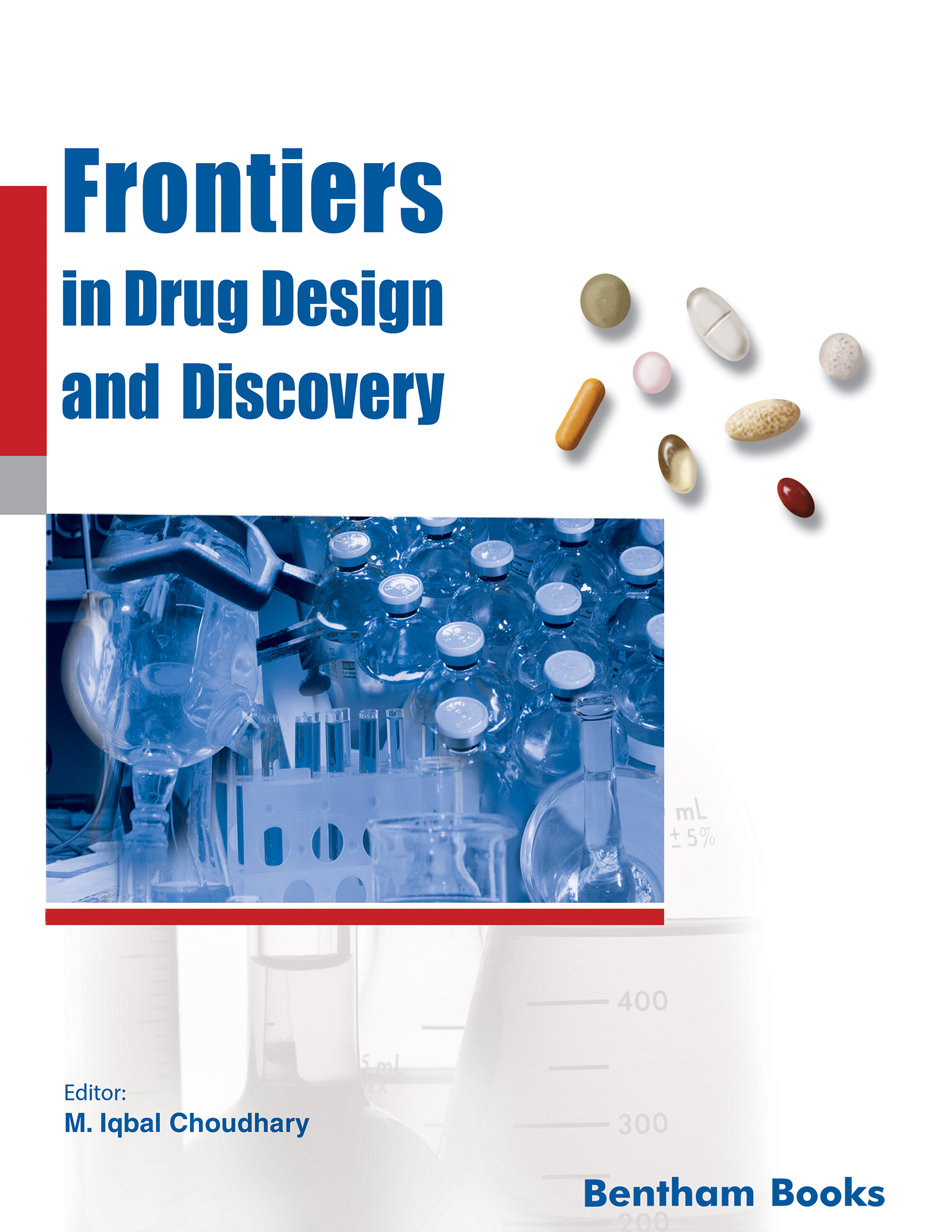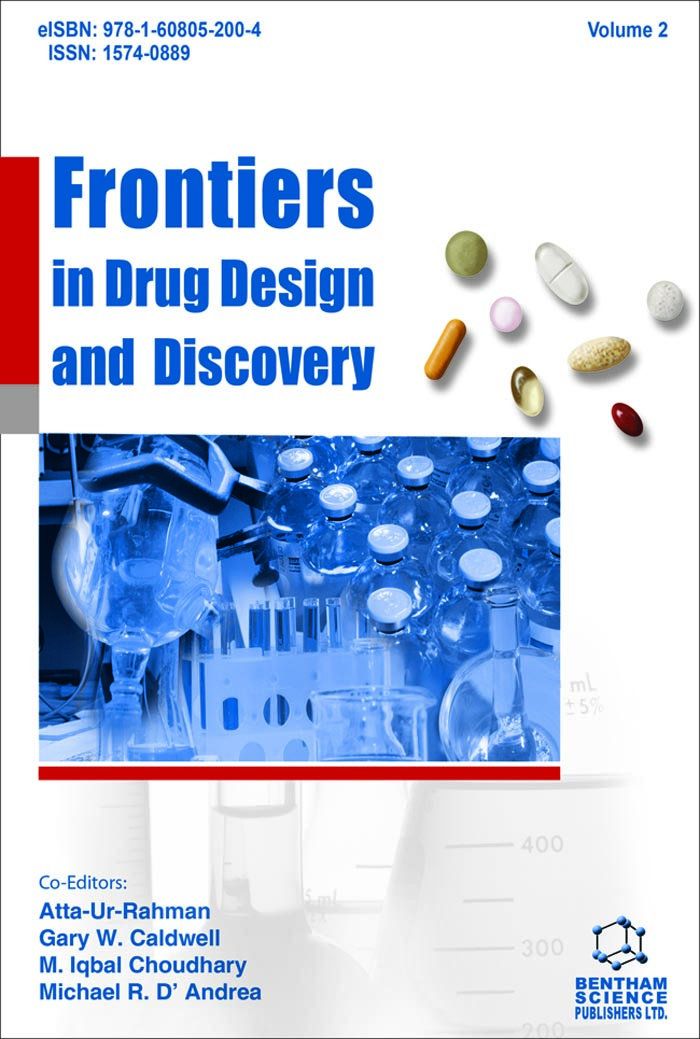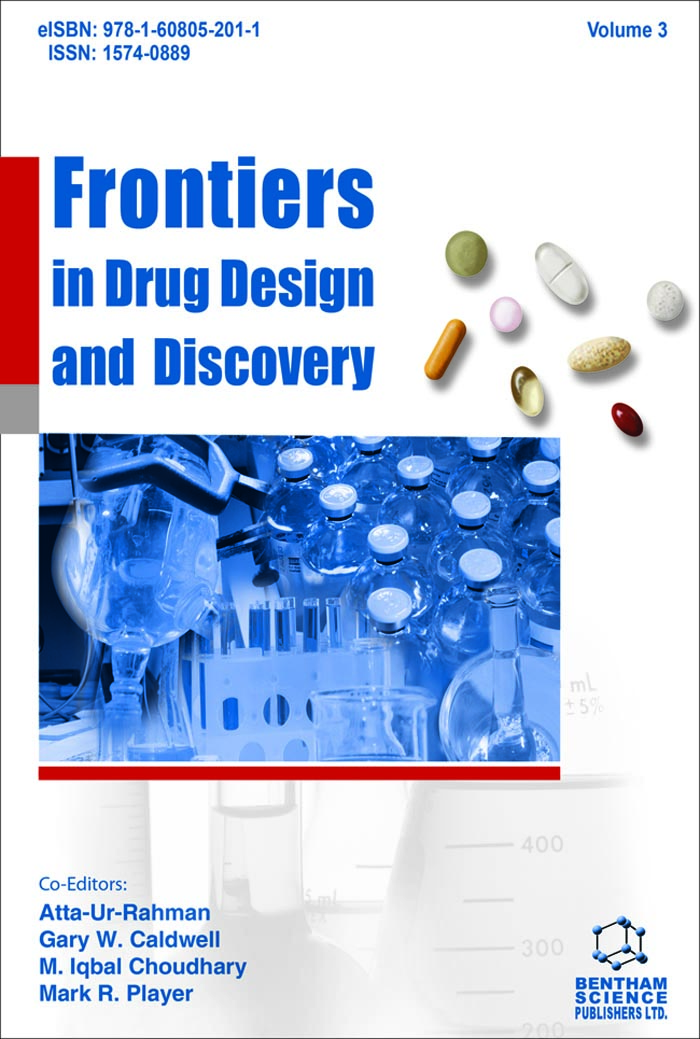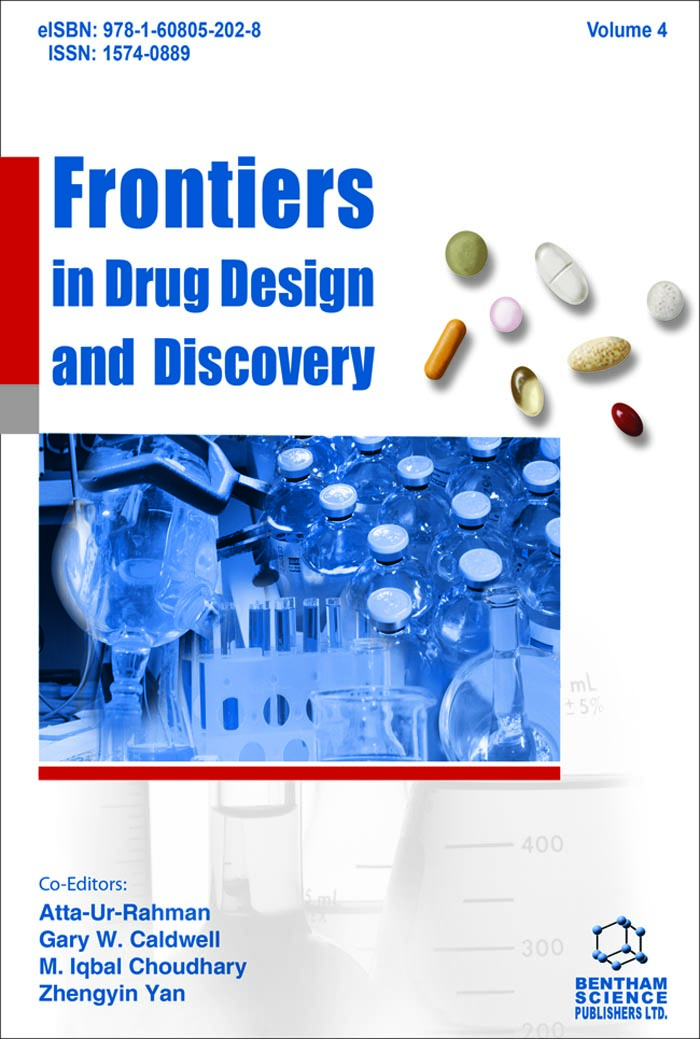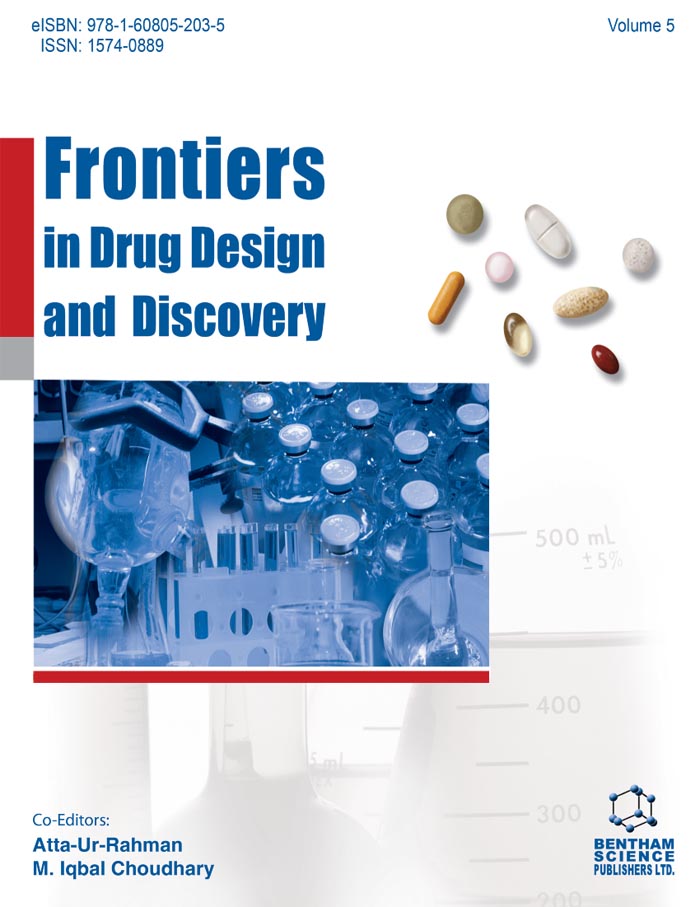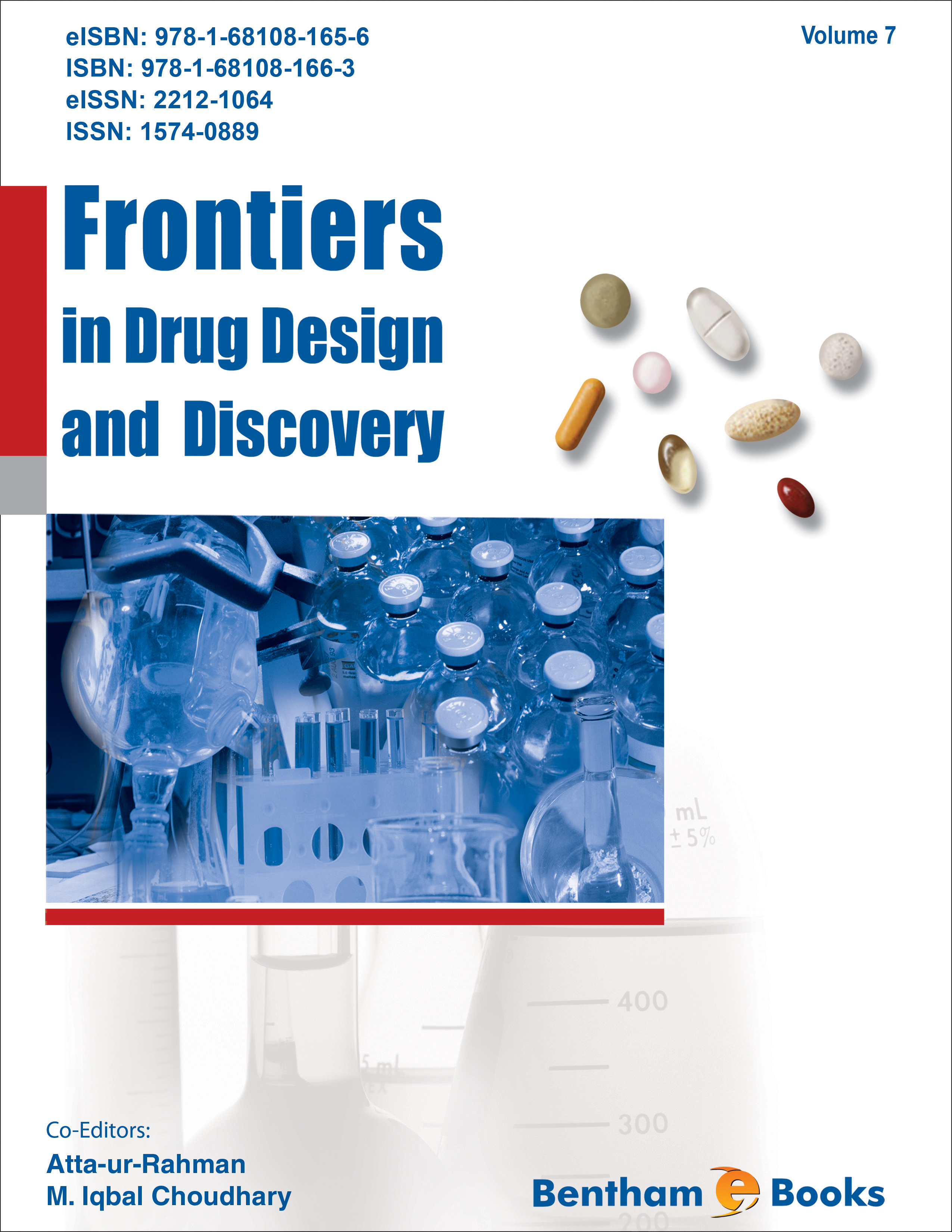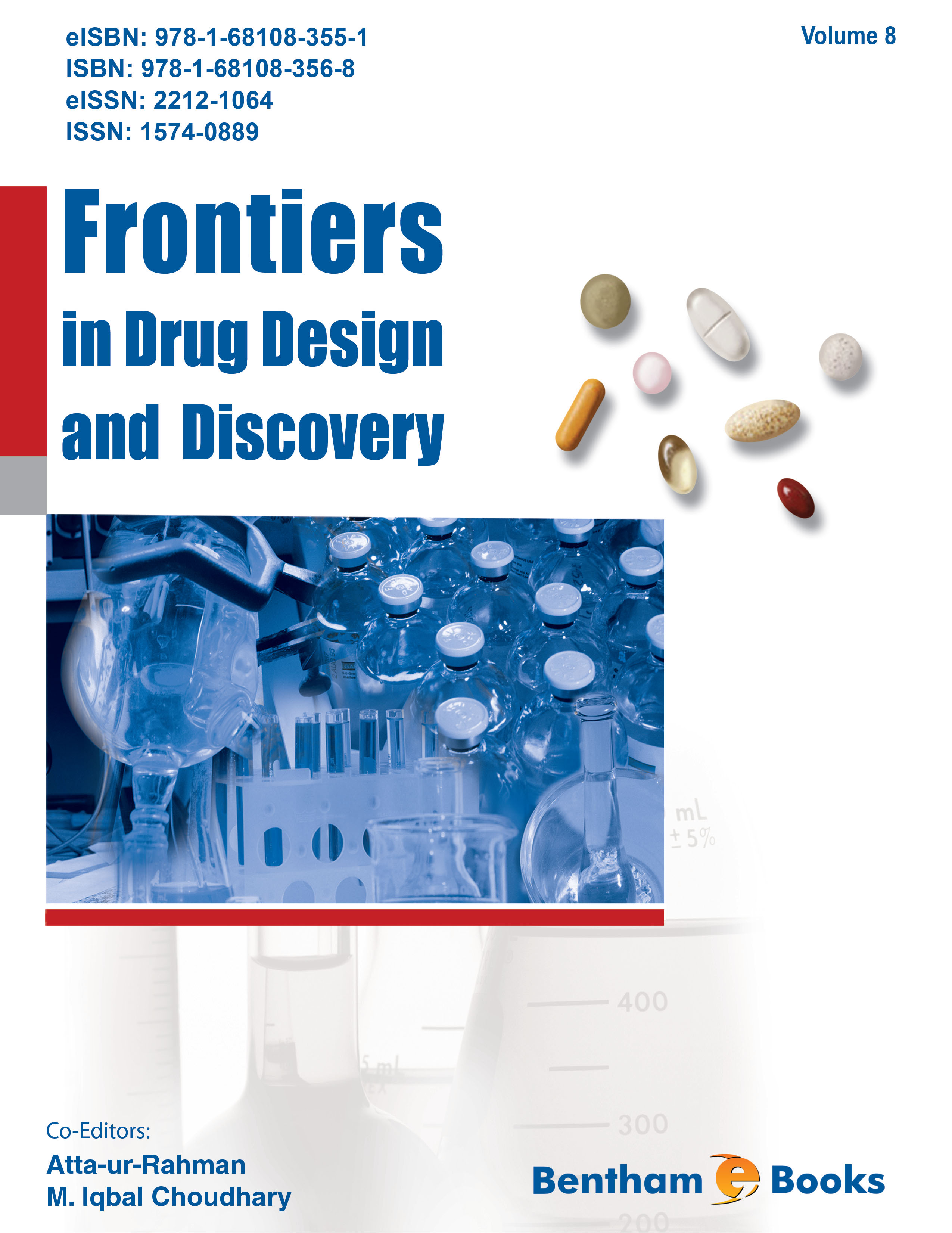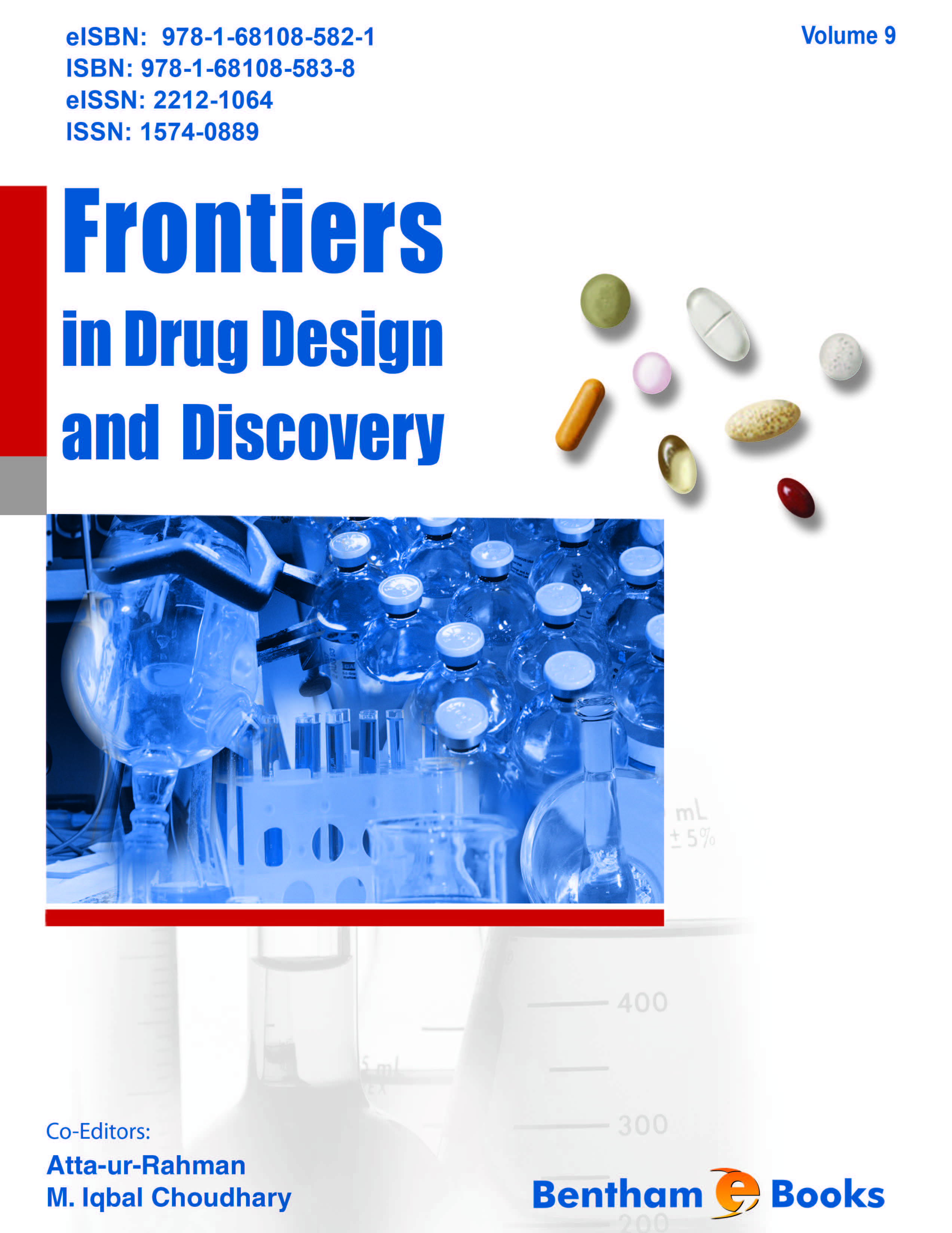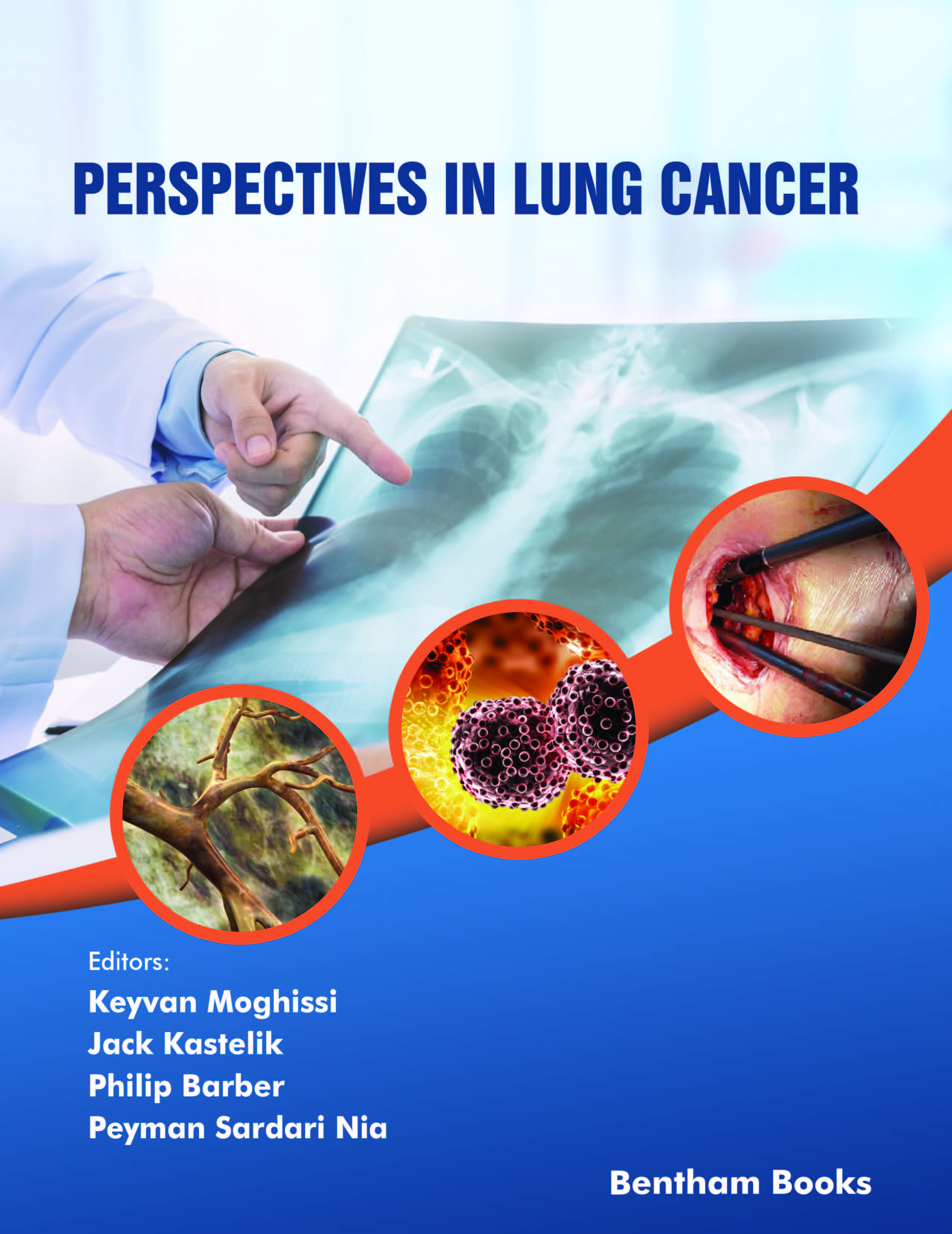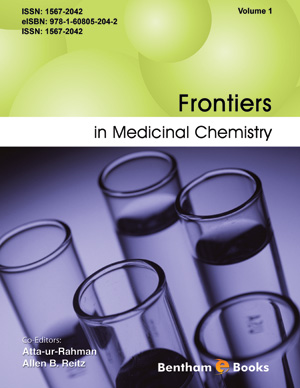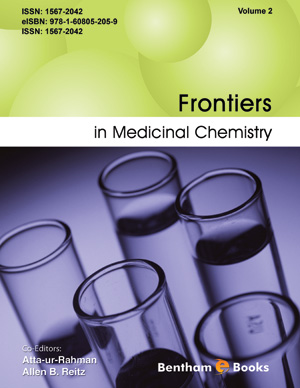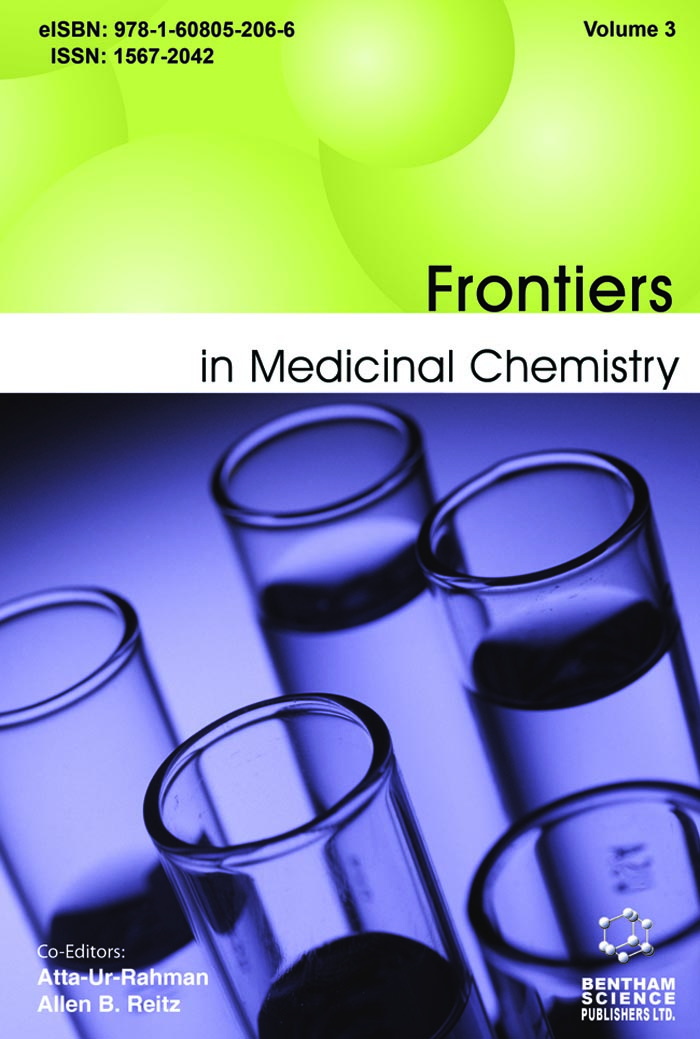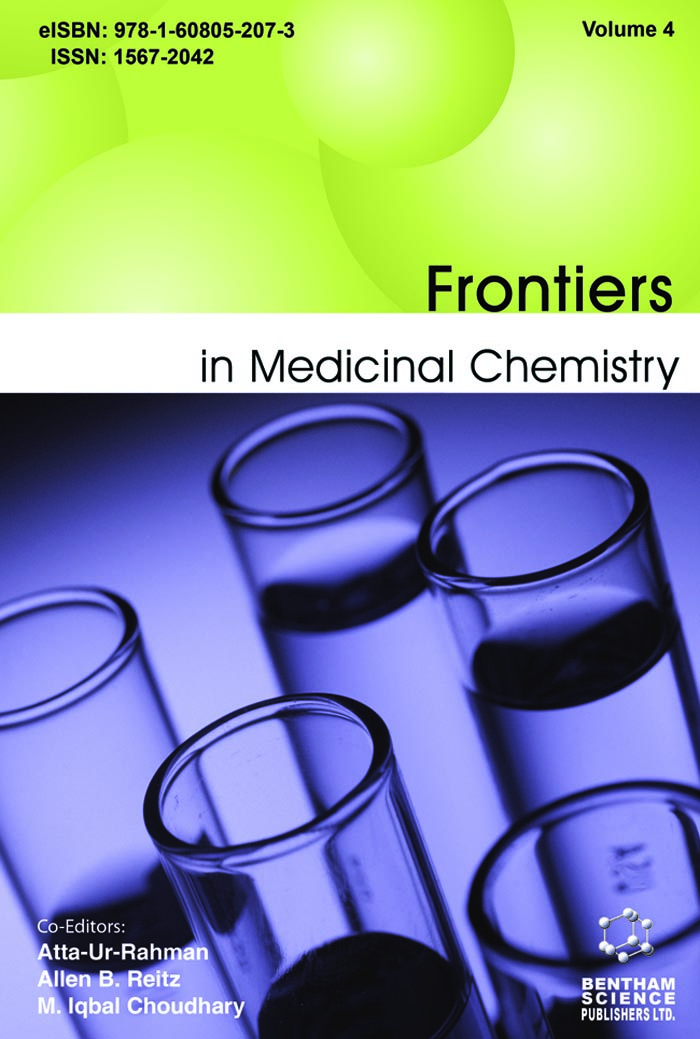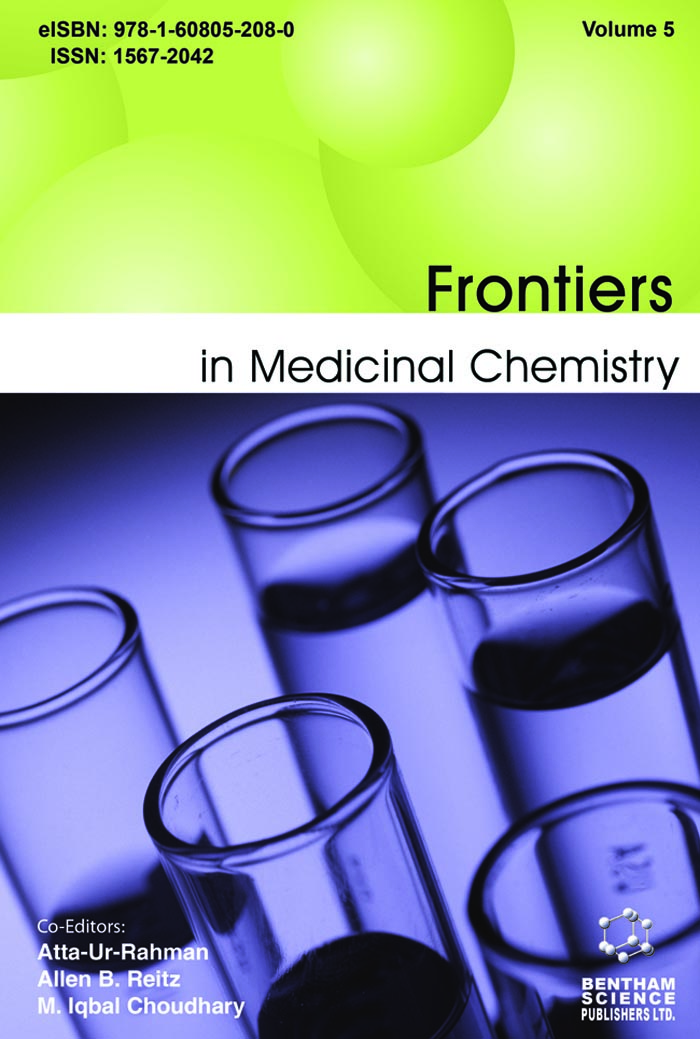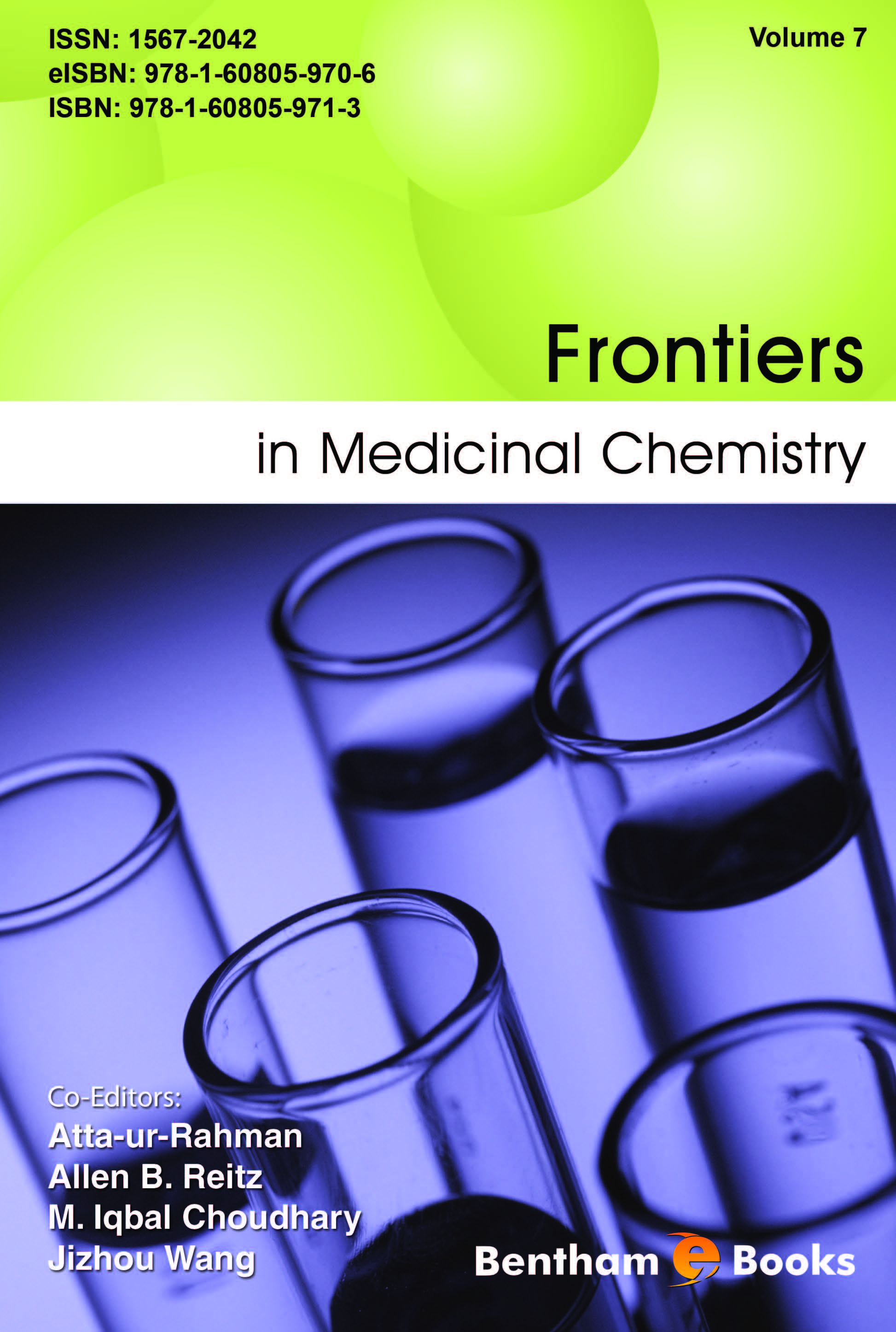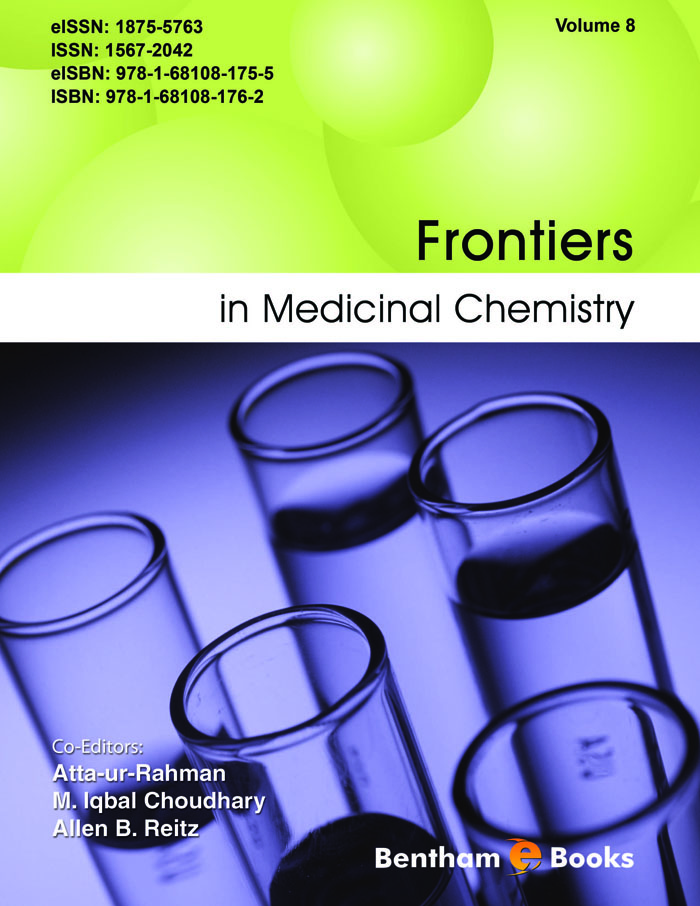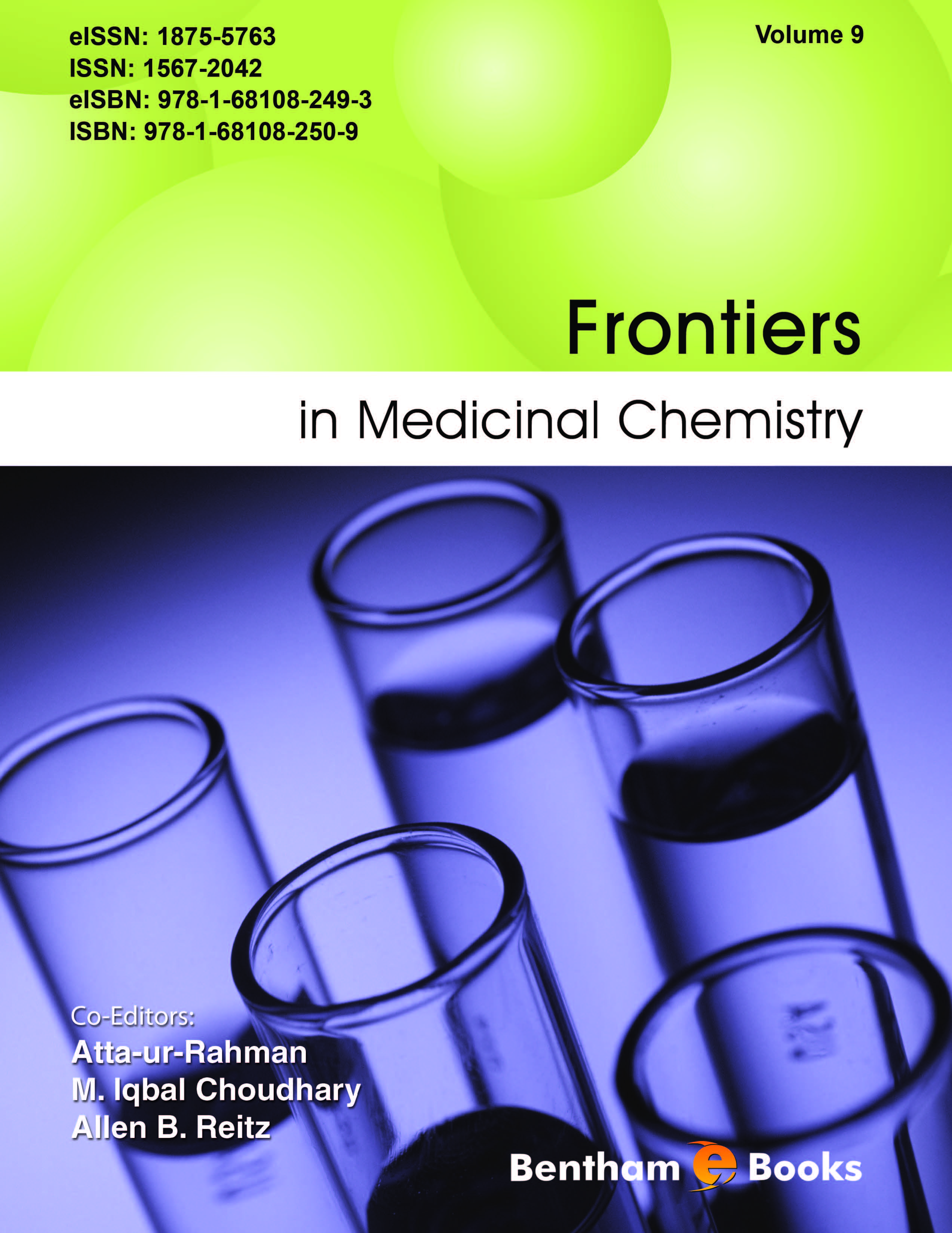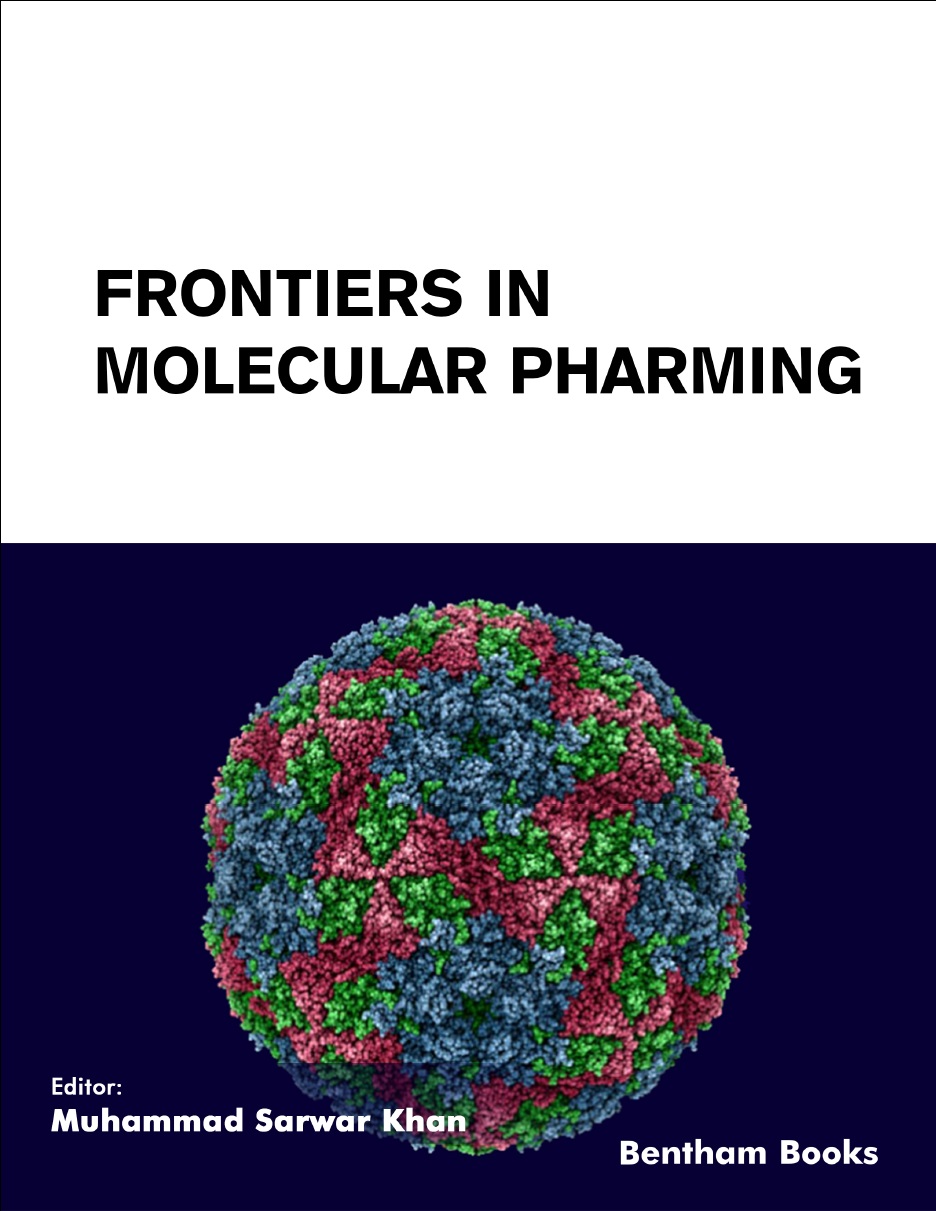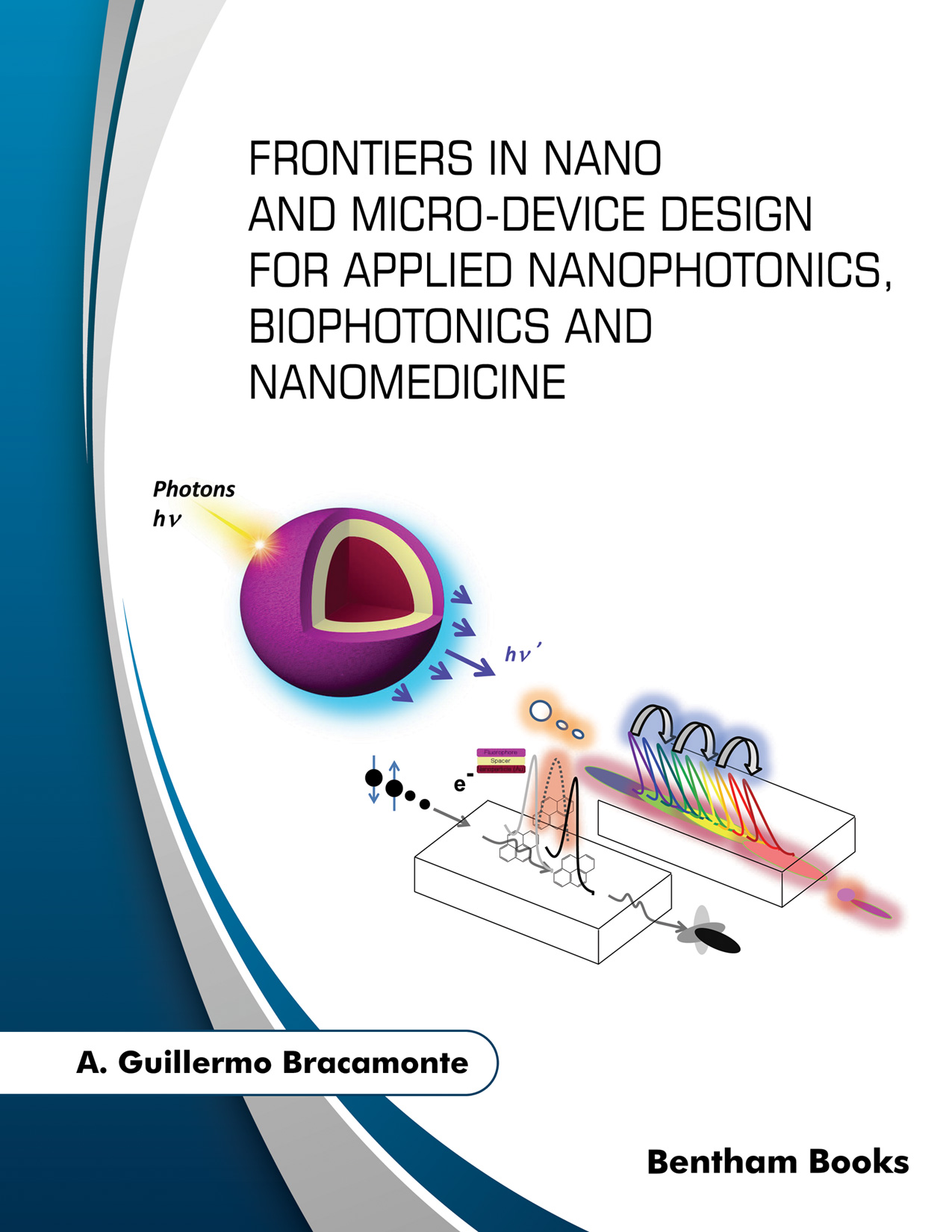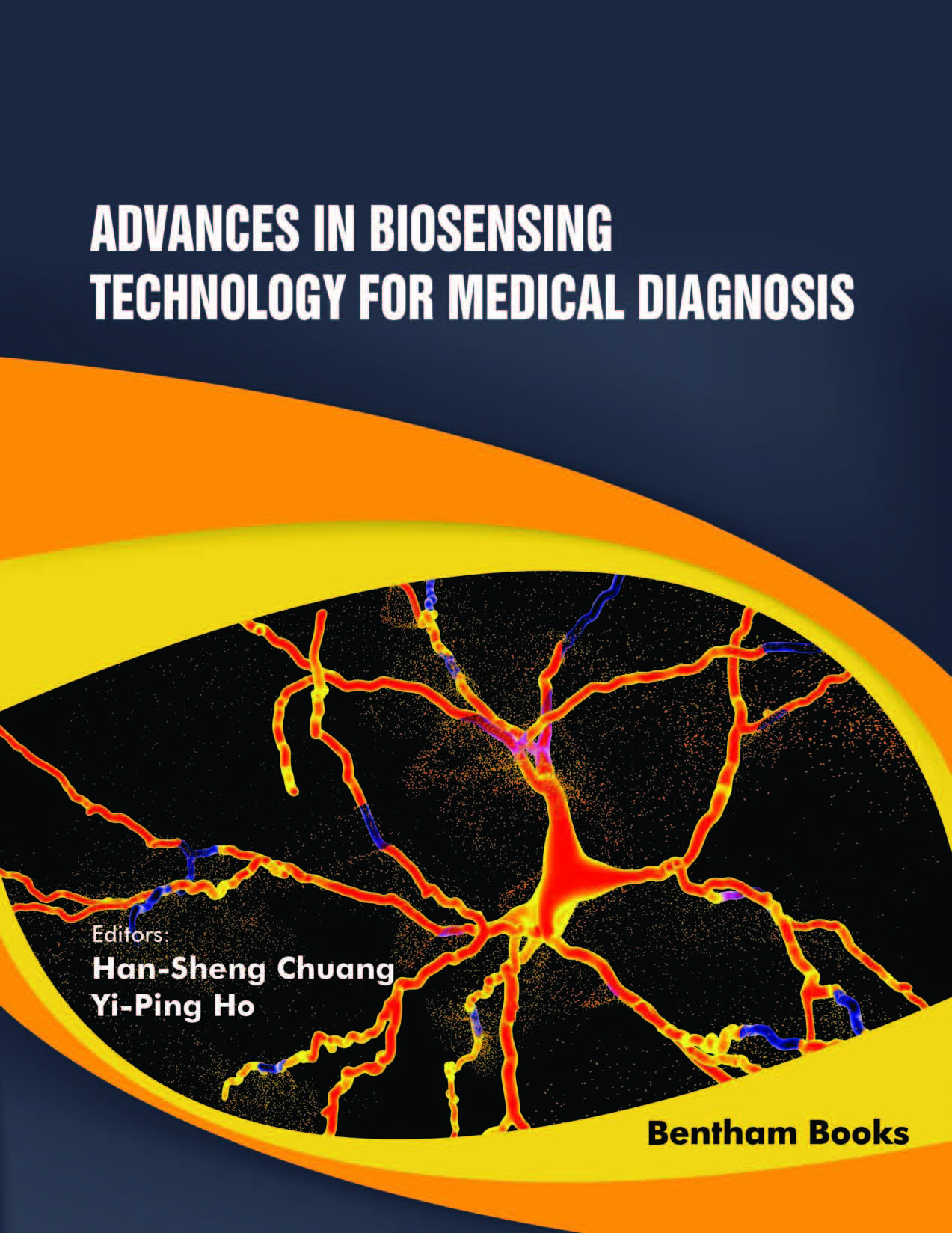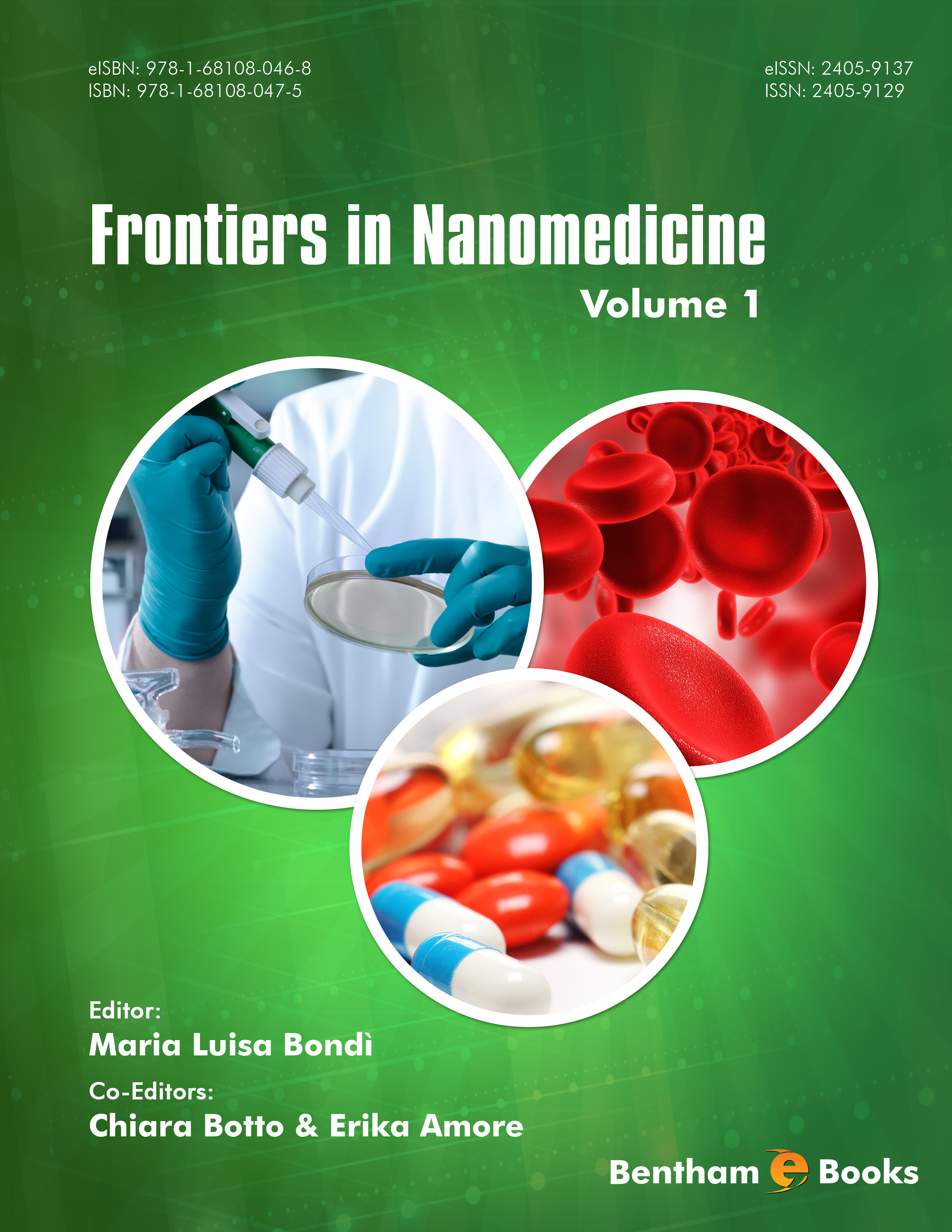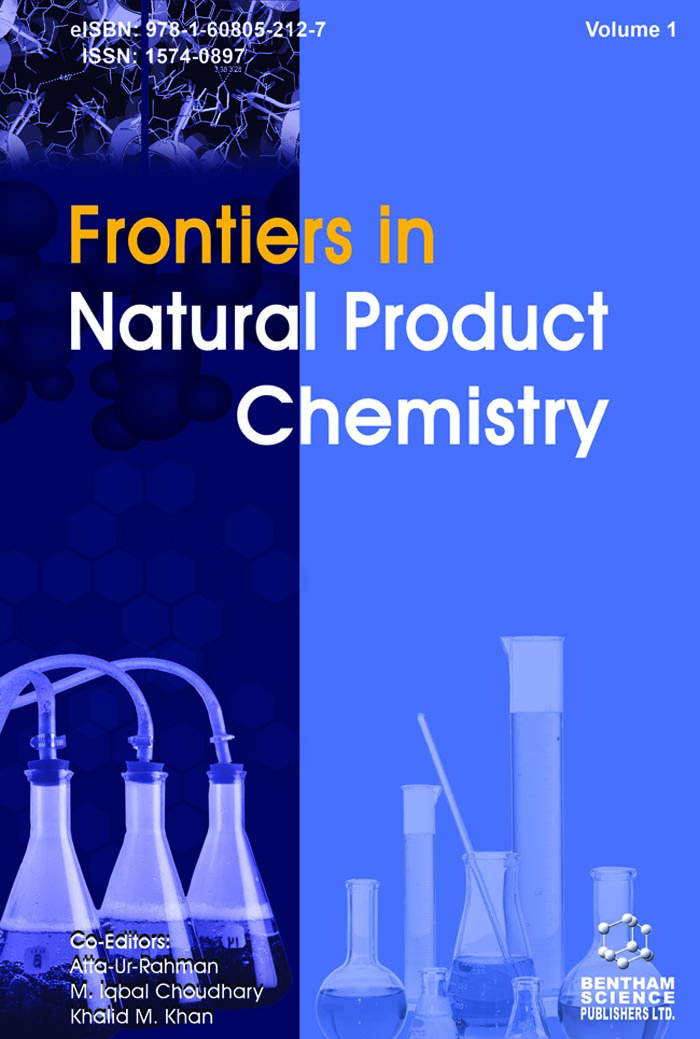Bentham Science Publishers
Bentham Science Publishers is a major publisher of more than 100 peer-reviewed science, technology and medical (STM) journals, along with a rapidly growing collection of eBooks. Since 1993, Bentham Science Publishers has been catering to the information needs of the pharmaceutical, engineering, biomedical and medical research community.801 - 900 of 1927 results
-
-
Frontiers in Clinical Drug Research - Alzheimer Disorders: Volume 2
More LessFrontiers in Clinical Drug Research - Alzheimer Disorders is an e-Book series concerned with Alzheimer's disease (AD) that causes dementia, or loss of brain function. The disease affects the parts of the brain that deal with memory, thought, and language. Chapters in each volume focus on (Alzheimer Disorders) drug research with special emphasis on clinical trials, research on drugs in advanced stages of development and cure for Alzheimer's disease and related disorders.
Frontiers in Clinical Drug Research - Alzheimer Disorders will be of particular interest to readers interested in drug therapy of this specific neurodegenerative condition and related brain disorders as the series provides relevant reviews written by experts in field of Alzheimer's Disease research.
-
-
-
Frontiers in Clinical Drug Research - Alzheimer Disorders: Volume 3
More LessFrontiers in Clinical Drug Research - Alzheimer Disorders is an e-Book series concerned with Alzheimer's disease (AD) that causes dementia, or loss of brain function. The disease affects the parts of the brain that deal with memory, thought, and language. Chapters in each volume focus on (Alzheimer Disorders) drug research with special emphasis on clinical trials, research on drugs in advanced stages of development and cure for Alzheimer’s disease and related disorders.
Frontiers in Clinical Drug Research - Alzheimer Disorders will be of particular interest to readers interested in drug therapy of this specific neurodegenerative condition and related brain disorders as the series provides relevant reviews written by experts in field of Alzheimers Disease research.
The third volume of this series features research on
-perfusional modifications in prodromal Alzheimer's disease,
-BACE inhibition treatment,
-frontotemporal dementia caused by progranulin mutations
-evidence-based treatment for psychological symptoms of Alzheimer’s Disease
-
-
-
Frontiers in Clinical Drug Research - Alzheimer Disorders: Volume 4
More LessFrontiers in Clinical Drug Research - Alzheimer Disorders is an e-Book series concerned with Alzheimer's disease (AD) that causes dementia, or loss of brain function. The disease affects the parts of the brain that deal with memory, thought, and language. Chapters in each volume focus on (Alzheimer Disorders) drug research with special emphasis on clinical trials, research on drugs in advanced stages of development and cure for Alzheimer’s disease and related disorders.
Frontiers in Clinical Drug Research - Alzheimer Disorders will be of particular interest to readers interested in drug therapy of this specific neurodegenerative condition and related brain disorders as the series provides relevant reviews written by experts in field of Alzheimer’s Disease research.
The fourth volume of this series features research on
- Melatoninergic Pathways in Alzheimer's disease,
- Nutritional Approaches in Alzheimer’s disease prevention,
- Updates on drugs and strategies for Alzheimer’s disease prevention
-
-
-
Frontiers in Clinical Drug Research - Alzheimer Disorders: Volume 5
More LessFrontiers in Clinical Drug Research - Alzheimer Disorders is an e-Book series which covers recent topics related to understanding Alzheimer's disease (AD) that causes dementia and has a neurodegenerative effect on the brain. The disease affects memory, thought process, and language of affected individuals. Chapters in each volume focus on (Alzheimer Disorders) drug research with special emphasis on clinical trials, research on drugs in advanced stages of development and cure for Alzheimer’s disease and related disorders.
Frontiers in Clinical Drug Research - Alzheimer Disorders will be of particular interest to readers interested in drug therapy of this specific neurodegenerative condition and related brain disorders as the series provides relevant reviews written by experts in field of Alzheimer’s Disease research.
The fifth volume of this series features chapters covering critical discussions on AD management and new therapies. The topics reviewed in this volume include:
- Current concepts in management of AD
- The amyloid cascade hypothesis and stem cell-based AD therapy
- Phytochemicals targeting AD
- Dementia screening in primary clinical care settings
- Updates in dementia / AD clinical research and drug development
-
-
-
Frontiers in Clinical Drug Research - Alzheimer Disorders: Volume 6
More LessFrontiers in Clinical Drug Research - Alzheimer Disorders is a book series concerned with Alzheimer's disease (AD) that causes dementia, or loss of brain function. The disease affects the parts of the brain that deal with memory, thought, and language. Chapters in each volume focus on (Alzheimer Disorders) drug research with special emphasis on clinical trials, research on drugs in advanced stages of development and cure for Alzheimer’s disease and related disorders.
Frontiers in Clinical Drug Research - Alzheimer Disorders will be of particular interest to readers interested in drug therapy of this specific neurodegenerative condition and related brain disorders as the series provides relevant reviews written by experts in field of Alzheimer’s disease research.
-
-
-
Frontiers in Clinical Drug Research - Alzheimer Disorders: Volume 7
More LessFrontiers in Clinical Drug Research - Alzheimer Disorders is a book series concerned with Alzheimer's disease (AD), a disease that causes dementia, or loss of brain function. This disease affects parts of the brain that affect memory, thought, and language. Chapters in each volume focus on drug research with special emphasis on clinical trials, research on drugs in advanced stages of development and cure for Alzheimer' disease and related disorders.
-
-
-
Frontiers in Clinical Drug Research - Alzheimer Disorders: Volume 8
More LessFrontiers in Clinical Drug Research - Alzheimer Disorders is a book series concerned with Alzheimer's disease (AD), a disease that causes dementia, or loss of brain function. This disease affects parts of the brain that affect memory, thought and language. Chapters in each volume focus on drug research with special emphasis on clinical trials, research on drugs in advanced stages of development and cure for Alzheimer's disease and related disorders.
Frontiers in Clinical Drug Research - Alzheimer Disorders will be of particular interest to readers interested in drug therapy of this specific neurodegenerative condition and related brain disorders as the series provides relevant reviews written by experts in the field of Alzheimer's disease research.
The eighth volume of this series features chapters covering critical discussions on new therapies for AD. The reviews in this volume include:
- Novel Molecular Targets of Tauopathy; Therapeutic and Diagnostic Applications
- The Therapy of Alzheimer's Disease: Towards a New Generation of Drugs
- Could Antibiotics Be Therapeutic Agents in Alzheimer's Disease?
- Use of Antipsychotics in Patients with Alzheimer's Disease
- Approaches Based on Cholinergic Hypothesis and Cholinesterase Inhibitors in the Treatment of Alzheimer's Disease
- Potential Biological Mechanisms with Prophylactic Action in Rapid Cognitive Impairment in Late-Onset Alzheimer's Disease
-
-
-
Frontiers in Clinical Drug Research - Anti Allergy Agents
Volume 4
More LessFrontiers in Clinical Drug Research - Anti-Allergy Agents is a book series comprising of a selection of updated review articles relevant to the recent development of pharmacological agents used for the treatment of allergies. The scope of the reviews includes clinical trials of anti-inflammatory and anti-allergic drugs, drug delivery strategies used to treat specific allergies (such as inflammation, asthma and dermatological allergies), lifestyle dependent modes of therapies and the immunological or metabolic mechanisms that are of interest to researchers as targets for new drugs.
The fourth volume of this series brings 5 reviews which cover the following topics:
Anti-inflammatory and Immunomodulatory properties of medicinal plant products
Helminth therapy: a new tool for treatment of allergic diseases
An overview of anti-allergic medications in paediatric population
In-silico approaches in drug discovery and design of anti-allergic agents
Microbiota and allergy: possible Interventions
Frontiers in Clinical Drug Research - Anti-Allergy Agents will be of interest to immunologists and drug discovery researchers interested in anti-allergic drug therapy as the series provides relevant cutting edge reviews written by experts in this rapidly expanding field.
-
-
-
Frontiers in Clinical Drug Research - Anti Allergy Agents: Volume 5
More LessFrontiers in Clinical Drug Research - Anti-Allergy Agents is a book series comprising of a selection of updated review articles relevant to the recent development of pharmacological agents used for the treatment of allergies. The scope of the reviews includes clinical trials of anti-inflammatory and anti-allergic drugs, drug delivery strategies used to treat specific allergies (such as inflammation, asthma and dermatological allergies), lifestyle dependent modes of therapies and the immunological or metabolic mechanisms that are of interest to researchers as targets for new drugs.
The fifth volume of this series brings 5 reviews which cover the following topics:
- Resistin: an irresistible therapeutic target for inflammatory diseases, allergy-related disorders, and cancer
- Asthma in adults: evaluation, prevalence, and its clinical management
- Nitrogen-containing heterocycles as anti-allergy agents
- Experimental and clinical studies on the effects of nigella sativa and its constituents on allergic and immunological disorders
- Aspirin desensitization/challenge in patients with cardiovascular diseases: current trends and advances
Frontiers in Clinical Drug Research - Anti-Allergy Agents will be of interest to immunologists and drug discovery researchers interested in anti-allergic drug therapy as the series provides relevant cutting edge reviews written by experts in this rapidly expanding field.
-
-
-
Frontiers in Clinical Drug Research - Anti Infectives: Volume 2
More LessFrontiers in Clinical Drug Research - Anti infectives is an eBook series that brings updated reviews to readers interested in learning about advances in the development of pharmaceutical agents for the treatment of infectious diseases. The scope of the eBook series covers a range of topics including the chemistry, pharmacology, molecular biology and biochemistry of natural and synthetic drugs employed in the treatment of infectious diseases. Reviews in this series also include research on multi drug resistance and pre-clinical / clinical findings on novel antibiotics, vaccines, antifungal agents and antitubercular agents. Frontiers in Clinical Drug Research - Anti infectives is a valuable resource for pharmaceutical scientists and postgraduate students seeking updated and critically important information for developing clinical trials and devising research plans in the field of anti-infective drug discovery and epidemiology.
The second volume of this series features reviews that cover a variety of topics including:
-Identification of nosocomial pathogens and antimicrobials using phenotypic techniques
-Topical antimicrobials
-Anti-infective drug safety
-Antimicrobial resistance
… and much more.
-
-
-
Frontiers in Clinical Drug Research - Anti Infectives: Volume 3
More LessFrontiers in Clinical Drug Research - Anti infectives is an eBook series that brings updated reviews to readers interested in learning about advances in the development of pharmaceutical agents for the treatment of infectious diseases. The scope of the eBook series covers a range of topics including the chemistry, pharmacology, molecular biology and biochemistry of natural and synthetic drugs employed in the treatment of infectious diseases. Reviews in this series also include research on multi drug resistance and pre-clinical / clinical findings on novel antibiotics, vaccines, antifungal agents and antitubercular agents. Frontiers in Clinical Drug Research – Anti infectives is a valuable resource for pharmaceutical scientists and postgraduate students seeking updated and critically important information for developing clinical trials and devising research plans in the field of anti infective drug discovery and epidemiology.
The third volume of this series features reviews that cover a variety of topics including:
-Geomic mining and metabolomic techniques for developing antimcrobials
-Probiotic use in complementary antiretroviral therapy
-Anti-HIV pharmaceuticals
-Phytochemicals used for antimicrobial purposes
- Antimicrobial photodynamic therapy (APDT)
-
-
-
Frontiers in Clinical Drug Research - Anti Infectives: Volume 4
More LessFrontiers in Clinical Drug Research – Anti infectives is an eBook series that brings updated reviews to readers interested in learning about advances in the development of pharmaceutical agents for the treatment of infectious diseases. The scope of the eBook series covers a range of topics including the chemistry, pharmacology, molecular biology and biochemistry of natural and synthetic drugs employed in the treatment of infectious diseases. Reviews in this series also include research on multi drug resistance and pre-clinical / clinical findings on novel antibiotics, vaccines, antifungal agents and antitubercular agents. Frontiers in Clinical Drug Research – Anti infectives is a valuable resource for pharmaceutical scientists and postgraduate students seeking updated and critically important information for developing clinical trials and devising research plans in the field of anti infective drug discovery and epidemiology.
The fourth volume of this series features reviews that cover a variety of topics including:
-Strategies to prolong antibiotic life
-Catalytic antibodies for targeting rabies and influenza viruses
-Antiviral therapies for arenaviruses
-The role of steroids in viral infections
-Monoclonal antibody manufacturing processes
-Prevention and eradication of biofilms in medical devices
-
-
-
Frontiers in Clinical Drug Research - Anti Infectives: Volume 5
More LessFrontiers in Clinical Drug Research – Anti infectives is a book series that brings updated reviews to readers interested in learning about advances in the development of pharmaceutical agents for the treatment of infectious diseases. The scope of the book series covers a range of topics including the chemistry, pharmacology, molecular biology and biochemistry of natural and synthetic drugs employed in the treatment of infectious diseases. Reviews in this series also include research on multi drug resistance and pre-clinical / clinical findings on novel antibiotics, vaccines, antifungal agents and antitubercular agents.Frontiers in Clinical Drug Research – Anti infectives is a valuable resource for pharmaceutical scientists and postgraduate students seeking updated and critically important information for developing clinical trials and devising research plans in the field of anti infective drug discovery and epidemiology.
The fifth volume of this series features six reviews:
- Integrated Approaches for Marine Actinomycete Biodiscovery
- Therapeutic Use of Commensal Microbes: Fecal/Gut Microbiota Transplantation
- Alternative Approaches to Antimicrobials
- Nanoantibiotics: Recent Developments and Future
- Cranberry Juice and Other Functional Foods in Urinary Tract Infections in Women: A Review of Actual Evidence and Main Challenges
- Targeting Magnesium Homeostasis as Potential Anti-Infective Strategy Against Mycobacteria
-
-
-
Frontiers in Clinical Drug Research - Anti Infectives: Volume 8
More LessFrontiers in Clinical Drug Research – Anti infectives is a book series that brings updated reviews to readers interested in learning about advances in the development of pharmaceutical agents for the treatment of infectious diseases. The scope of the book series covers a range of topics including the chemistry, pharmacology, molecular biology and biochemistry of natural and synthetic drugs employed in the treatment of infectious diseases. Reviews in this series also include research on multi drug resistance and pre-clinical / clinical findings on novel antibiotics, vaccines, antifungal agents and antitubercular agents. Frontiers in Clinical Drug Research – Anti infectives is a valuable resource for pharmaceutical scientists and postgraduate students seeking updated and critically important information for developing clinical trials and devising research plans in the field of anti infective drug discovery and epidemiology.
The eighth volume of this series presents comprehensive reviews of interest to readers interested in the treatment of inflammatory diseases, new antiviral agents and strategies, specific antiprotozoal drugs that work against leishmania and helminths, and a study on potential agents against American foulbrood in honey bees. The 7 reviews included in this volume are:
- Monoclonal antibodies as therapeutic agents for inflammatory diseases
- Pharmacotherapy of emerging antiviral agents
- Antiviral activity of vitamin D and COVID-19: current understanding
- Anti-infectives to combat leishmaniasis
- Anthelmintic drug discovery: current situation and future perspectives
- Therapeutic targets for emerging Zika virus infection and vaccines in clinical trials
- Agro-industrial waste: new source of raw material for the control of American foulbrood in honey bees
-
-
-
Frontiers in Clinical Drug Research - Anti-Allergy Agents: Volume 1
More LessFrontiers in Clinical Drug Research - Anti-Allergy Agents is an exciting eBook series comprising a selection of updated review articles relevant to the recent development of pharmacological agents used for the treatment of allergies. The scope of the reviews includes clinical trials of anti-inflammatory and anti-allergic drugs, drug delivery strategies used to treat specific allergies (such as inflammation, asthma and dermatological allergies), lifestyle dependent modes of therapies and the immunological or metabolic mechanisms that are of interest to researchers as targets for new drugs.
The first volume of this series sheds light on new therapies that can be employed for allergic reactions in patients (both traditional and non-traditional therapies), nutrition based therapies and the use of substances such as omalizumab and adrenaline to counter inflammatory response and anaphylaxis in patients.
Frontiers in Clinical Drug Research - Anti-Allergy Agents will be of interest to immunologists and drug discovery researchers interested in anti-allergic drug therapy as the series provides relevant cutting edge reviews written by experts in this rapidly expanding field.
-
-
-
Frontiers in Clinical Drug Research - Anti-Allergy Agents: Volume 2
More LessFrontiers in Clinical Drug Research - Anti-Allergy Agents is an exciting eBook series comprising a selection of updated review articles relevant to the recent development of pharmacological agents used for the treatment of allergies. The scope of the reviews includes clinical trials of anti-inflammatory and anti-allergic drugs, drug delivery strategies used to treat specific allergies (such as inflammation, asthma and dermatological allergies), lifestyle dependent modes of therapies and the immunological or metabolic mechanisms that are of interest to researchers as targets for new drugs.
The second volume of this series brings 7 reviews which cover neuro- and immunomodulating therapies for asthma and COPD, antioxidant therapies for allergies, allergic rhinitis medications and more.
Frontiers in Clinical Drug Research - Anti-Allergy Agents will be of interest to immunologists and drug discovery researchers interested in anti-allergic drug therapy as the series provides relevant cutting edge reviews written by experts in this rapidly expanding field.
-
-
-
Frontiers in Clinical Drug Research - Anti-Allergy Agents: Volume 3
More LessFrontiers in Clinical Drug Research - Anti-Allergy Agents is a book series comprising of a selection of updated review articles relevant to the recent development of pharmacological agents used for the treatment of allergies. The scope of the reviews includes clinical trials of anti-inflammatory and anti-allergic drugs, drug delivery strategies used to treat specific allergies (such as inflammation, asthma and dermatological allergies), lifestyle dependent modes of therapies and the immunological or metabolic mechanisms that are of interest to researchers as targets for new drugs.
The third volume of this series brings 5 reviews which cover the following topics: H1 receptor selectivity, chronic spontaneous urticaria therapy, smooth muscle cell Ca2+ signaling pathway targeting for asthma therapy, allergic rhinitis and endosomal toll-like receptors.
Frontiers in Clinical Drug Research - Anti-Allergy Agents will be of interest to immunologists and drug discovery researchers interested in anti-allergic drug therapy as the series provides relevant cutting edge reviews written by experts in this rapidly expanding field.
-
-
-
Frontiers in Clinical Drug Research - Anti-Cancer Agents: Volume 1
More LessFrontiers in Clinical Drug Research - Anti-Cancer Agents should prove to be a valuable resource for pharmaceutical scientists and postgraduate students seeking updated and critical information for developing clinical trials and devising research plans in the field. The chapters in this volume have been written by leading experts from the field.
The contents of this book include new approaches to cancer therapy, treatment of metastatic non-small cell lung cancer with epidermal growth factor receptor-tyrosine kinase inhibitors, targeting key signaling pathways in pediatric brain tumors, current status of cladribine in lymphoid and myeloid malignancies, natural anti-cancer products and the mechanisms of telomere and telomerase regulation in hematologic malignancies.
The eBook series is essential to all scientists involved in clinical drug research who wish to keep abreast of rapid and important developments in the field. The readers will find these reviews valuable and will certainly trigger further research in the pharmaceutical development of anti-cancer agents.
-
-
-
Frontiers in Clinical Drug Research - Anti-Cancer Agents: Volume 2
More LessFrontiers in Clinical Drug Research - Anti-Cancer Agents should prove to be a valuable resource for pharmaceutical scientists and postgraduate students seeking updated and critical information for developing clinical trials and devising research plans in the field. The chapters featured in each volume are written by leading experts in oncology and clinical pharmacology. The eBook series is essential reading for all scientists involved in clinical drug research who wish to keep abreast of rapid and important developments in the development of anti-cancer agents.
The contents of this volume include reviews on dendrimers for anti-cancer drug delivery, treatment methods for advanced cutaneous squamous cell carcinoma, targeting heat shock proteins for cancer treatment, Bayesian systems for optimizing treatment protocols in oncology and much more.
-
-
-
Frontiers in Clinical Drug Research - Anti-Cancer Agents: Volume 3
More LessFrontiers in Clinical Drug Research - Anti-Cancer Agents is an eBook series intended for pharmaceutical scientists, postgraduate students and researchers seeking updated and critical information for developing clinical trials and devising research plans in anti-cancer research. Reviews in each volume are written by experts in medical oncology and clinical trials research and compile the latest information available on special topics of interest to oncology researchers.
The third volume of the eBook series begins with a detailed review of the molecular biology of inhibitors that target EGF-family receptors. This review is divided into two parts that covers extracellular and intracellular molecules. Other reviews cover targeted therapies for cancers such as melanoma, follicular lymphoma and topics such as cancer immunotherapy, apoptosis targeting and the Warburg Effect.
-
-
-
Frontiers in Clinical Drug Research - Anti-Cancer Agents: Volume 4
More LessFrontiers in Clinical Drug Research - Anti-Cancer Agents is a book series intended for pharmaceutical scientists, postgraduate students and researchers seeking updated and critical information for developing clinical trials and devising research plans in anti-cancer research. Reviews in each volume are written by experts in medical oncology and clinical trials research and compile the latest information available on special topics of interest to oncology researchers.
The fourth volume of the book brings forth reviews on biomarkers and new drugs used for treating gastrointestinal cancer and breast cancer. The volume also covers the topics of adjuvant therapy, cancer nanodrugs and the role of adiponectin and dicycloplatin in cancer therapy.
-
-
-
Frontiers in Clinical Drug Research - Anti-Cancer Agents: Volume 5
More LessFrontiers in Clinical Drug Research - Anti-Cancer Agents is a book series intended for pharmaceutical scientists, postgraduate students and researchers seeking updated and critical information for developing clinical trials and devising research plans in anti-cancer research. Reviews in each volume are written by experts in medical oncology and clinical trials research and compile the latest information available on special topics of interest to oncology researchers.
The fifth volume of the book features reviews on biochemical inhibitors (second-generation protein kinase Inhibitors, histone deacetylase inhibitors, immune checkpoint inhibitors, EGFR Tyrosine Kinase inhibitors, non-coding RNAs), apoptosis, and physical exercise therapy for cancer patients undergoing chemotherapy. The treatment strategies in this volume cover cancers such as acute myeloid leukemia, gastrointestinal cancer, breast cancer and lung cancer.
-
-
-
Frontiers in Clinical Drug Research - Anti-Cancer Agents: Volume 6
More LessFrontiers in Clinical Drug Research - Anti-Cancer Agents is a book series intended for pharmaceutical scientists, postgraduate students and researchers seeking updated and critical information for developing clinical trials and devising research plans in anti-cancer research. Reviews in each volume are written by experts in medical oncology and clinical trials research and compile the latest information available on special topics of interest to oncology and pharmaceutical chemistry researchers.
The sixth volume of the book features reviews on these topics:
· Immunomodulating Agents in The Treatment of Acute Myeloid Leukemia
· Potential Natural Products for Prostate Cancer Management
· Inhibition of Key Protein-Protein Interactions by Small Molecules for Cancer Drug Design
· Efficacy of Hepatic Arterial Infusion Chemotherapy (HAIC) For Advanced Hepatocellular Carcinoma
· Targeting Cancer Stem Cells: Implications in Health and Disease
-
-
-
Frontiers in Clinical Drug Research - Anti-Cancer Agents: Volume 7
More LessFrontiers in Clinical Drug Research - Anti-Cancer Agents is a book series intended for pharmaceutical scientists, postgraduate students and researchers seeking updated and critical information for developing clinical trials and devising research plans in anti-cancer research. Reviews in each volume are written by experts in medical oncology and clinical trials research and compile the latest information available on special topics of interest to oncology and pharmaceutical chemistry researchers. The seventh volume of the book features reviews on these topics:
Essential oils and monoterpenes as potential anti-cancer agents
Drug delivery systems and emerging immunotherapeutic strategies for the treatment of glioblastoma
CTDNA in solid tumors
Cholesterol treatments (including Pitavastatin) and their potential in cancer treatment
-
-
-
Frontiers in Clinical Drug Research - Anti-Cancer Agents: Volume 8
More LessFrontiers in Clinical Drug Research - Anti-Cancer Agents is a book series intended for pharmaceutical scientists, postgraduate students and researchers seeking updated and critical information for developing clinical trials and devising research plans in anti-cancer research. Reviews in each volume are written by experts in medical oncology and clinical trials research and compile the latest information available on special topics of interest to oncology and pharmaceutical chemistry researchers. The eighth volume of the book features reviews on these topics:
- Key data management elements in clinical trials for oncological therapeutics
- Prospects for therapeutic targeting of microRNAs in brain tumors
- Breast cancer vaccines: current status and future approach
- Desmocollin-3 and cancer
- MDM2-p53 antagonists under clinical evaluation: a promising cancer targeted therapy for cancer patients harbouring wild-type tp53
- Towards targeted therapy: anticancer agents targeting cell organelle mitochondria
- Anticancer therapeutic strategies in gliomas: chemotherapy, immunotherapy, and molecularly targeted therapy in adults
-
-
-
Frontiers in Clinical Drug Research - Anti-Cancer Agents: Volume 9
More LessFrontiers in Clinical Drug Research - Anti-Cancer Agents is a book series intended for pharmaceutical scientists, postgraduate students and researchers seeking updated and critical information for developing clinical trials and devising research plans in anti-cancer research. Reviews in each volume are written by experts in medical oncology and clinical trials research and compile the latest information available on special topics of interest to oncology and pharmaceutical chemistry researchers. Volume 9 features reviews on these topics:
- Dietary Strategy for Cancer Therapy - Amino Acid Restrictions and Beyond
- The Revolutionary Potential of Noble Metal Nanoparticles as Anti-Cancer Agents: State-of-the-Art Applications and Future Perspectives
- Algal Polysaccharides as Promising Anticancer Agents
- Cardiotoxicity Caused by Doxorubicin and Trastuzumab: Current Understanding for Future Preventive Strategies
- Emodin: Anticancer Agent
-
-
-
Frontiers in Clinical Drug Research - Anti-Infectives: Volume 1
More LessFrontiers in Clinical Drug Research – Anti Infectives is an eBook series that brings updated reviews to readers interested in learning about advances in the development of pharmaceutical agents for the treatment of infectious diseases. The scope of the eBook series covers a range of topics including the medicinal chemistry, pharmacology, molecular biology and biochemistry of natural and synthetic drugs employed in the treatment of infectious diseases. Reviews in this series also include research on multi drug resistance and pre-clinical / clinical findings on novel antibiotics, vaccines, antifungal agents and antitubercular agents.
Frontiers in Clinical Drug Research – Anti Infectives is a valuable resource for pharmaceutical scientists and postgraduate students seeking updated and critically important information for developing clinical trials and devising research plans in the field of anti infective drug discovery and epidemiology.
The first volume of this series features reviews that cover a variety of topics including:
-Bacteriophage research against gram positive bacteria
-Edible vaccines
-Novel antibiotics against gram negative bacteria
-Antimicrobial resistance among enteric pathogens
-
-
-
Frontiers in Clinical Drug Research - Anti-Infectives: Volume 7
More LessFrontiers in Clinical Drug Research – Anti infectives is a book series that brings updated reviews to readers interested in learning about advances in the development of pharmaceutical agents for the treatment of infectious diseases. The scope of the book series covers a range of topics including the chemistry, pharmacology, molecular biology and biochemistry of natural and synthetic drugs employed in the treatment of infectious diseases. Reviews in this series also include research on multi drug resistance and pre-clinical / clinical findings on novel antibiotics, vaccines, antifungal agents and antitubercular agents. Frontiers in Clinical Drug Research – Anti infectives is a valuable resource for pharmaceutical scientists and postgraduate students seeking updated and critically important information for developing clinical trials and devising research plans in the field of anti infective drug discovery and epidemiology.
The seventh volume of this series features these interesting reviews:
- Nucleic acid and peptide aptamers as potential antiviral drugs
- Host-directed, antibiotic-adjuvant combination, and antibiotic-antibiotic combinations for treating multidrug-resistant (mdr) gram-negative pathogens
- Bioactive substances as anti-infective strategies against clostridioides difficile
- Anti-toxoplasma drug discovery and natural products: a brief overview
- Development of antimalarial and antileishmanial drugs from amazonian biodiversity
-
-
-
Frontiers in Clinical Drug Research - Anti-Infectives: Volume 9
More LessFrontiers in Clinical Drug Research – Anti Infectives (Volume 9) is a book series that provides updated reviews on the latest advancements in development of pharmaceutical agents for treating infectious diseases. The series covers various topics, including chemistry, pharmacology, molecular biology, and biochemistry of natural and synthetic drugs. Additionally, it addresses multi-drug resistance and pre-clinical/clinical findings on antibiotics, vaccines, antifungal agents, and antitubercular drugs. This series is an invaluable resource for pharmaceutical scientists and postgraduate students, offering critical information to support clinical trials and research in anti-infective drug discovery and epidemiology.
The ninth volume presents five in-depth reviews, with topics including mature drugs and antivirals for COVID-19, bacteriocins as potent anti-infective agents, therapeutic interventions targeting free radicals in viral diseases, and a detailed exploration of natural anti-infective agents.
The five reviews included in this volume are:
- The role of mature drugs in the COVID-19 era
- Antivirals to treat COVID-19
- Ribosomally synthesized bacteriocins as potent anti-infective agents
- Therapeutic interventions against free radicals in viral diseases
- A comprehensive overview of natural anti-infective agents
-
-
-
Frontiers in Clinical Drug Research - CNS and Neurological Disorders: Volume 1
More LessFrontiers in Clinical Drug Research - CNS and Neurological Disorders is an eBook series that brings updated reviews to readers interested in advances in the development of pharmaceutical agents for the treatment of central nervous system (CNS) and other nerve disorders. The scope of the eBook series covers a range of topics including the medicinal chemistry, pharmacology, molecular biology and biochemistry of contemporary molecular targets involved in neurological and CNS disorders. Reviews presented in the series are mainly focused on clinical and therapeutic aspects of novel drugs intended for these targets. Frontiers in Clinical Drug Research - CNS and Neurological Disorders is a valuable resource for pharmaceutical scientists and postgraduate students seeking updated and critical information for developing clinical trials and devising research plans in the field of neurology.
The first volume of the series features 9 chapters that cover a variety of therapeutic areas such as:
-advances in the treatment of cerebral gliomas, multiple sclerosis and schizophrenia,
-different uses for antidepressants in treating drug users and adolescents suffering from depression,
-research on epilepsy and autism spectrum disorder therapy.
-
-
-
Frontiers in Clinical Drug Research - CNS and Neurological Disorders: Volume 10
More LessFrontiers in Clinical Drug Research - CNS and Neurological Disorders is a book series that brings updated reviews to readers interested in advances in the development of pharmaceutical agents for the treatment of central nervous system (CNS) and other nerve disorders. The scope of the book series covers a range of topics including the medicinal chemistry, pharmacology, molecular biology and biochemistry of contemporary molecular targets involved in neurological and CNS disorders. Reviews presented in the series are mainly focused on clinical and therapeutic aspects of novel drugs intended for these targets. Frontiers in Clinical Drug Research - CNS and Neurological Disorders is a valuable resource for pharmaceutical scientists and postgraduate students seeking updated and critical information for developing clinical trials and devising research plans in the field of neurology.
Volume 10 of the series continues to present novel information about new and interesting approaches to treat common neurological disorders, with a focus on neurodegeneration and pain medicine. The volume presents 7 detailed reviews in total.
- Neurodegenerative disease: prevention and treatment through plant extracts therapy
- Emerging novel approaches and recent advances in Parkinson`s disease treatment and diagnosis
- Neurotrophic factors to combat neurodegeneration
- Neural bases of executive function in ADHD children as assessed using FNIRS
- Modulation of mesenchymal stem cells, glial cells and the immune system by oligodeoxynucleotides as a novel multi-target therapeutic approach against chronic pain
- Chronic pain: focus on anticonvulsants
- A review of the impact of testosterone on brain and aging-related decline in brain behavioural function
-
-
-
Frontiers in Clinical Drug Research - CNS and Neurological Disorders: Volume 11
More LessFrontiers in Clinical Drug Research - CNS and Neurological Disorders is a book series that brings updated reviews to readers interested in advances in the development of pharmaceutical agents for the treatment of central nervous system (CNS) and other nerve disorders. The scope of the book series covers a range of topics including the medicinal chemistry, pharmacology, molecular biology and biochemistry of contemporary molecular targets involved in neurological and CNS disorders. Reviews presented in the series are mainly focused on clinical and therapeutic aspects of novel drugs intended for these targets. Frontiers in Clinical Drug Research - CNS and Neurological Disorders is a valuable resource for pharmaceutical scientists and postgraduate students seeking updated and critical information for developing clinical trials and devising research plans in the field of neurology.
The eleventh volume of this series features reviews that cover the following topics related to the treatment of a variety of CNS disorders, related diseases, and basic research:
- The Multi-target Directed Ligands candidate (MTDLs) prototypes for neurodegenerative diseases
- Drugs for relapse prevention in addiction
- Neuroprotective activities of cinnamic acids and their derivatives in neurodegenerative disorders
- Phytosome for targeted delivery of natural compounds in treating alzheimer's disease
- Physical activity as a non-pharmacologic method for treatment of alzheimer's disease
-
-
-
Frontiers in Clinical Drug Research - CNS and Neurological Disorders: Volume 12
More LessFrontiers in Clinical Drug Research - CNS and Neurological Disorders is a book series that brings updated reviews to readers interested in advances in the development of pharmaceutical agents for the treatment of central nervous system (CNS) and other nerve disorders. The scope of the book series covers a range of topics including the medicinal chemistry, pharmacology, molecular biology and biochemistry of contemporary molecular targets involved in neurological and CNS disorders. Reviews presented in the series are mainly focused on clinical and therapeutic aspects of novel drugs intended for these targets. Frontiers in Clinical Drug Research - CNS and Neurological Disorders is a valuable resource for pharmaceutical scientists and postgraduate students seeking updated and critical information for developing clinical trials and devising research plans in neurology and allied disciplines.
The twelfth volume of this series features these reviews:
Chapter 1: Recent Drugs Tested in Clinical Trials for Alzheimer's and Parkinson's Diseases Treatment: Current Approaches in Tracking New Drugs
Chapter 2: Neurobiology of Placebo: Interpreting Its Evolutionary Origin, Meaning, Mechanisms, Monitoring, and Implications in Therapeutics
Chapter 3: Role of Gut Microbiota in Neuroinflammation and Neurological Disorders
Chapter 4: The Role of Age in Pediatric Tumors of the Central Nervous System
Chapter 5: Drug Repurposing in CNS and Clinical Trials: Recent Achievements and Perspectives Focusing on Epilepsy and Related Comorbidities
Chapter 6: Progress on the Development of Oxime Derivatives as a Potential Antidote for Organophosphorus Poisoning .
-
-
-
Frontiers in Clinical Drug Research - CNS and Neurological Disorders: Volume 2
More LessFrontiers in Clinical Drug Research - CNS and Neurological Disorders is an ebook series that brings updated reviews to readers interested in advances in the development of pharmaceutical agents for the treatment of central nervous system (CNS) and other nerve disorders. The scope of the ebook series covers a range of topics including the medicinal chemistry, pharmacology, molecular biology and biochemistry of contemporary molecular targets involved in neurological and CNS disorders. Reviews presented in the series are mainly focused on clinical and therapeutic aspects of novel drugs intended for these targets. Frontiers in Clinical Drug Research - CNS and Neurological Disorders is a valuable resource for pharmaceutical scientists and postgraduate students seeking updated and critical information for developing clinical trials and devising research plans in the field of neurology.
The second volume of this series features 8 chapters that cover a variety of topics including:
-treatment of multiple sclerosis and schizophrenia
-neurochemistry of tremors
-relationship between GABA and Alzheimer’s disease therapy
-relationship between neurological diseases and cancer
-research on angiogenesis-related blindness
-
-
-
Frontiers in Clinical Drug Research - CNS and Neurological Disorders: Volume 3
More LessFrontiers in Clinical Drug Research - CNS and Neurological Disorders is an eBook series that brings updated reviews to readers interested in advances in the development of pharmaceutical agents for the treatment of central nervous system (CNS) and other nerve disorders. The scope of the eBook series covers a range of topics including the medicinal chemistry, pharmacology, molecular biology and biochemistry of contemporary molecular targets involved in neurological and CNS disorders. Reviews presented in the series are mainly focused on clinical and therapeutic aspects of novel drugs intended for these targets. Frontiers in Clinical Drug Research - CNS and Neurological Disorders is a valuable resource for pharmaceutical scientists and postgraduate students seeking updated and critical information for developing clinical trials and devising research plans in the field of neurology.
The third volume of this series features six chapters that cover a variety of topics including:
- the role of Potassium transport channels in neuroprotection against tetrahydroprotoberberines
- cannabinoids in cell therapy for CNS disorders
- AMPA Receptor Antagonists
- therapeutic intervention in polyglutamine ataxias
- nutritional therapies in neurology practice
-
-
-
Frontiers in Clinical Drug Research - CNS and Neurological Disorders: Volume 4
More LessFrontiers in Clinical Drug Research - CNS and Neurological Disorders is an eBook series that brings updated reviews to readers interested in advances in the development of pharmaceutical agents for the treatment of central nervous system (CNS) and other nerve disorders. The scope of the eBook series covers a range of topics including the medicinal chemistry, pharmacology, molecular biology and biochemistry of contemporary molecular targets involved in neurological and CNS disorders. Reviews presented in the series are mainly focused on clinical and therapeutic aspects of novel drugs intended for these targets. Frontiers in Clinical Drug Research - CNS and Neurological Disorders is a valuable resource for pharmaceutical scientists and postgraduate students seeking updated and critical information for developing clinical trials and devising research plans in the field of neurology.
The fourth volume of this series features reviews that cover a variety of topics including:
-Multiple sclerosis drug therapy
-Treatment of diabetic neuropathy
-Migraine treatments
-Ischemic stroke treatments
-
-
-
Frontiers in Clinical Drug Research - CNS and Neurological Disorders: Volume 5
More LessFrontiers in Clinical Drug Research - CNS and Neurological Disorders is a book series that brings updated reviews to readers interested in advances in the development of pharmaceutical agents for the treatment of central nervous system (CNS) and other nerve disorders. The scope of the eBook series covers a range of topics including the medicinal chemistry, pharmacology, molecular biology and biochemistry of contemporary molecular targets involved in neurological and CNS disorders. Reviews presented in the series are mainly focused on clinical and therapeutic aspects of novel drugs intended for these targets. Frontiers in Clinical Drug Research - CNS and Neurological Disorders is a valuable resource for pharmaceutical scientists and postgraduate students seeking updated and critical information for developing clinical trials and devising research plans in the field of neurology.
The fifth volume of this series features reviews that cover the following topics:
-drug treatment for spinal cord injury
-action tremors
-natural products for Alzheimer's disease treatment
-non pharmacological approaches towards pain management
-biosensors for detecting neurodegenerative diseases
-NMDA receptor targeting
-alkaloid antidepressants
-
-
-
Frontiers in Clinical Drug Research - CNS and Neurological Disorders: Volume 6
More LessFrontiers in Clinical Drug Research - CNS and Neurological Disorders is a book series that brings updated reviews to readers interested in advances in the development of pharmaceutical agents for the treatment of central nervous system (CNS) and other nerve disorders. The scope of the book series covers a range of topics including the medicinal chemistry, pharmacology, molecular biology and biochemistry of contemporary molecular targets involved in neurological and CNS disorders. Reviews presented in the series are mainly focused on clinical and therapeutic aspects of novel drugs intended for these targets. Frontiers in Clinical Drug Research - CNS and Neurological Disorders is a valuable resource for pharmaceutical scientists and postgraduate students seeking updated and critical information for developing clinical trials and devising research plans in the field of neurology.
The sixth volume of this series features reviews that cover the following topics:
-Depression, Insomnia and Atypical Antidepressants
-Combination Therapy of Hypothermia for Hypoxic Encephalopathy in Neonates
-Development of A "Theranostic Nano-Bullet" for Tinnitus
-Dexmedetomidine: From Basic Science to Clinical Application of Brain Protection
-Protein Misfolding, Aggregation, Amyloid Formation in Neurodegenerative Diseases
-
-
-
Frontiers in Clinical Drug Research - CNS and Neurological Disorders: Volume 7
More LessFrontiers in Clinical Drug Research - CNS and Neurological Disorders is a book series that brings updated reviews to readers interested in advances in the development of pharmaceutical agents for the treatment of central nervous system (CNS) and other nerve disorders. The scope of the book series covers a range of topics including the medicinal chemistry, pharmacology, molecular biology and biochemistry of contemporary molecular targets involved in neurological and CNS disorders. Reviews presented in the series are mainly focused on clinical and therapeutic aspects of novel drugs intended for these targets. Frontiers in Clinical Drug Research - CNS and Neurological Disorders is a valuable resource for pharmaceutical scientists and postgraduate students seeking updated and critical information for developing clinical trials and devising research plans in the field of neurology.
The seventh volume of this series features reviews that cover the following topics related to the treatment of neurodegenerative diseases, epilepsy and stroke:
- Fatty Acid Amides as a New Potential Therapeutic Agent in Multiple Sclerosis
- Epileptic Seizures Detection Based on Non-Linear Characteristics Coupled with Machine Learning Techniques
- Hampering Essential Tremor Neurodegeneration in Essential Tremor: Present and Future Directions
- The Potential Therapeutic Role of the Melatoninergic System in Treatment of Epilepsy and Comorbid Depression
- Modeling Neurodegenerative Diseases Using Transgenic Model of Drosophila
- Genetic Basis in Stroke Treatment: Targets of Potent Inhibitors
-
-
-
Frontiers in Clinical Drug Research - CNS and Neurological Disorders: Volume 8
More LessFrontiers in Clinical Drug Research - CNS and Neurological Disorders is a book series that brings updated reviews to readers interested in advances in the development of pharmaceutical agents for the treatment of central nervous system (CNS) and other nerve disorders. The scope of the book series covers a range of topics including the medicinal chemistry, pharmacology, molecular biology and biochemistry of contemporary molecular targets involved in neurological and CNS disorders. Reviews presented in the series are mainly focused on clinical and therapeutic aspects of novel drugs intended for these targets. Frontiers in Clinical Drug Research - CNS and Neurological Disorders is a valuable resource for pharmaceutical scientists and postgraduate students seeking updated and critical information for developing clinical trials and devising research plans in the field of neurology.
The eighth volume of this series features reviews that cover the following topics related to the treatment of a variety of CNS disorders, related diseases and basic research:
- Emerging Innovative Therapies of Spinal Muscular Atrophy: Current Knowledge and Perspectives
- Obesity Induced by The Neurological Drugs
- Molecular Mechanism of Nervous System Disorders and Implications for New Therapeutic Targets
- Glioma Imaging and Novel Agents
- Screening Models for Neuroleptic Drug-Induced Hyperprolactinemia: A Mini-Review
-
-
-
Frontiers in Clinical Drug Research - CNS and Neurological Disorders: Volume 9
More LessFrontiers in Clinical Drug Research - CNS and Neurological Disorders is a book series that brings updated reviews to readers interested in advances in the development of pharmaceutical agents for the treatment of central nervous system (CNS) and other nerve disorders. The scope of the book series covers a range of topics including the medicinal chemistry, pharmacology, molecular biology and biochemistry of contemporary molecular targets involved in neurological and CNS disorders. Reviews presented in the series are mainly focused on clinical and therapeutic aspects of novel drugs intended for these targets. Frontiers in Clinical Drug Research - CNS and Neurological Disorders is a valuable resource for pharmaceutical scientists and postgraduate students seeking updated and critical information for developing clinical trials and devising research plans in the field of neurology.
The ninth volume of this series features reviews that cover the following topics related to the treatment of a different CNS disorders, related diseases and basic neuropharmacology research:
- Integrating imaging and microdialysis into systems neuropharmacology
- Depression heterogeneity and the potential of a transdiagnostic and dimensional approach to identify biologically relevant phenotypes
- CAR-T cells in brain tumors and autoimmune diseases – from basics to the clinic
- Revaluation of thyrotropin-releasing hormone and its mimetics as candidates for treating a wide range of neurological and psychiatric disorders
- Natural BACE1 inhibitors: promising drugs for the management of Alzheimer's disease
- The possibilities of safe lithium therapy in the treatment of neurological and psychoemotional disorders
- Pharmacotherapy of multiple sclerosis and treatment strategies
-
-
-
Frontiers in Clinical Drug Research - Dementia: Volume 1
More LessFrontiers in Clinical Drug Research - Dementia is a book series which presents comprehensive reviews about research on Dementia, - the loss of brain function associated with Alzheimer's disease and other related medical conditions. The disease affects the parts of the brain that deal with memory, thought, and language. Chapters in each volume focus on drug research with special emphasis on clinical trials, research on drugs in advanced stages of development and cure for dementia and related disorders.
This volume includes the following reviews:
- Meeting the Challenges of Falls and Hip Fractures in People with Alzheimer's Disease
- Cholesterol in Brain Health and Pathologies
- Advances in the Treatment of Mild Cognitive Impairment (MCI) and Dementia
- Analytical Methods in Alzheimer's Disease Drug Discovery
- Targeting Alzheimer's Disease through Nanomedicine
- Current Challenges in Alzheimer's Disease Research
- Metals Linked to Alzheimer's Disease
-
-
-
Frontiers in Clinical Drug Research - Dementia: Volume 2
More LessAmong neurodegenerative diseases, those that lead to a state of dementia are the aim of several investigations. Dementia is a chronic disease the prevalence of which is increasing worldwide. The number of dementia patients in the world is approximately 50 million, and it is estimated that the number of patients will reach 131.5 million by 2050. This increase will be accompanied by a significant increase in medical expenditures and other expenses, especially for elderly patients. Therefore, the maintenance cost of dementia in the future is expected to be quite high. For this reason, several investigations aim, firstly, to describe the key mechanisms involved in the origin of dementia and, secondly, to establish preventive and therapeutic strategies in order to understand and mitigate this debilitating pathology.
This volume of Frontiers in Clinical Drug Research - Dementia explores the current comorbidities that cause cognitive impairment and the current management alternatives for clinical cases of dementia. The reviews contributed in these volume will provide readers with a current perspective on the subject. The topics covered in this volume include:
- Comorbidities inducing mild cognitive impairment - an evaluation of the risk caused by some pathological conditions
- Tau-targeted therapy in Alzheimer's disease - history and current state
- Emerging nanotherapeutic strategies in Alzheimer's disease
- Implication of dehydroepiandrosterone on dementia related to oxidative stress
- Polyphenol compounds as potential therapeutic agents in Alzheimer’s disease
The volume is a timely update on dementia treatment for clinical physicians, neurologists, gerontologists, pharmaceutical and medicinal chemistry researchers, and physiologists.
-
-
-
Frontiers in Clinical Drug Research - Diabetes and Obesity: Volume 1
More LessFrontiers in Clinical Drug Research – Diabetes and Obesity is an eBook series that brings updated reviews to readers interested in advances in the development of pharmaceutical agents for the treatment of two metabolic diseases – diabetes and obesity. The scope of the eBook series covers a range of topics including the medicinal chemistry, pharmacology, molecular biology and biochemistry of natural and synthetic drugs affecting endocrine and metabolic processes linked with diabetes and obesity. Reviews in this series also include research on specific receptor targets and pre-clinical / clinical findings on novel pharmaceutical agents. Frontiers in Clinical Drug Research – Diabetes and Obesity is a valuable resource for pharmaceutical scientists and postgraduate students seeking updated and critically important information for developing clinical trials and devising research plans in the field of diabetes and obesity research.
The first volume of this series features 6 chapters that cover a variety of topics including:
-Angiotensin blockers
-Agents targeting advanced glycation end products
-Drugs and the peroxisome proliferator activated receptors
-Topical Drugs for diabetic complications
-Research on Liraglutide
-Research on MicroRNAs as agents for diabetes treatment
-
-
-
Frontiers in Clinical Drug Research - Diabetes and Obesity: Volume 2
More LessFrontiers in Clinical Drug Research – Diabetes and Obesity is an eBook series that brings updated reviews to readers interested in advances in the development of pharmaceutical agents for the treatment of two metabolic diseases – diabetes and obesity. The scope of the eBook series covers a range of topics including the medicinal chemistry, pharmacology, molecular biology and biochemistry of natural and synthetic drugs affecting endocrine and metabolic processes linked with diabetes and obesity. Reviews in this series also include research on specific receptor targets and pre-clinical / clinical findings on novel pharmaceutical agents. Frontiers in Clinical Drug Research – Diabetes and Obesity is a valuable resource for pharmaceutical scientists and postgraduate students seeking updated and critically important information for developing clinical trials and devising research plans in the field of diabetes and obesity research.
The second volume of this series features 7 reviews presenting updates on hormones and several classes of drugs:
-Osteocalcin action in glucose metabolism
-Sodium-glucose co-transporter 2 (SGLT2) inhibitors
-Glucagon-like peptide-1 (GLP-1) mimetics
-Dipeptidyl peptidase 4 (DPP-4) inhibitors
-New drugs in clinical trial and commercial phases
-
-
-
Frontiers in Clinical Drug Research - Diabetes and Obesity: Volume 3
More Less"Frontiers in Clinical Drug Research – Diabetes and Obesity is an eBook series that brings updated reviews to readers interested in advances in the development of pharmaceutical agents for the treatment of two metabolic diseases – diabetes and obesity. The scope of the eBook series covers a range of topics including the medicinal chemistry, pharmacology, molecular biology and biochemistry of natural and synthetic drugs affecting endocrine and metabolic processes linked with diabetes and obesity. Reviews in this series also include research on specific receptor targets and pre-clinical / clinical findings on novel pharmaceutical agents. Frontiers in Clinical Drug Research – Diabetes and Obesity is a valuable resource for pharmaceutical scientists and postgraduate students seeking updated and critically important information for developing clinical trials and devising research plans in the field of diabetes and obesity research.
The third volume of this series features 5 chapters that cover a variety of topics including:
-Exendin-4 and its derivatives
-The growth hormone/insulin-like growth factor system
-Insulin and cardiovascular function
-Diabetes mellitus related infertility
-Adipocytokines as markers of insulin resistance
-
-
-
Frontiers in Clinical Drug Research - Diabetes and Obesity: Volume 4
More LessFrontiers in Clinical Drug Research – Diabetes and Obesity is an eBook series that brings updated reviews to readers interested in advances in the development of pharmaceutical agents for the treatment of two metabolic diseases – diabetes and obesity. The scope of the eBook series covers a range of topics including the medicinal chemistry, pharmacology, molecular biology and biochemistry of natural and synthetic drugs affecting endocrine and metabolic processes linked with diabetes and obesity. Reviews in this series also include research on specific receptor targets and pre-clinical / clinical findings on novel pharmaceutical agents. Frontiers in Clinical Drug Research – Diabetes and Obesity is a valuable resource for pharmaceutical scientists and postgraduate students seeking updated and critically important information for developing clinical trials and devising research plans in the field of diabetes and obesity research.
The fourth volume of this series features 7 chapters:
-Pharmacologic Obesity Treatment
-Interplay Between Bile Acid and GLP-1 Receptor Agonist Signaling Informs the Design of Drugs to Combat Obesity and its Metabolic Complications
-Sodium–Glucose Co-Transporters Inhibitors for Type 2 Diabetes Mellitus
-The Effects of Traditional Chinese Medicine on Inflammatory Cytokines in Diabetic Nephropathy
-Through the Perspective of Histology – The Alzheimer’s Disease Promotion by Obesity and Glucose Metabolism: Type 3 Diabetes
-Pharmacological Mechanism of PPARγ Ratio in Diabetes and Obesity
-Hydrogen Sulfide and Carbohydrate Metabolism
-
-
-
Frontiers in Clinical Drug Research - Diabetes and Obesity: Volume 5
More LessFrontiers in Clinical Drug Research – Diabetes and Obesity is a book series that brings updated reviews to readers interested in advances in the development of pharmaceutical agents for the treatment of two metabolic diseases – diabetes and obesity. The scope of the series covers a range of topics including the medicinal chemistry, pharmacology, molecular biology and biochemistry of natural and synthetic drugs affecting endocrine and metabolic processes linked with diabetes and obesity. Reviews in this series also include research on specific receptor targets and pre-clinical / clinical findings on novel pharmaceutical agents. Frontiers in Clinical Drug Research – Diabetes and Obesity is a valuable resource for pharmaceutical scientists and postgraduate students seeking updated and critically important information for developing clinical trials and devising research plans in the field of diabetes and obesity research.
The fifth volume of this series features 5 reviews which are informative guides to therapy and drug administration in diabetes and metabolic syndrome, for both the medical specialist and the pharmacologist.
-Metabolic syndrome in schizophrenia
-Insulin therapy and foetoplacental endothelial dysfunction in gestational diabetes mellitus
-Insights on diabetes, oxidative stress and antioxidant therapeutic strategies
-Administration of nano drugs in the treatment of diabetes mellitus
-SGLT-2 inhibitors
-
-
-
Frontiers in Clinical Drug Research - Diabetes and Obesity: Volume 6
More LessFrontiers in Clinical Drug Research – Diabetes and Obesity is a book series that brings updated reviews to readers interested in advances in the development of pharmaceutical agents for the treatment of two metabolic diseases – diabetes and obesity. The scope of the series covers a range of topics including the medicinal chemistry, pharmacology, molecular biology and biochemistry of natural and synthetic drugs affecting endocrine and metabolic processes linked with diabetes and obesity. Reviews in this series also include research on specific receptor targets and pre-clinical / clinical findings on novel pharmaceutical agents. Frontiers in Clinical Drug Research – Diabetes and Obesity is a valuable resource for pharmaceutical scientists and postgraduate students seeking updated and critically important information for developing clinical trials and devising research plans in the field of diabetes and obesity research.
The sixth volume of this series features 6 reviews which are informative guides to therapy and drug administration in diabetes and metabolic syndrome, for both the medical specialist and the pharmacologist.
- The failing heart in diabetes with special emphasis on prevention
- Flavonoids as prominent anti-diabetic agents
- Chemosensor in glucose monitoring, advances and challenges
- Synergistic drugs and polyherbal formulations for obesity: current status and future prospectives
- Urge for herbal anti-diabetic medicines towards clinical and therapeutic implications
- Curcuma longa as dietary supplement and diabetes mellitus: evidence from experimental studies
-
-
-
Frontiers in Clinical Drug Research - Diabetes and Obesity: Volume 7
More LessFrontiers in Clinical Drug Research Diabetes and Obesity is a book series that brings updated reviews to readers interested in advances in the development of pharmaceutical agents for the treatment of two metabolic diseases diabetes and obesity. The scope of the series covers a range of topics including the medicinal chemistry, pharmacology, molecular biology and biochemistry of natural and synthetic drugs affecting endocrine and metabolic processes linked with diabetes and obesity. Reviews in this series also include research on specific receptor targets and pre-clinical / clinical findings on novel pharmaceutical agents. Frontiers in Clinical Drug Research Diabetes and Obesity is a valuable resource for pharmaceutical scientists and postgraduate students seeking updated and critically important information for developing clinical trials and devising research plans in the field of diabetes and obesity research.
The seventh volume of this series features 6 reviews on diabetes related topics for both medical specialists and pharmacologists.
- Clinical and diagnostic implications of glycated albumin in diabetes mellitus.
- Development of novel therapeutic groups and bioactive compounds from herbs for diabetes management
- Aspartame as a sugar substitute
- Mental health, adherence, and self-management among children with diabetes
- Cardioprotective effects of new generation anti-diabetic and lipid-lowering agents
- Epidemiology, pathophysiology, and treatment of diabesity
-
-
-
Frontiers in Clinical Drug Research - HIV: Volume 1
More LessFrontiers in Clinical Drug Research HIV is an eBook series that brings updated reviews to readers interested in learning about advances in the development of pharmaceutical agents for the treatment of acquired immune deficiency syndrome (AIDS) and other disorders associated with human immunodeficiency virus (HIV) infection. The scope of the eBook series covers a range of topics including the medicinal chemistry and pharmacology of natural and synthetic drugs employed in the treatment of AIDS (including HAART) and resulting complications, and the virology and immunological study of HIV and related viruses. Frontiers in Clinical Drug Research HIV is a valuable resource for pharmaceutical scientists, clinicians and postgraduate students seeking updated and critically important information for developing clinical trials and devising research plans in HIV/AIDS research.
The first volume of this series features 7 chapters that cover a variety of topics including:
-Antiretroviral drug development
-HIV-1 genomics
-HIV drug targets such as ribosomes and HIV Integrase
-HAART associated nephrotoxicity
-
-
-
Frontiers in Clinical Drug Research - HIV: Volume 2
More LessFrontiers in Clinical Drug Research – HIV is an eBook series that brings updated reviews to readers interested in learning about advances in the development of pharmaceutical agents for the treatment of acquired immune deficiency syndrome (AIDS) and other disorders associated with human immunodeficiency virus (HIV) infection. The scope of the eBook series covers a range of topics including the medicinal chemistry and pharmacology of natural and synthetic drugs employed in the treatment of AIDS (including HAART) and resulting complications, and the virology and immunological study of HIV and related viruses. Frontiers in Clinical Drug Research – HIV is a valuable resource for pharmaceutical scientists, clinicians and postgraduate students seeking updated and critically important information for developing clinical trials and devising research plans in HIV/AIDS research.
The second volume of this series features 5 chapters that cover a variety of topics including:
- HIV-1 Integrase Inhibitors
- HIV in vaginal mucosa
- Long-Acting Antiretroviral Formulations
-The world of people living with HIV/AIDS
-
-
-
Frontiers in Clinical Drug Research - HIV: Volume 3
More LessFrontiers in Clinical Drug Research - HIV is an eBook series that brings updated reviews to readers interested in learning about advances in the development of pharmaceutical agents for the treatment of acquired immune deficiency syndrome (AIDS) and other disorders associated with human immunodeficiency virus (HIV) infection. The scope of the eBook series covers a range of topics including the medicinal chemistry and pharmacology of natural and synthetic drugs employed in the treatment of AIDS (including HAART) and resulting complications, and the virology and immunological study of HIV and related viruses. Frontiers in Clinical Drug Research - HIV is a valuable resource for pharmaceutical scientists, clinicians and postgraduate students seeking updated and critically important information for developing clinical trials and devising research plans in HIV/AIDS research.
The third volume of this series features 5 chapters that cover a variety of topics including:
- Studies of HPV infections in HIV positive people
- Allosteric Integrase Inhibitors
- HAART
- Drugs targeting various types HIV-1 enzymes
-
-
-
Frontiers in Clinical Drug Research - HIV: Volume 4
More LessFrontiers in Clinical Drug Research – HIV is a book series that brings updated reviews to readers interested in learning about advances in the development of pharmaceutical agents for the treatment of acquired immune deficiency syndrome (AIDS) and other disorders associated with human immunodeficiency virus (HIV) infection. The scope of the book series covers a range of topics including the medicinal chemistry and pharmacology of natural and synthetic drugs employed in the treatment of AIDS (including HAART) and resulting complications, and the virology and immunological study of HIV and related viruses. Frontiers in Clinical Drug Research – HIV is a valuable resource for pharmaceutical scientists, clinicians and postgraduate students seeking updated and critically important information for developing clinical trials and devising research plans in HIV/AIDS research.
The fourth volume of this series features 5 chapters that cover these topics:
- Design and Synthesis of HIV-1 Protease Inhibitors
- Potential Magnetic Nanotherapeutics for Management of neuroAIDS
- Syntheses of FDA Approved Integrase Inhibitor HIV Drugs and Improved Manufacturing using Flow Processing
- The Development and Clinical Progress on Chemokine Receptor-Based HIV Entry Inhibitors
- Sexually Transmitted Co-infections in Persons Living with HIV
-
-
-
Frontiers in Clinical Drug Research - HIV: Volume 5
More LessFrontiers in Clinical Drug Research HIV is a book series that brings updated reviews to readers interested in learning about advances in the development of pharmaceutical agents for the treatment of acquired immune deficiency syndrome (AIDS) and other disorders associated with human immunodeficiency virus (HIV) infection. The scope of the book series covers a range of topics including the medicinal chemistry and pharmacology of natural and synthetic drugs employed in the treatment of AIDS (including HAART) and resulting complications, and the virology and immunological study of HIV and related viruses. Frontiers in Clinical Drug Research HIV is a valuable resource for pharmaceutical scientists, clinicians and postgraduate students seeking updated and critically important information for developing clinical trials and devising research plans in HIV/AIDS research.
The fifth volume of this series features 5 chapters that cover these topics:
- Clinical Eradication of Latent HIV Reservoirs: Where Are We Now?
- HIV-1 Genotypic Drug Resistance Testing and Next-Generation Sequencing
- Current and Promising Multiclass Drug Regimens and Long-Acting Formulation Drugs in HIV Therapy
- Role of Nanotechnology in HIV Diagnosis and Prognosis
- Preventive and Therapeutic Features of Combination Therapy for HIV
-
-
-
Frontiers in Clinical Drug Research - Hematology: Volume 1
More LessFrontiers in Clinical Drug Research – Hematology is an eBook series that brings updated reviews to readers interested in learning about advances in the development of pharmaceutical agents for the treatment of hematological disorders. The scope of the eBook series covers a range of topics including the medicinal chemistry, pharmacology, molecular biology and biochemistry of natural and synthetic drugs employed in the treatment of anemias, coagulopathies, vascular diseases and hematological malignancies. Reviews in this series also include research on specific antibody targets, therapeutic methods, genetic hemoglobinopathies and pre-clinical / clinical findings on novel pharmaceutical agents. Frontiers in Clinical Drug Research – Hematology is a valuable resource for pharmaceutical scientists and postgraduate students seeking updated and critically important information for developing clinical trials and devising research plans in the field of hematology, oncology and vascular pharmacology.
The first volume of this series features 6 chapters that cover a variety of topics including: Computational methods, molecular docking, and molecular dynamics simulation Recent advances in the treatment of Beta-Thalassemia Major Research on multiple myeloma and leukemia Molecular imaging in hematology
-
-
-
Frontiers in Clinical Drug Research - Hematology: Volume 2
More LessFrontiers in Clinical Drug Research Hematology is an eBook series that brings updated reviews to readers interested in learning about advances in the development of pharmaceutical agents for the treatment of hematological disorders. The scope of the eBook series covers a range of topics including medicinal chemistry, pharmacology, molecular biology and biochemistry of natural and synthetic drugs employed in the treatment of anemias, coagulopathies, vascular diseases and hematological malignancies. Reviews in this series also include research on specific antibody targets, therapeutic methods, genetic hemoglobinopathies and pre-clinical / clinical findings on novel pharmaceutical agents. Frontiers in Clinical Drug Research Hematology is a valuable resource for pharmaceutical scientists and postgraduate students seeking updated and critically important information for developing clinical trials and devising research plans in the field of hematology, oncology and vascular pharmacology.
The second volume of this series features 5 chapters that cover a variety of topics including:
-Chronic myeloid leukemia
-Bispecific and multivalent antibodies
-Natural Killer cells therapy for bone marrow transplantation
-Nanoparticles in health and disease
-Monoclonal antibody therapy for lymphoma
-
-
-
Frontiers in Clinical Drug Research - Hematology: Volume 3
More LessFrontiers in Clinical Drug Research – Hematology is a book series that brings updated reviews to readers interested in learning about advances in the development of pharmaceutical agents for the treatment of hematological disorders. The scope of the book series covers a range of topics including the medicinal chemistry, pharmacology, molecular biology and biochemistry of natural and synthetic drugs employed in the treatment of anemias, coagulopathies, vascular diseases and hematological malignancies. Reviews in this series also include research on specific antibody targets, therapeutic methods, genetic hemoglobinopathies and pre-clinical / clinical findings on novel pharmaceutical agents. Frontiers in Clinical Drug Research – Hematology is a valuable resource for pharmaceutical scientists and postgraduate students seeking updated and critically important information for developing clinical trials and devising research plans in the field of hematology, oncology and vascular pharmacology.
The third volume of this series features 6 reviews:
-Advances in the understanding and treatment of immune thrombocytopenia
-Recent developments in chronic myeloid leukemia biology and treatment
-Role of immunomodulatory drugs in the treatment of lymphoid and myeloid malignancies
-Pediatric hematological malignancies – clinical manifestation, treatment and follow-up
-Novel therapies and immunotherapeutic approaches to treat childhood leukemia
-Erythrocyte turnover and erythropoietic patterns in two different experimental mouse models of anemia.
-
-
-
Frontiers in Clinical Drug Research - Hematology: Volume 4
More LessFrontiers in Clinical Drug Research – Hematology is a book series that brings updated reviews to readers interested in learning about advances in the development of pharmaceutical agents for the treatment of hematological disorders. The scope of the book series covers a range of topics including the medicinal chemistry, pharmacology, molecular biology and biochemistry of natural and synthetic drugs employed in the treatment of anemias, coagulopathies, vascular diseases and hematological malignancies. Reviews in this series also include research on specific antibody targets, therapeutic methods, genetic hemoglobinopathies and pre-clinical / clinical findings on novel pharmaceutical agents. Frontiers in Clinical Drug Research – Hematology is a valuable resource for pharmaceutical scientists and postgraduate students seeking updated and critically important information for developing clinical trials and devising research plans in the field of hematology, oncology and vascular pharmacology.
The fourth volume of this series features 5 reviews:
-TRP Channels: Potential Therapeutic Targets in Blood Disorders
-Hypercoagulable States: Clinical Symptoms, Laboratory Markers and Management
-Advanced Applications of Gene Therapy in the Treatment of Hematologic Disorders
-Ferroptosis - Importance and Potential Effects in Hematological Malignancies
-Clinical Application of Liquid Biopsy in Solid Tumor HCC: Prognostic, Diagnostic and Therapy Monitoring Tool
-
-
-
Frontiers in Clinical Drug Research - Hematology: Volume 5
More LessFrontiers in Clinical Drug Research - Hematology is a book series that brings updated reviews to readers interested in learning about advances in the development of pharmaceutical agents for the treatment of hematological disorders. The scope of the book series covers a range of topics including the medicinal chemistry, pharmacology, molecular biology and biochemistry of natural and synthetic drugs employed in the treatment of anemias, coagulopathies, vascular diseases and hematological malignancies. Reviews in this series also include research on specific antibody targets, therapeutic methods, genetic hemoglobinopathies and pre-clinical / clinical findings on novel pharmaceutical agents. Frontiers in Clinical Drug Research - Hematology is a valuable resource for pharmaceutical scientists and postgraduate students seeking updated and critically important information for developing clinical trials and devising research plans in the field of hematology, oncology and vascular pharmacology.
The fifth volume of this series features 7 reviews with a focus on thalassemia treatment and preeclampsia among other topics.
- Recent advances in the diagnosis and management of pulmonary embolism
- An evidence-based approach to treatment with iron chelators in transfusion- dependent thalassemia patients: present trends and future scenario
- Current and future treatments of iron overload in thalassemia patients
- Preeclampsia: biological and clinical aspects
- Haematological modulations by fixed dose combination (FDC) of tramadol hydrochloride/paracetamol (THP)
- Possible use of eculizumab in critically ill patients infected with covid-19 role of complement c5, neutrophils, and nets in the induction DIC, sepsis, and MOF hematological markers
- Emerging diagnostic and therapeutic targets in preeclampsia
-
-
-
Frontiers in Clinical Drug Research- Central Nervous System: Volume 1
More LessFrontiers in Clinical Drug Research – Central Nervous System presents the latest research and clinical studies on the central nervous system (CNS). It covers a range of topics such as the development and pathophysiology of the brain and spinal cord, physiological sites of drug action in the CNS and clinical findings on drugs used to treat CNS defects due to injury or impaired development. In addition to clinical research on humans, the book also highlights other avenues of CNS medicine and research such as pain medicine, stem cell research, pharmacology, toxicology and translational models in animals.
The first volume of the series features chapters on the following topics:
-Nerve targets in pain medicine
-Spinal cord injury
-Research on neurotoxins targeting voltage gated ion channels
-G protein coupled receptor agonists and modulators
-Drug research on mediating hypoxia in developing white matter
-
-
-
Frontiers in Clinical Drug Research- Central Nervous System: Volume 2
More LessFrontiers in Clinical Drug Research – Central Nervous System presents the latest researches and clinical studies on the central nervous system (CNS). It covers a range of topics such as the development and pathophysiology of the brain and spinal cord, physiological sites of drug action in the CNS and clinical findings on drugs used to treat CNS defects due to injury or impaired development. In addition to clinical research on humans, the book also highlights other avenues of CNS medicine and research such as pain medicine, stem cell research, pharmacology, toxicology and translational models in animals.
The second volume of the series features chapters on the following topics:
- Nucleic acids as drugs for neurodegenerative diseases
- Cellular Cysteine Network (CYSTEINET):
- Non-motor Symptoms in Parkinson's Disease and drug therapies
- Multi-modal pharmacological treatments for major depressive disorder
-
-
-
Frontiers in Clinical Drug Research: Anti-Infectives
Frontiers in Clinical Drug Research - Anti Infectives: Volume 6
More LessFrontiers in Clinical Drug Research – Anti infectives is a book series that brings updated reviews to readers interested in learning about advances in the development of pharmaceutical agents for the treatment of infectious diseases. The scope of the book series covers a range of topics including the chemistry, pharmacology, molecular biology and biochemistry of natural and synthetic drugs employed in the treatment of infectious diseases. Reviews in this series also include research on multi drug resistance and pre-clinical / clinical findings on novel antibiotics, vaccines, antifungal agents and antitubercular agents. Frontiers in Clinical Drug Research – Anti infectives is a valuable resource for pharmaceutical scientists and postgraduate students seeking updated and critically important information for developing clinical trials and devising research plans in the field of anti infective drug discovery and epidemiology.
The sixth volume of this series features these interesting reviews:
- Direct-acting antiviral drugs for treatment of Hepatitis C virus infection
- Plant lattices as anti-infective compounds
- Antimicrobial materials and devices for biomedical applications
- Recent advances in the treatment of toxoplasmosis
- Antimicrobial immunoglobulin prophylaxis and therapy
- Targeting Magnesium Homeostasis as Potential Anti-Infective Strategy Against Mycobacteria
-
-
-
Frontiers in Computational Chemistry: Volume 1
More LessComputational Chemistry is a very diverse field spanning from the development and application of linear free energy relationships (QSAR, QSPR), to electronic structure calculations, molecular dynamics simulations, and to solving coupled differential equations (e.g. drug metabolism). Frontiers in Computational Chemistry presents contemporary research on molecular modeling techniques used in drug discovery and the drug development process: computer aided molecular design, drug discovery and development, lead generation, lead optimization, database management, computer and molecular graphics, and the development of new computational methods or efficient algorithms for the simulation of chemical phenomena including analyses of biological activity.
The first volume this eBook series brings together eight different articles detailing the application of computational methods towards drug design.
-
-
-
Frontiers in Computational Chemistry: Volume 2
More LessFrontiers in Computational Chemistry presents contemporary research on molecular modeling techniques used in drug discovery and the drug development process: computer aided molecular design, drug discovery and development, lead generation, lead optimization, database management, computer and molecular graphics, and the development of new computational methods or efficient algorithms for the simulation of chemical phenomena including analyses of biological activity.
The Second volume of this series features nine different articles covering topics such as antibacterial drug discovery, high throughput screening, computational biochemistry with deMon2k, lipid bilayer analysis and much more.
-
-
-
Frontiers in Computational Chemistry: Volume 3
More LessFrontiers in Computational Chemistry presents contemporary research on molecular modeling techniques used in drug discovery and the drug development process: computer aided molecular design, drug discovery and development, lead generation, lead optimization, database management, computer and molecular graphics, and the development of new computational methods or efficient algorithms for the simulation of chemical phenomena including analyses of biological activity.
The third volume of this series features four chapters covering in silico approaches to computer aided drug design, modeling of platinum and adjuvant anti-cancer drugs, allostery in proteins and studies on the theory of chemical space in electron systems.
-
-
-
Frontiers in Computational Chemistry: Volume 4
More LessFrontiers in Computational Chemistry presents contemporary research on molecular modeling techniques used in drug discovery and the drug development process: computer aided molecular design, drug discovery and development, lead generation, lead optimization, database management, computer and molecular graphics, and the development of new computational methods or efficient algorithms for the simulation of chemical phenomena including analyses of biological activity.
The fourth volume of this series features four chapters covering natural lead compounds, computer aided drug discovery methods in Parkinson’s Disease therapy, studies of aminoacyl tRNA synthetase inhibition in bacteria, computational modeling of halogen bonds in biological systems and molecular classification of caffeine and its metabolites.
-
-
-
Frontiers in Computational Chemistry: Volume 5
More LessFrontiers in Computational Chemistry presents contemporary research on molecular modeling techniques used in drug discovery and the drug development process: computer aided molecular design, drug discovery and development, lead generation, lead optimization, database management, computer and molecular graphics, and the development of new computational methods or efficient algorithms for the simulation of chemical phenomena including analyses of biological activity.
The fifth volume of this series features these six chapters:
- Recent Advances and Role of Computational Chemistry in Drug Designing and Development on Viral Diseases
- Molecular Modeling Applied to Design of Cysteine Protease Inhibitors A Powerful Tool for the Identification of Hit Compounds Against Neglected Tropical Diseases
- Application of Systems Biology Methods in Understanding the Molecular Mechanism of Signalling Pathways in the Eukaryotic System
- Implementation of the Molecular Electrostatic Potential over GPUs: Large Systems as Main Target
- Molecular Electron Density Theory: A New Theoretical Outlook on Organic Chemistry
- Frontier Molecular Orbital Approach to the Cycloaddition Reactions
-
-
-
Frontiers in Computational Chemistry: Volume 6
More LessFrontiers in Computational Chemistry presents contemporary research on molecular modeling techniques used in drug discovery and the drug development process: computer aided molecular design, drug discovery and development, lead generation, lead optimization, database management, computer and molecular graphics, and the development of new computational methods or efficient algorithms for the simulation of chemical phenomena including analyses of biological activity.
The sixth volume of this series features these six different perspectives on the application of computational chemistry in rational drug design:
- Computer-aided molecular design in computational chemistry
- The role of ensemble conformational sampling using molecular docking and dynamics in drug discovery
- Molecular dynamics applied to discover antiviral agents
- Pharmacophore modeling approach in drug discovery against the tropical infectious disease malaria
- Advances in computational network pharmacology for Traditional Chinese Medicine (TCM) research
- Progress in electronic-structure based computational methods: from small molecules to large molecular systems of biological significance
-
-
-
Frontiers in Computational Chemistry: Volume 7
More LessFrontiers in Computational Chemistry (Volume 7) offers a comprehensive overview of the latest advances in molecular modeling techniques for drug discovery and development. This book focuses on key computational approaches such as rational drug design, adsorption studies, quantum mechanical calculations, and molecular interactions in drug development. It provides insights into lead generation, optimization, and the creation of novel chemical entities targeting various biological mechanisms, including inflammation.
The chapters explore modern computational tools and their applications, particularly in low—and middle-income countries (LMICs). The book is essential for researchers, academics, and professionals in computational chemistry, molecular modeling, and pharmaceutical sciences.Students and researchers.
-
-
-
Frontiers in Drug Design and Discovery: Volume 1
More LessFrontiers in Drug Design and Discovery is a book series devoted to publishing the latest and the most important advances in drug design and discovery. Eminent scientists write contributions on all areas of rational drug design and drug discovery including medicinal chemistry, in-silico drug design, combinatorial chemistry, high-throughput screening, drug targets, and structure-activity relationships. The book series should prove to be of interest to all the pharmaceutical scientists involved in research in drug design and discovery. Each volume is devoted to the major advances in drug design and discovery.
The book series is essential reading to all scientists involved in drug design and discovery who wish to keep abreast of rapid and important developments in the field.
The book series is available in print, online and CD editions.
-
-
-
Frontiers in Drug Design and Discovery: Volume 10
More LessFrontiers in Drug Design and Discovery is a book series devoted to publishing the latest and the most important advances in drug design and discovery. Eminent scientists have contributed chapters focused on all areas of rational drug design and drug discovery including medicinal chemistry, in-silico drug design, combinatorial chemistry, high-throughput screening, drug targets, and structure-activity relationships. This book series should prove to be of interest to all pharmaceutical scientists who are involved in research in drug design and discovery and who wish to keep abreast of rapid and important developments in the field.
The tenth volume of this series brings together reviews covering topics related to the treatment of neoplasms, systems biology, respiratory diseases among others.
Topics included in this volume are:
- Recombinant Protein Production: from Bench to Biopharming
- Plant Virus Nanoparticles and Virus like Particles (VLPs): Applications in Medicine
- MAO Inhibitory Activity Of 4, 5-Dihydro-1 HPyrazole Derivatives: A Platform To Design Novel Antidepressants
- Flavonoids Antagonize Effects of Alcohol in Cultured Hippocampal Neurons: A Drug Discovery Study
- Hybrid Smart Materials for Topical Drug Delivery: Application of Scaffolds
-
-
-
Frontiers in Drug Design and Discovery: Volume 11
More LessFrontiers in Drug Design and Discovery is a book series devoted to publishing the latest and the most important advances in drug design and discovery. Eminent scientists have contributed chapters focused on all areas of rational drug design and drug discovery including medicinal chemistry, in-silico drug design, combinatorial chemistry, high-throughput screening, drug targets, and structure-activity relationships. This book series should prove to be of interest to all pharmaceutical scientists who are involved in research in drug design and discovery and who wish to keep abreast of rapid and important developments in the field.
Volume 11 of this series brings together reviews covering immunotherapy of sepsis, new antimalarials, and the medicinal use of onions for respiratory diseases, among other topics.
Topics included in this volume are:
- Heme-oxygenase and autophagy connected as a cytoprotective mechanism: potential therapeutic target
- Development of recombinant therapeutic proteins in animal cells: Challenges and solutions
- Artemisinin Analogues as a Novel Class of Antimalarial Agents: Recent Developments, Current Scenario and Future Perspectives
- The effects of Allium cepa and their derivatives on respiratory diseases and the possible mechanisms of these effects
- Immunotherapy of Sepsis
-
-
-
Frontiers in Drug Design and Discovery: Volume 12
More LessFrontiers in Drug Design and Discovery is a book series devoted to publishing the latest and the most important advances in drug design and discovery. Eminent scientists have contributed chapters focused on all areas of rational drug design and drug discovery including medicinal chemistry, in-silico drug design, combinatorial chemistry, high-throughput screening, drug targets, and structure-activity relationships. This book series should prove to be of interest to all pharmaceutical scientists who are involved in research in drug design and discovery and who wish to keep abreast of rapid and important developments in the field.
Volume 12 of this series brings together reviews covering homology modeling and anti-infective drug discovery.
Topics included in this volume are:
- Homology Modelling: A Computational Tool in Drug Design and Discovery
- Anti-trypanosomatid Drugs/Candidates in Clinical Trials: What's New and What's Missing?
- Nitroheterocyclics As Anti-Tuberculosis Agents: An Overview
- SARS-CoV-2 Protease Inhibitors of Natural Origin: Current Scenario and Future Prospects as Anti-COVID-19 Agents
-
-
-
Frontiers in Drug Design and Discovery: Volume 2
More LessFrontiers in Drug Design and Discovery is a book series devoted to publishing the latest and the most important advances in drug design and discovery. Eminent scientists write contributions on all areas of rational drug design and drug discovery including medicinal chemistry, in-silico drug design, combinatorial chemistry, high-throughput screening, drug targets, and structure-activity relationships. The book series should prove to be of interest to all the pharmaceutical scientists involved in research in drug design and discovery. Each volume is devoted to the major advances in drug design and discovery.
The book series is essential reading to all scientists involved in drug design and discovery who wish to keep abreast of rapid and important developments in the field.
The book series is available in print, online and CD editions.
-
-
-
Frontiers in Drug Design and Discovery: Volume 3
More LessFrontiers in Drug Design and Discovery is a book series devoted to publishing the latest and the most important advances in drug design and discovery. Eminent scientists write contributions on all areas of rational drug design and drug discovery including medicinal chemistry, in-silico drug design, combinatorial chemistry, high-throughput screening, drug targets, and structure-activity relationships. The book series should prove to be of interest to all the pharmaceutical scientists involved in research in drug design and discovery. Each volume is devoted to the major advances in drug design and discovery.
The book series is essential reading to all scientists involved in drug design and discovery who wish to keep abreast of rapid and important developments in the field.
The book series is available in print, online and CD editions.
-
-
-
Frontiers in Drug Design and Discovery: Volume 4
More LessFrontiers in Drug Design and Discovery is a book series devoted to publishing the latest and the most important advances in drug design and discovery. Eminent scientists write contributions on all areas of rational drug design and drug discovery including medicinal chemistry, in-silico drug design, combinatorial chemistry, high-throughput screening, drug targets, and structure-activity relationships. The book series should prove to be of interest to all the pharmaceutical scientists involved in research in drug design and discovery. Each volume is devoted to the major advances in drug design and discovery.
The book series is essential reading to all scientists involved in drug design and discovery who wish to keep abreast of rapid and important developments in the field.
The book series is available in print, online and CD editions.
-
-
-
Frontiers in Drug Design and Discovery: Volume 5
More LessFrontiers in Drug Design and Discovery is a book series devoted to publishing the latest and the most important advances in drug design and discovery. Eminent scientists write contributions on all areas of rational drug design and drug discovery including medicinal chemistry, in-silico drug design, combinatorial chemistry, high-throughput screening, drug targets, and structure-activity relationships. The book series should prove to be of interest to all the pharmaceutical scientists involved in research in drug design and discovery. Each volume is devoted to the major advances in drug design and discovery.
The book series is essential reading to all scientists involved in drug design and discovery who wish to keep abreast of rapid and important developments in the field.
The book series is available in print, online and CD editions.
-
-
-
Frontiers in Drug Design and Discovery: Volume 7
More LessFrontiers in Drug Design and Discovery is an eBook series devoted to publishing the latest and the most important advances in drug design and discovery. Eminent scientists have contributed chapters focused on all areas of rational drug design and drug discovery including medicinal chemistry, in-silico drug design, combinatorial chemistry, high-throughput screening, drug targets, and structure-activity relationships. This eBook series should prove to be of interest to all pharmaceutical scientists who are involved in research in drug design and discovery and who wish to keep abreast of rapid and important developments in the field.
The seventh volume of this series brings together seven reviews covering chemotherapeutic agents, antimicrobials and phytochemicals.
Some topics included in this volume are:
1. Metabolic pathways and chemotherapy drugs
2. Cardiotoxicity of cancer chemotherapy
3. Nanotherapeutics for infectious diseases
4. Natural sources of angiogenesis inhibitors
…and much more.
-
-
-
Frontiers in Drug Design and Discovery: Volume 8
More LessFrontiers in Drug Design and Discovery is a book series devoted to publishing the latest and the most important advances in drug design and discovery. Eminent scientists have contributed chapters focused on all areas of rational drug design and drug discovery including medicinal chemistry, in-silico drug design, combinatorial chemistry, high-throughput screening, drug targets, and structure-activity relationships. This book series should prove to be of interest to all pharmaceutical scientists who are involved in research in drug design and discovery and who wish to keep abreast of rapid and important developments in the field.
-
-
-
Frontiers in Drug Design and Discovery: Volume 9
More LessFrontiers in Drug Design and Discovery Volume 9 is a book series devoted to publishing the latest and the most important advances in drug design and discovery. Eminent scientists have contributed chapters focused on all areas of rational drug design and drug discovery including medicinal chemistry, in-silico drug design, combinatorial chemistry, high-throughput screening, drug targets, and structure-activity relationships. This book series should prove to be of interest to all pharmaceutical scientists who are involved in research in drug design and discovery and who wish to keep abreast of rapid and important developments in the field.
The ninth volume of this series brings together reviews covering topics related to the treatment of neoplasms, systems biology, respiratory diseases among others.
Topics included in this volume are:
-Prognostic biomarkers in prostate cancer
-Chemoresistance in cancer cells
-GPCRS in systems and synthetic biology
-Mechanisms of action of ribavirin in different diseases
-Carbon nanotubes and drug targets
-The role of phosphatase I inhibitors in Minkowski spaces
-Phosphodiesterase targeting for treating respiratory diseases
-
-
-
Frontiers in Fractional Calculus
Current Developments in Mathematical Sciences: Volume 1
More LessThis book brings together eleven topics on different aspects of fractional calculus in a single volume. It provides readers the basic knowledge of fractional calculus and introduces advanced topics and applications. The information in the book is presented in four parts:
1. Fractional Diffusion Equations: (i) solutions of fractional diffusion equations using wavelet methods, (ii) the maximum principle for time fractional diffusion equations, (iii) nonlinear sub-diffusion equations.
2. Mathematical Analysis: (i) shifted Jacobi polynomials for solving and identifying coupled fractional delay differential equations, (ii) the monotone iteration principle in the theory of Hadamard fractional delay differential equations, (iii) dynamics of fractional order modified Bhalekar-Gejji System, (iv) Grunwald-Letnikov derivatives.
3. Computational Techniques: GPU computing of special mathematical functions used in fractional calculus.
4. Reviews: (i) the popular iterative method NIM, (ii) fractional derivative with non-singular kernels, (iii) some open problems in fractional order nonlinear system
This is a useful reference for researchers and graduate level mathematics students seeking knowledge about of fractional calculus and applied mathematics.
-
-
-
Frontiers in Lung Cancer
Perspectives in Lung Cancer: Volume 1
More LessPerspectives in Lung Cancer compiles basic and advanced topics on lung cancer pathology and treatment in a single volume. Chapters introduce the reader to chest and lung anatomy followed by the biology of lung cancer. Subsequent chapters delve into diagnostic methods for lung cancer while progressing into treatment options. The book culminates into an explanation of the concept of the Lung Cancer Centre, which is a representation of the editors' vision for organizing a lung cancer treatment unit.
Key features:
*Organises key topics covering both standard and avante-garde topics related to lung cancer
*All contributions are presented by experts in lung cancer treatment
*Addresses basic biology of lung cancer
*Provides information about 3D surgical planning, a relatively new concept in the field of thoracic surgery
*Addresses the standard method of resection, VATS and Mini VATS
*Covers the role of radiation and systemic anti-cancer therapies in lung cancer treatment
*Provides a glimpse of modern methods such as image guided surgery and therapy, laser therapy, and photodynamic therapy
*Covers the role of palliative care for lung cancer
*Presents information about a visionary organization of a lung cancer unit and treatment centre.
The combination of carefully organised chapters covering a wide array of topics makes this reference an essential reference for healthcare professionals interested in acquiring a broad perspective on lung cancer treatment with the goal of improving patient outcomes.
-
-
-
Frontiers in Medicinal Chemistry: Volume 1
More LessFrontiers in Medicinal Chemistry is a book series devoted to the review of areas of important topical interest to medicinal chemists and others in allied disciplines. Frontiers in Medicinal Chemistry covers all the areas of medicinal chemistry, including developments in rational drug design, bioorganic chemistry, high-throughput screening, combinatorial chemistry, compound diversity measurements, drug absorption, drug distribution, metabolism, new and emerging drug targets, natural products, pharmacogenomics, chemoinformatics, and structure-activity relationships.
Medicinal chemistry as a discipline is rapidly maturing. The study of how structure and function are related is absolutely essential to understanding the molecular basis of life. Frontiers in Medicinal Chemistry aims to contribute in a major way to the growth of scientific knowledge and insight, and facilitate the discovery and development of new therapeutic agents to treat debilitating human disorders. This book series is essential for any medicinal chemist who wishes to be kept informed and up-to-date with the latest and the most important advances.
-
-
-
Frontiers in Medicinal Chemistry: Volume 10
More LessFrontiers in Medicinal Chemistry is a book series devoted to reviews on research topics relevant to medicinal chemistry and allied disciplines. Frontiers in Medicinal Chemistry covers developments in rational drug design, bioorganic chemistry, high-throughput screening, combinatorial chemistry, compound diversity measurements, drug absorption, drug distribution, metabolism, new and emerging drug targets, natural products, pharmacogenomics, chemoinformatics, and structure-activity relationships. This book series is essential for any medicinal chemist who wishes to be updated on the latest and the most important advances in the field.
This is the tenth volume of the series. The extensive volume brings 11 reviews on a variety of topics including anti-cancer drug therapeutics, food chemistry, toxicology and drug development strategies.
The list of topics in this volume includes:
Isoxazole derivatives as potential pharmacophore for new drug development
Contemporary trends in drug repurposing: identifying new targets for existing drugs
Pharmaceutical potential of pyrimidines as antiviral agents
Drugs and phytochemicals targeting cancer
Harnessing the neurological properties of indian brain health booster brahmi Carcinogenicity of hexavalent chromium and its effects
Medicinal plants: a future of modern medical system
Shikonin, a naphthaquinone of commercial importance: its biosynthesis and prospect for use as drugs Fast foods: chemical composition and implications for health Implications of DNA-acting agents as anticarcinogenic potential in breast cancer therapeutics
Aloe vera - a medicinal plant as potential therapeutic agents for liver cancer
-
-
-
Frontiers in Medicinal Chemistry: Volume 2
More LessFrontiers in Medicinal Chemistry is a book series devoted to the review of areas of important topical interest to medicinal chemists and others in allied disciplines. Frontiers in Medicinal Chemistry covers all the areas of medicinal chemistry, including developments in rational drug design, bioorganic chemistry, high-throughput screening, combinatorial chemistry, compound diversity measurements, drug absorption, drug distribution, metabolism, new and emerging drug targets, natural products, pharmacogenomics, chemoinformatics, and structure-activity relationships.
Medicinal chemistry as a discipline is rapidly maturing. The study of how structure and function are related is absolutely essential to understanding the molecular basis of life. Frontiers in Medicinal Chemistry aims to contribute in a major way to the growth of scientific knowledge and insight, and facilitate the discovery and development of new therapeutic agents to treat debilitating human disorders. This book series is essential for any medicinal chemist who wishes to be kept informed and up-to-date with the latest and the most important advances.
-
-
-
Frontiers in Medicinal Chemistry: Volume 3
More LessFrontiers in Medicinal Chemistry is a book series devoted to the review of areas of important topical interest to medicinal chemists and others in allied disciplines. Frontiers in Medicinal Chemistry covers all the areas of medicinal chemistry, including developments in rational drug design, bioorganic chemistry, high-throughput screening, combinatorial chemistry, compound diversity measurements, drug absorption, drug distribution, metabolism, new and emerging drug targets, natural products, pharmacogenomics, chemoinformatics, and structure-activity relationships.
Medicinal chemistry as a discipline is rapidly maturing. The study of how structure and function are related is absolutely essential to understanding the molecular basis of life. Frontiers in Medicinal Chemistry aims to contribute in a major way to the growth of scientific knowledge and insight, and facilitate the discovery and development of new therapeutic agents to treat debilitating human disorders. This book series is essential for any medicinal chemist who wishes to be kept informed and up-to-date with the latest and the most important advances.
-
-
-
Frontiers in Medicinal Chemistry: Volume 4
More Less"Frontiers in Medicinal Chemistry" is an Ebook series devoted to the review of areas of important topical interest to medicinal chemists and others in allied disciplines. "Frontiers in Medicinal Chemistry" covers all the areas of medicinal chemistry, including developments in rational drug design, bioorganic chemistry, high-throughput screening, combinatorial chemistry, compound diversity measurements, drug absorption, drug distribution, metabolism, new and emerging drug targets, natural products, pharmacogenomics, chemoinformatics, and structure-activity relationships. Medicinal chemistry as a discipline is rapidly maturing. The study of how structure and function are related is absolutely essential to understanding the molecular basis of life. "Frontiers in Medicinal Chemistry" aims to contribute in a major way to the growth of scientific knowledge and insight, and facilitate the discovery and development of new therapeutic agents to treat debilitating human disorders. This Ebook series is essential for any medicinal chemist who wishes to be kept informed and up-to-date with the latest and the most important advances.
-
-
-
Frontiers in Medicinal Chemistry: Volume 5
More Less"Frontiers in Medicinal Chemistry" is an Ebook series devoted to the review of areas of important topical interest to medicinal chemists and others in allied disciplines. "Frontiers in Medicinal Chemistry" covers all the areas of medicinal chemistry, including developments in rational drug design, bioorganic chemistry, high-throughput screening, combinatorial chemistry, compound diversity measurements, drug absorption, drug distribution, metabolism, new and emerging drug targets, natural products, pharmacogenomics, chemoinformatics, and structure-activity relationships.
Medicinal chemistry as a discipline is rapidly maturing. The study of how structure and function are related is absolutely essential to understanding the molecular basis of life. "Frontiers in Medicinal Chemistry" aims to contribute in a major way to the growth of scientific knowledge and insight, and facilitate the discovery and development of new therapeutic agents to treat debilitating human disorders. This Ebook series is essential for any medicinal chemist who wishes to be kept informed and up-to-date with the latest and the most important advances.
-
-
-
Frontiers in Medicinal Chemistry: Volume 6
More Less"Frontiers in Medicinal Chemistry" is an Ebook series devoted to the review of areas of important topical interest to medicinal chemists and others in allied disciplines. "Frontiers in Medicinal Chemistry" covers all the areas of medicinal chemistry, including developments in rational drug design, bioorganic chemistry, high-throughput screening, combinatorial chemistry, compound diversity measurements, drug absorption, drug distribution, metabolism, new and emerging drug targets, natural products, pharmacogenomics, chemoinformatics, and structure-activity relationships.
Medicinal chemistry as a discipline is rapidly maturing. The study of how structure and function are related is absolutely essential to understanding the molecular basis of life. "Frontiers in Medicinal Chemistry" aims to contribute in a major way to the growth of scientific knowledge and insight, and facilitate the discovery and development of new therapeutic agents to treat debilitating human disorders. This Ebook series is essential for any medicinal chemist who wishes to be kept informed and up-to-date with the latest and the most important advances.
-
-
-
Frontiers in Medicinal Chemistry: Volume 7
More Less"Frontiers in Medicinal Chemistry" is an Ebook series devoted to the review of areas of important topical interest to medicinal chemists and others in allied disciplines. "Frontiers in Medicinal Chemistry" covers all the areas of medicinal chemistry, including developments in rational drug design, bioorganic chemistry, high-throughput screening, combinatorial chemistry, compound diversity measurements, drug absorption, drug distribution, metabolism, new and emerging drug targets, natural products, pharmacogenomics, chemoinformatics, and structure-activity relationships. Medicinal chemistry as a discipline is rapidly maturing. The study of how structure and function are related is absolutely essential to understanding the molecular basis of life. "Frontiers in Medicinal Chemistry" aims to contribute in a major way to the growth of scientific knowledge and insight, and facilitate the discovery and development of new therapeutic agents to treat debilitating human disorders. This Ebook series is essential for any medicinal chemist who wishes to be kept informed and up-to-date with the latest and the most important advances.
-
-
-
Frontiers in Medicinal Chemistry: Volume 8
More LessFrontiers in Medicinal Chemistry is an Ebook series devoted to the review of areas of important topical interest to medicinal chemists and others in allied disciplines. Frontiers in Medicinal Chemistry covers all the areas of medicinal chemistry, including developments in rational drug design, bioorganic chemistry, high-throughput screening, combinatorial chemistry, compound diversity measurements, drug absorption, drug distribution, metabolism, new and emerging drug targets, natural products, pharmacogenomics, chemoinformatics, and structure-activity relationships. This Ebook series is essential for any medicinal chemist who wishes to be kept informed and up-to-date with the latest and the most important advances.
This volume features reviews on the following topics:
- ADME optimization and toxicity assessment in drug discovery
- Targeting oxidative stress mechanisms in vascular disease therapy
- Diabetes therapy that targets endothelial function
… and more.
-
-
-
Frontiers in Medicinal Chemistry: Volume 9
More LessFrontiers in Medicinal Chemistry is an E-book series devoted to reviews on research topics relevant to medicinal chemistry and allied disciplines. Frontiers in Medicinal Chemistry covers developments in rational drug design, bioorganic chemistry, high-throughput screening, combinatorial chemistry, compound diversity measurements, drug absorption, drug distribution, metabolism, new and emerging drug targets, natural products, pharmacogenomics, chemoinformatics, and structure-activity relationships. This E-book series is essential for any medicinal chemist who wishes to be updated on the latest and the most important advances in the field.
This volume features reviews on the following topics:
• Purinergic receptors and pain
• Cytochrome c – cardiolipin interactions in cells
• Dipeptidyl peptidase-4 (CD26) functions and inhibition
• Peptides regulating angiogenesis
• Application of melanotropin ligands for the treatment of obesity and related disorders
• Targeted drugs in the field of nanomedicine
-
-
-
Frontiers in Molecular Pharming
Frontiers in Protein and Peptide Sciences: Volume 2
More LessThe advent of large-scale production and clinical trials of drugs developed through diverse production routes - involving viruses, microbes, plants, and animals - has increased the demand for an expanded capacity for pharmaceutical manufacturing. The production and purification of expressed proteins accounts for the bulk of the manufacturing costs for new therapeutics. Several pharmaceutical proteins have been synthesized by exploiting plant genetics allowing producers to override conventional approaches used to manufacture pharmaceuticals. The process of inserting a gene into a host organism for the purpose of harvesting a bioactive molecule for therapeutic use is known as molecular pharming.
Frontiers in Molecular Pharming covers an array of topics relevant to understanding the structure, function, regulation, and mechanisms of action, biochemical significance, and usage of proteins and peptides as biomarkers, therapeutics, and vaccines for animals and humans. The contributions aim to highlight current progress in three areas, including system biology (in vivo characterization of proteins and peptides), molecular pharming for animals and molecular pharming for humans. The book gives special attention to computational biology tools, production platforms and fields (such as immunoinformatics) and applications of molecular pharming (such as veterinary therapeutics). A balance of theoretical concepts and practical applications is provided through 13 chapters.
Frontiers in Molecular Pharming is an invaluable resource for students and researchers of biochemistry, molecular biology, and biotechnology. The book also serves as a springboard for understanding the process of how discoveries in protein and peptide research and its applications are coming to fruition.
-
-
-
Frontiers in Nano and Micro-Device Design for Applied Nanophotonics, Biophotonics and Nanomedicine
More LessThis reference informs readers about nanoscale design and synthesis of different nanomaterials. Chapters of the book account for variable nanoarchitecture, while explaining concepts which are central to the field of nanotechnology. It explains how nanodevices and microdevices can be used for nanophotonics, biophotonics and drug delivery applications. Advanced biochemical techniques ranging from fluorescence, plasmonics, enhanced plasmonics (EP) to metal enhanced fluorescence (MEF) from colloidal dispersion to single luminescent nanoplatforms and nanospectroscopy, microfluidics, nanofluidics, silica wave-guiding, lasers, nanolasers and photonic circuits for enhanced signal detections are also presented. In addition, proof of concept ideas of microdevices and nanodevices to real applications within other allied disciplines such as genomics, biochemistry, drug delivery and clinical chemistry (based on advanced optical detection and imaging) are highlighted. The book is an informative reference for readers studying biochemistry, pharmacology, biomedical engineering and related subjects at all levels, as well as general readers who want to learn about advanced applications in optics and photonics.
-
-
-
Frontiers in Nanobiotechnology
Advances in Biosensing Technology for Medical Diagnosis: Volume 1
More LessBiosensing technology is rapidly flourishing in recent years due to the advancement of bio-MEMS/NEMS. However, the booming development of biosensors has not been very well addressed to the unmet clinical needs. Advances in Biosensing Technology for Medical Diagnosis initiates a headway into the realm of cutting-edge diagnostic tools which are expected to become routine clinical practice. This book aims to broaden the readers' horizon and guide them in tailoring different biosensing techniques for specific diagnostic procedures.
Key Features:
- 12 chapters cover several aspects of biosensing technologies including working principles and clinical validations
- highlights the state-of-the-art biosensing technology developed in all fields
- provides information about specific applications of novel biosensors used in clinical diagnosis,
- provides step-by-step guidance of microfabrication for biosensors
- focuses on bridging the gap between the scientific and the clinical communities
- provides information about the diagnostic applications of biosensors for different diseases (including infectious diseases and neurodegenerative diseases).
- covers Information about unconventional nano/microfluidic biosensor systems
- features contributions from renowned experts in the field of biomedical engineering
Advances in Biosensing Technology for Medical Diagnosis serves as a reference for healthcare providers and biomedical engineers who are interesting in biosensing techniques in medicine. The information provided in this reference will also benefit healthcare policymakers who are interested in new technologies that can impact the delivery of diagnostic services in healthcare systems.
-
-
-
Frontiers in Nanomedicine
Frontiers in Nanomedicine: Volume 1
More LessFrontiers in Nanomedicine offers an up-to-date understanding of nanomaterials to readers having clinical or biomolecular research interests. Scientists, both aspiring and experienced, will find, in each volume, a comprehensive overview of current molecular strategies for using nanoscale materials in medicine. This volume explains the use of nanotechnology in medicine to improve the diagnosis of disease and the role of nanoparticles in targeted drug delivery systems for theranostic applications. This volume also covers the applications of nanoparticles in breast cancer research, liver disease therapy and Alzheimer's disease treatment.
-
-
-
Frontiers in Natural Product Chemistry: Volume 1
More Less"Frontiers in Natural Product Chemistry" is an Ebook series devoted to publishing the latest and most important advances in natural product chemistry. The Ebook series covers all aspects of research in the chemistry and biochemistry of naturally occurring compounds including coverage of work on natural substances of land and sea and of plants, microbes and animals. Discussion of structure elucidation, synthesis and experimental biosynthesis of natural products as well as developments of new methods are included. Chosen eminent scientists write contributions and each volume are devoted to major advances in natural product chemistry. Topics include the isolation, structure, biosynthesis, biological activity, and chemistry of the major groups of natural products such as alkaloids, terpenoids, steroids, aliphatic, aromatic and O-heterocyclic compounds, and other metabolites of plant, marine and microbial origins, developments in enzymology, nucleic acids, genetics, chemical ecology, primary and secondary metabolism, isolation and analytical techniques, and other areas which will be of general interest to all workers in the area. "Frontiers in Natural Product Chemistry" is essential for all scientists involved in natural product chemistry who wish to keep abreast of rapid and important developments in the field.
-
-
-
Frontiers in Natural Product Chemistry: Volume 10
More LessFrontiers in Natural Product Chemistry is a book series devoted to important advances in natural product chemistry. The series features volumes that cover all aspects of research in the chemistry and biochemistry of naturally occurring compounds, including research on natural substances derived from plants, microbes and animals. Reviews of structure elucidation, biological activity, organic and experimental synthesis of natural products as well as developments of new methods are also included in the series.
Volume 10 of the series brings together 5 reviews on a variety of bioactive compounds.
· An overview of cistus species growing in Sardinia: a source of bioactive compounds
· Roles of natural abscisic acids in fruits during fruit development and under environmental stress
· Progress in the research of naturally occurring biflavonoids: a look through
· Plant metabolites for protecting human cells against radiation-associated damage: an integrative review
· Chemical perspective and drawbacks in flavonoid estimation assays
-
-
-
Frontiers in Natural Product Chemistry: Volume 11
More LessFrontiers in Natural Product Chemistry is a book series devoted to important advances in natural product chemistry. The series features volumes that cover all aspects of research in the chemistry and biochemistry of naturally occurring compounds, including research on natural substances derived from plants, microbes and animals. Reviews of structure elucidation, biological activity, organic and experimental synthesis of natural products as well as developments of new methods are also included in the series.
Volume 11 of the series brings together 5 reviews:
- Medicinal importance of turmeric (curcuma longa) and its natural products
- Novel natural compounds for hepatocellular carcinoma treatment
- Herbal drug substitution (abhava-pratinidhi dravya): a key to stopping economic adulteration of botanical ingredients
- Synthetic and natural agents as bacterial biofilm inhibitors
- Quercetin chemistry, structural modifications, SAR studies and therapeutic applications: an update
-

